Iran Part 9: From Kermanshah to Qazvin
Cycling through wild Kurdistan (46)
When you hear about Kurdistan, then the political oppression of Kurds in Turkey, the autonomy of Kurds in Northern Iraq or the self-government in Rojava (Syria) are often in the foreground, but little is known about Kurdistan in Iran. The Kurds belong to the Indo-Europeans and, with 25 to 30 million people worldwide, are the largest people without their own state. Their settlement area was divided after the First World War between the newly formed states of Syria, Iraq, the Turkish Republic and Iran. In Iran, the Kurds make up 10% of the population and they’re allowed to speak their language and wear Kurdish clothes, but like other minorities they live in the economically disadvantaged peripheral areas of Iran and are economically and also culturally disadvantaged and the autonomy efforts of Kurdish activists are a thorn in the side of the regime. There are regular protests and therefore also some official sites in Iran advise against traveling to Kurdistan. But maybe by this they’re also trying to prevent tourists from bringing money to this remote corner of Iran?
Just to be sure, we asked some local people about the current safety situation before traveling to Kurdistan and everybody assured us, that it wouldn’t be a problem as long as we wouldn’t camp next to the Iraqi border. Well, we’re not completely naïve, but all the more curious about this wild mountain landscape with its photogenic villages with terraced houses that seem to nestle against the mountains. The pictures of this remote rugged mountain world with its many serpentines captivate us and we decide to cycle through Kurdistan. We plan to travel from Kermanshah to Sanandaj, passing through the picturesque Uraman Valley, one of the most spectacular places in Iran.
Our journey begins in the city of Kermanshah. The lively and slightly chaotic city is a cultural melting pot where Lurs, Kurds and other Iranians come together. The most famous sight is the imposing rock relief Taq-e Bustan, just outside the city. But we have little time scheduled for sightseeing, so we decide to wander through the sprawling covered bazaar instead. The people are extremely friendly and helpful. We see Kurds in their traditional costumes for the first time. The men wear wide trousers, a wide belt and often a thick mustache and the women richly decorated colorful skirts and short vests with gold trim.
We find a hidden café where women are allowed to smoke and American indie songs are playing. The only thing missing is the beer. The owner of the café is quite surprised to see foreign guests and obviously enjoys presenting us his creative mocktail creations. And there is another surprise for us in Kermanshah: We meet Sara and Beni (https://www.passionnomad.com/en/blog), who have just cycled through Kurdistan and talking to them makes us really looking forward to this stage.
No available trees in Kurdistan
We leave Kermanshah after one night and start cycling towards Ravansar, the next bigger town. As soon as we leave the city, we are surrounded by rolling green hills and we get even more excited about cycling through the upcoming mountain stage. We find a nice campground above the road and are happy to be back in nature again.
We have our breakfast in a public park in Ravansar and it’s really busy on this Friday morning. Numerous vendors are selling Falafel and Kelane. The local Kurdish dish Kelane is a thin handmade flatbread filled with diced onions and fresh herbs from the mountains and reminds us a lot of the Turkish pancakes Gözleme. Of course, we and our bikes are once again the main attraction in the park and numerous pictures are taken and we have to insist several times to be allowed to pay for our snacks ourselves. All the men here wear the traditional baggy pants and we feel like we’re in another world. Even with our knowledge of Farsi we don't get very far, because here the central Kurdish dialect is spoken, a completely different language.
After the small town of Ravansar, the traffic increases and we are confronted once again with Iranian mass tourism on weekends. There is a real traffic jam in the direction of Uraman Valley. Every family seems to be on the road today and all have exactly the same goal: having a picnic under a tree. You might smile now, but this is actually a problem, because for several kilometers we don't find a free tree to have a lunch break in the shade ourselves. We thought we would visit an unknown and remote corner of Iran and are surprised that it’s so popular on the weekends.
A young local woman confirms that it’s like this every weekend here. We wonder if they also put a picnic blanket under a tree early in the morning to reserve it similar to reserving pool chairs in resorts? The many visitors also attract vendors, and we see a few butchers at particularly nice rest areas selling meat for the barbecue. The many visitors are a little too much for us, as Iranians are very happy about foreign visitors and the more Iranians are on the road, the greater the joy of course. On this day it means that every kilometer someone stops in front of us asking for a picture. Of course, we are happy to do so, as long as the people are somewhat friendly. But one woman doesn’t seem to have her friendliest day. We are just climbing up a steep road and try to catch our breath, when she decides to take a photo with us for the family album. But since we don't seem so photogenic yet, she passes me her baby without asking and then also takes off my sunglasses and tells us to smile. We never saw the photo, but I can imagine that my smile usually looks more natural.
After the weekend, the streets are empty in comparison and we can enjoy the beautiful landscapes of Kurdistan much better. Behind the town Paveh, the road descends steeply over numerous switchbacks and we turn right in the direction of the Uraman Valley to the Daryan Dam and reach the village of Haji.
Sitting on the top of the roof in Haji
The small village of Haji is nestled between the reservoir and the mountains and the stone houses nestle on the hillside like in an amphitheater. It’s absolutely picturesque and if we weren’t in Iran, there would probably be numerous large tour cars with international visitors here. We ask in the village store for an accommodation and they give us a room right next door with its own kitchen and lots of carpets of course. Even though we are a bit tired from all the ups and downs today, we take a walk through this unique village in the evening.
At the harbor there is a shrine, a few fishermen try their luck and a family makes a trip by boat. However, what is completely missing in this idyllic place is a nice outdoor cafe by the lake where you could have an ice cream. Also the only restaurant in the village is closed, so we will probably have to cook something ourselves later. But first we go up into the maze of alleys. There are not many paths to choose from and after a stable you’re already at the foot of a mountain and have to turn around. The main attraction of Haji is the view of the reservoir and the special architecture where one house’s roof is the next house’s garden. Most of the villagers seem to be out and about and what do you do in Haji in the evening?
People sit on the flat roof and watch the neighbors, visit each other, take in the laundry, drink Chai and talk to the few foreign visitors who pass by here. A nice couple invites us to a pineapple juice and we’re allowed to enjoy the view over the roofs from their terrace.
The father works in the bazaar in Sanandaj, where he makes the traditional and comfortable Giveh shoes that all men wear here. He commutes to work along one of the most beautiful panoramic roads in Iran through the Uraman Valley and in the evening he returns to picturesque Haji. I wonder if people can still appreciate the beauty of the place when they grew up here. Thirty years ago, there was no road to Haji and people reached the place only by horseback and lived from agriculture. Even though times have changed, it feels like a journey back in time for us and we enjoy the wonderful evening atmosphere on the roofs of Haji.
Cycling tour through the picturesque Uraman Valley
Our journey continues from Haji along the reservoir and over adventurous winding pass roads to the Uraman Valley, just a few kilometers from the Iraqi border. This is one of the most spectacular and beautiful places in Iran. Cars need around 4-5 hours for the 70 km between the city of Paveh and Uraman-Takht and we need several days with our bikes.
In this border region numerous smuggling paths lead through the mountains, on which Iranian couriers are relied on to carry commodities across the border. They are locally known as Kolbar, a Kurdish word meaning someone carrying heavy loads over their shoulders. They set off in the middle of the night, taking a different path each time to avoid being seen by Iranian border guards. It's a life-threatening job, and the couriers only get paid a mere EUR 10.- per mission after they deliver the heavy goods after a treacherous journey. But as long as there are U.S. sanctions and high unemployment, the young men will continue to work as smugglers at the risk of their lives. As visitors, of course, we only see the scenic beauty of this region and can only imagine how hard life is here.
We are surprised to meet other cyclists in this remote corner. An Iranian couple on a short trip through Kurdistan and two bike travelers from France who just left in January. It took them five months to get here and us almost two years and now we’re in the same place. A special thought. We are cycling very slowly through the Uraman Valley and long day stages aren’t possible. The road is often so steep that we have to push the bikes at times and we have to take a lot of breaks in between. But the incredible views of the reservoir further down are worth the effort and we’re glad that we decided to make a detour to Kurdistan.
The two stepped villages of Selin and Bolbar are absolutely spectacular. It’s unbelievable how people managed to build houses on such steep mountains and also here each roof of the house is the upper house’s yard. In contrast to Iranian cities, people here still live a traditional life and we see many old men in their Kurdish attire sitting in the villages and smiling at us.
Desert dust from Iraq in Iran
After experiencing a few sunny days with blue skies, the weather unfortunately changes in Bolbar. Here of all places, where there should be the most beautiful and most famous view of Kurdistan: a steep road winding its way over numerous serpentines down to Bolbar.
Exactly this picture was the reason why we originally wanted to travel to Kurdistan. And now we’re here and we can't see more than 10 meters far. The reason for the poor visibility is thick desert dust coming from Iraq that covers everything with a yellowish layer. We spend the night at the friendly Bolbar Eco Lodge, which has a wonderful terrace with a view (well, theoretically it would have a view) and hope every moment that the dust will clear. However, the desert dust doesn’t dampen the mood of the guests and a group of cheerful Iranians dance between the chairs in the evening and it seems to bother no one that women and men dance together here for once. A fleeting moment of freedom in remote Kurdistan.
Unfortunately, the next morning the visibility isn’t any better and so we struggle our way up the famous serpentines without any panorama. Kind of frustrating. Maybe we should have stayed one more day? We reach the pretty terraced village of Uraman-Takht and eat freshly made Kelane flatbread there to cheer us up and drink Dough, a refreshing drink made from yogurt.
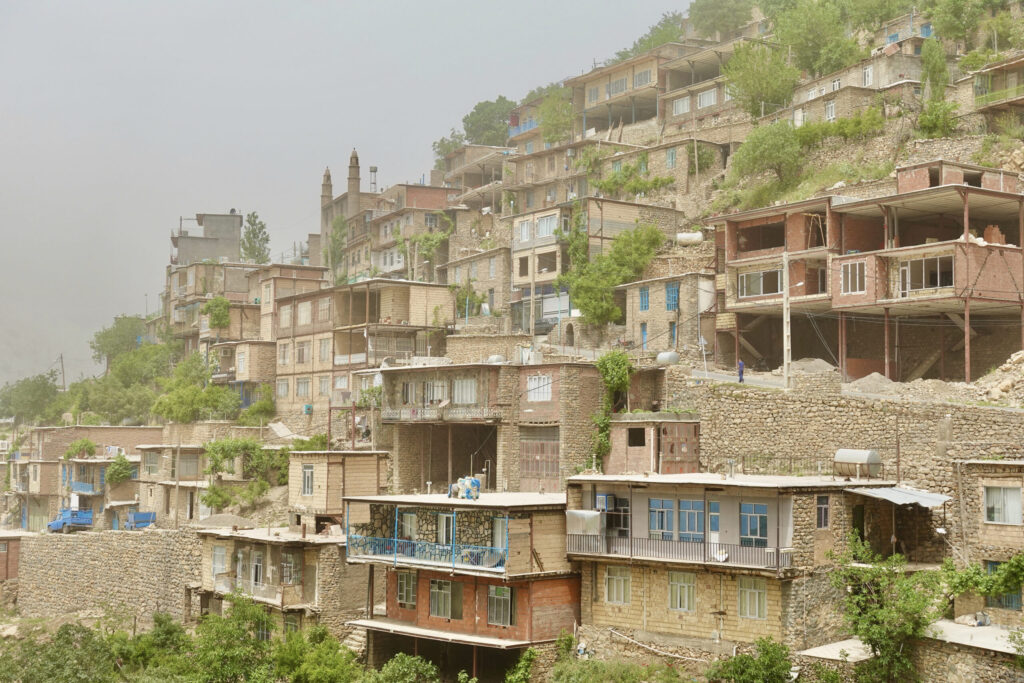
The thick dust doesn't really make us want to visit the village and since it's already afternoon, we decide to save ourselves the steep climb up to the top of the pass and let a jeep transport us to the top. We find an idyllic campsite around a fireplace on a large meadow surrounded by mountains.
Our last kilometers in Kurdistan
The next morning the sky clears and we can really enjoy the last stage through Kurdistan again. We cycle along a river through a gorge back to a bigger main road in the city of Sarvabad.
We take a break and notice the many meters of altitude stuck in our legs and back and the energy is missing and since the time is a bit pressing, we decide to shorten the way to Sanandaj with a transfer. Since there are no major long-distance buses here, the only alternative is a jeep transfer. While a few helpful locals organize our transfer, an old shepherd in traditional Kurdish attire appears, who seems to be straight out of a National Geographic magazine. Two worlds collide here as he suddenly approaches me and takes an interest in our trip. A nice encounter and a nice farewell from Kurdistan.
In total we spent a week in Kurdistan and were overwhelmed by the scenic beauty and fascinated how the people have built villages in these rugged mountains and with what pride they carry on their Kurdish traditions. For us it was an interesting insight into a completely unknown corner of the world and we were once again surprised by the diversity of Iran. Only one thing seems to be the same everywhere in Iran: the incredible hospitality.
We would have loved to spend more time in the Kurdish mountains, but slowly our time in Iran is running out. We wanted to visit the province of Gilan on the Caspian Sea before our visa expired, so we decide to take a bus from the Kurdish provincial capital of Sanandaj to Qazvin and take a break there before continuing on to Gilan.
Café hopping in an old caravanserai in Qazvin
The break in Qazvin is much needed, as we still feel the many meters of altitude of Kurdistan in our legs. We stay in a nice traditional hotel in the old town and take a day to explore the pleasant city. The capital of the province of the same name is located on a plateau at the crossroads of several important trade routes. Qazvin (395'000 inhabitants) was even the capital of Persia from 1524 - 1576 under the Safavids and there are some magnificent buildings like the royal palace Chehel Sotun in a large garden. And even though we do some sightseeing, we spend the day mainly drinking coffee and lemonade in the stunning Sa'd-al Saltaneh caravanserai.
The huge, beautifully restored Qajar-era caravanserai is at the same time also a beautiful bazaar and in the long, vaulted passages between the spacious courtyards there are artists showcasing exquisitely crafted wares like jewelry, ceramics, paintings or carpets. The openings in the domes provide a beautiful play of light and photo motif and we are once again thrilled by the Iranian architecture.
In the courtyards, numerous cafes and restaurants are ideal for a break and we’ve never seen such a density of creative cafes in any Iranian city as in Qazvin, especially the Ersie Optics Café is an absolute eye-catcher. The caravanserai is our absolute highlight and we spend hours in the various cafes, drinking lemonade, eating cake and just being lazy.
A little more rested, we continue the next day over the mountains to the province of Gilan on the Caspian Sea. There, a complete contrast to the rest of Iran awaits us, but more about that in our last blog about Iran.

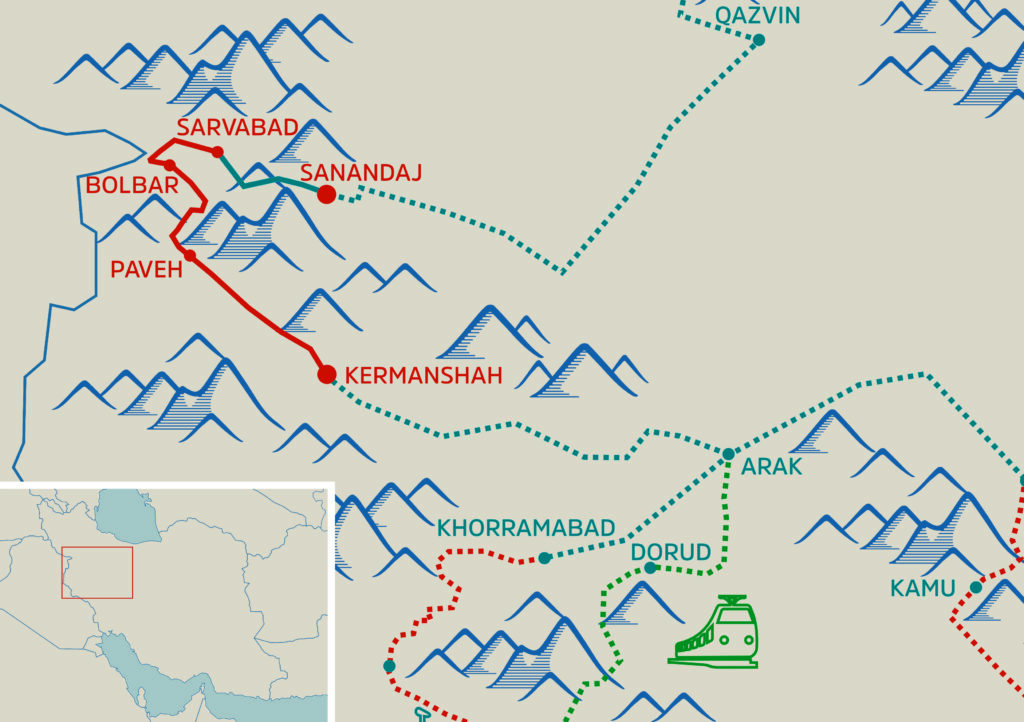
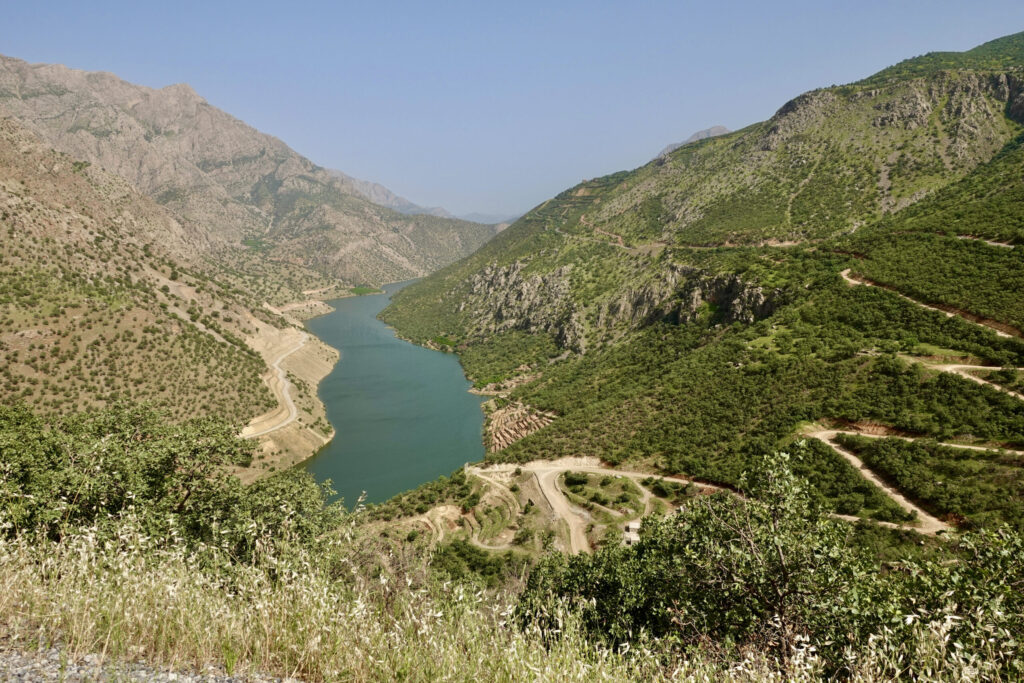
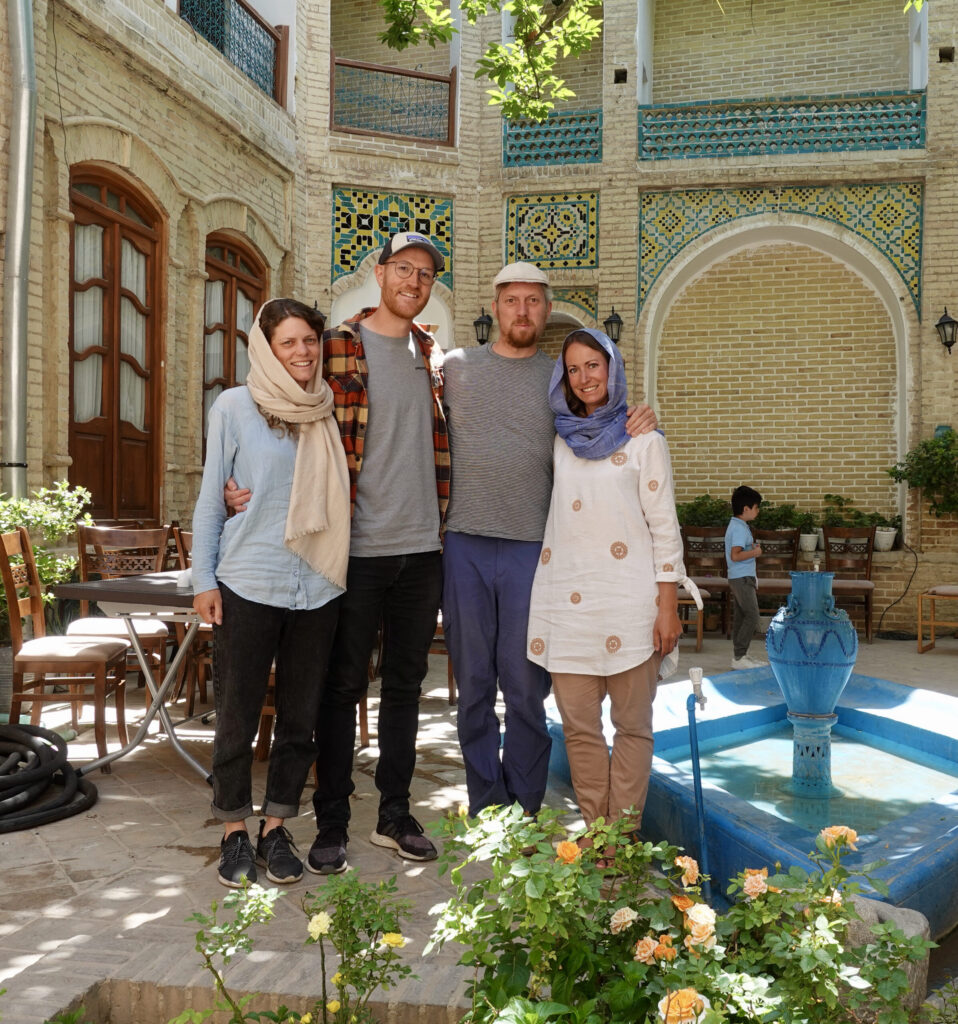
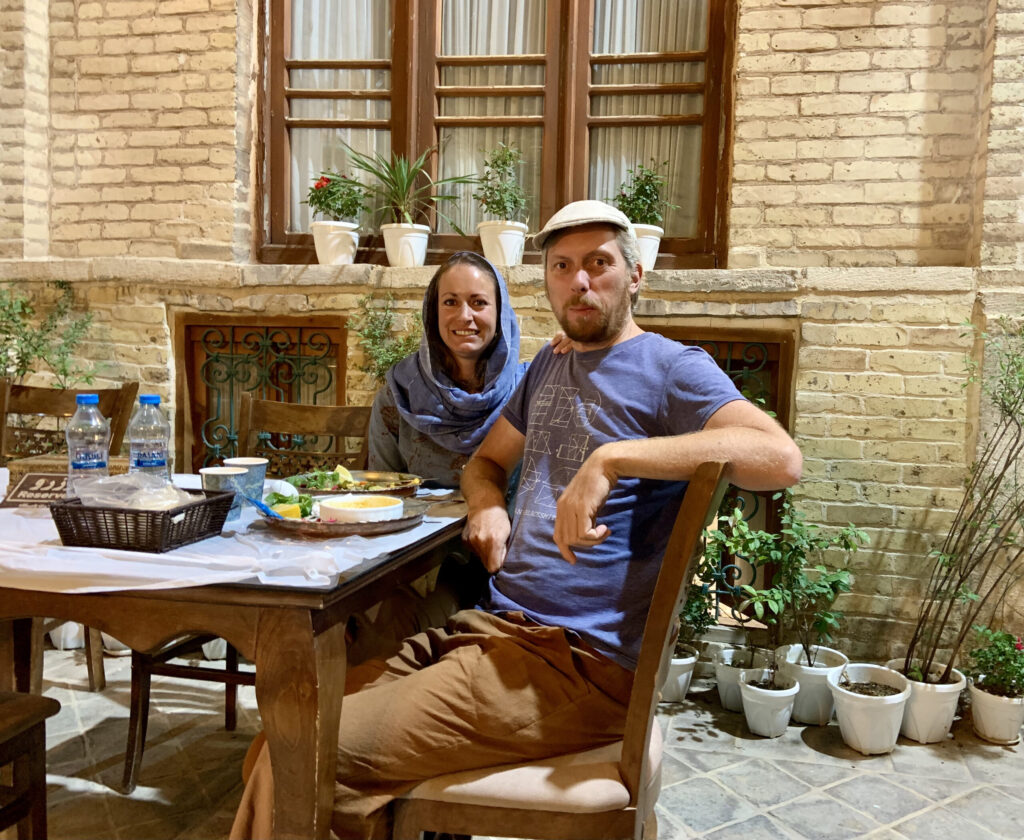
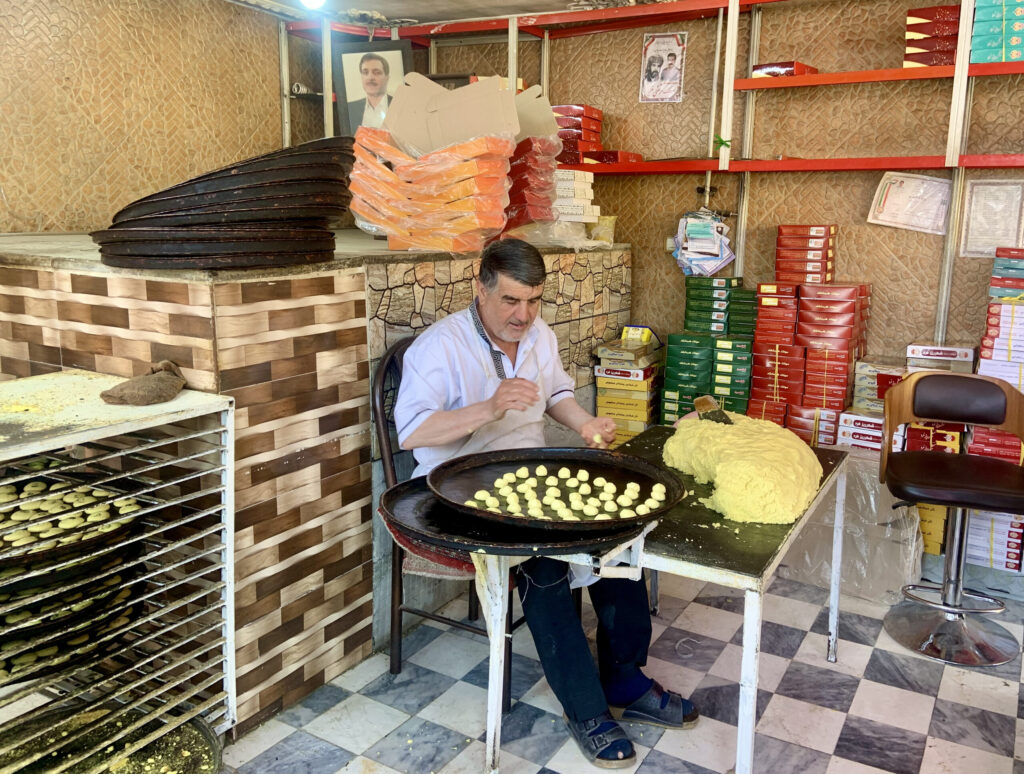
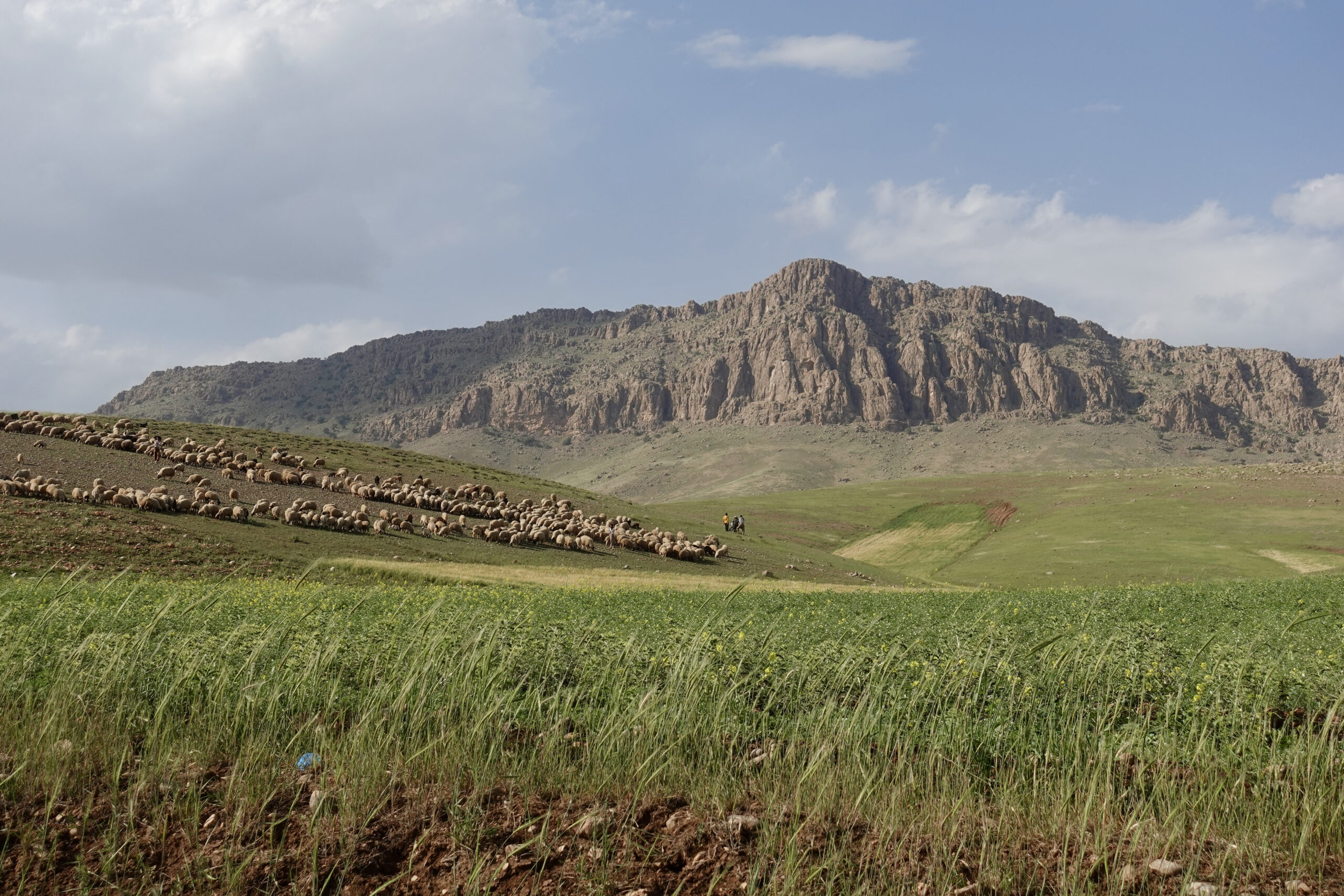
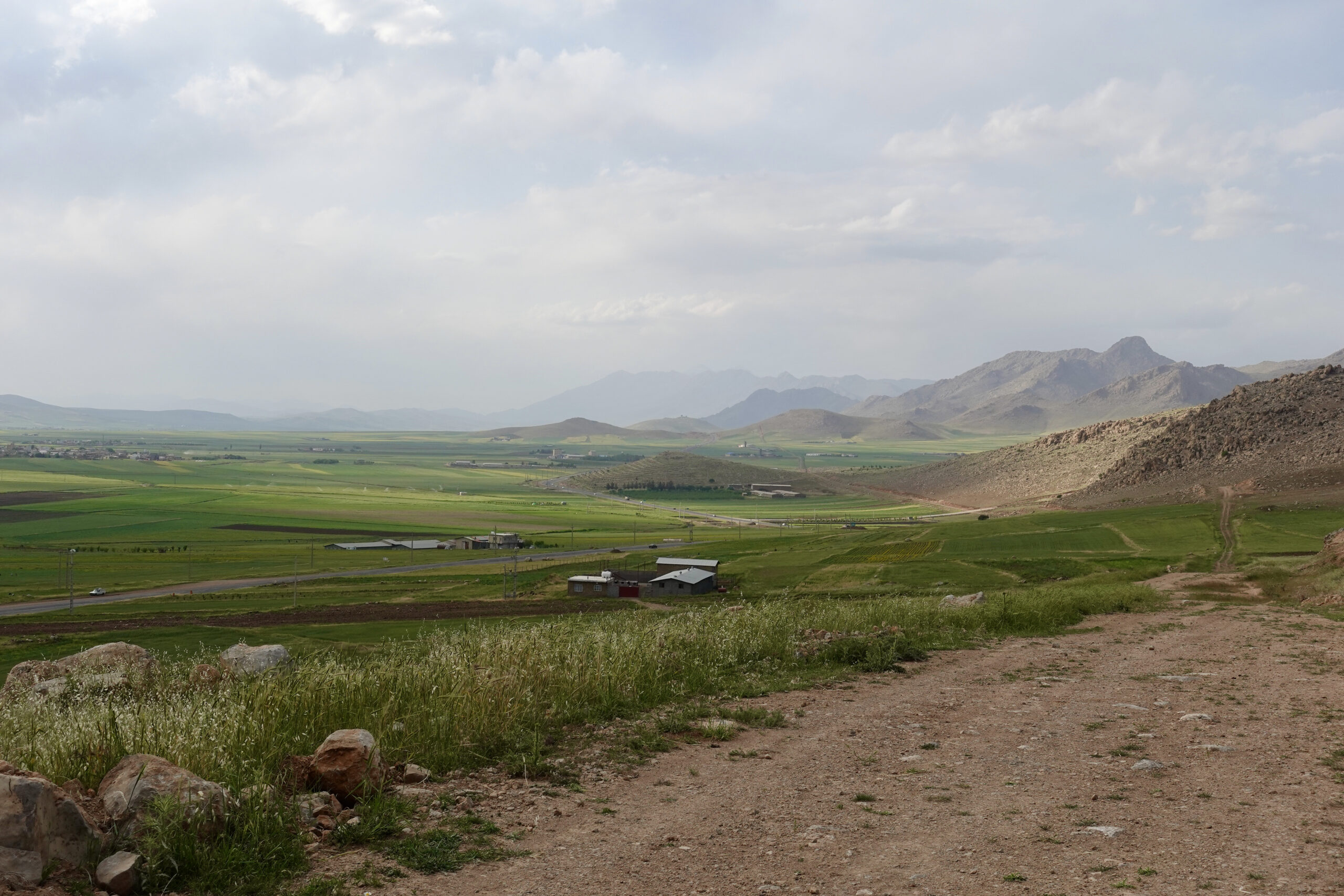
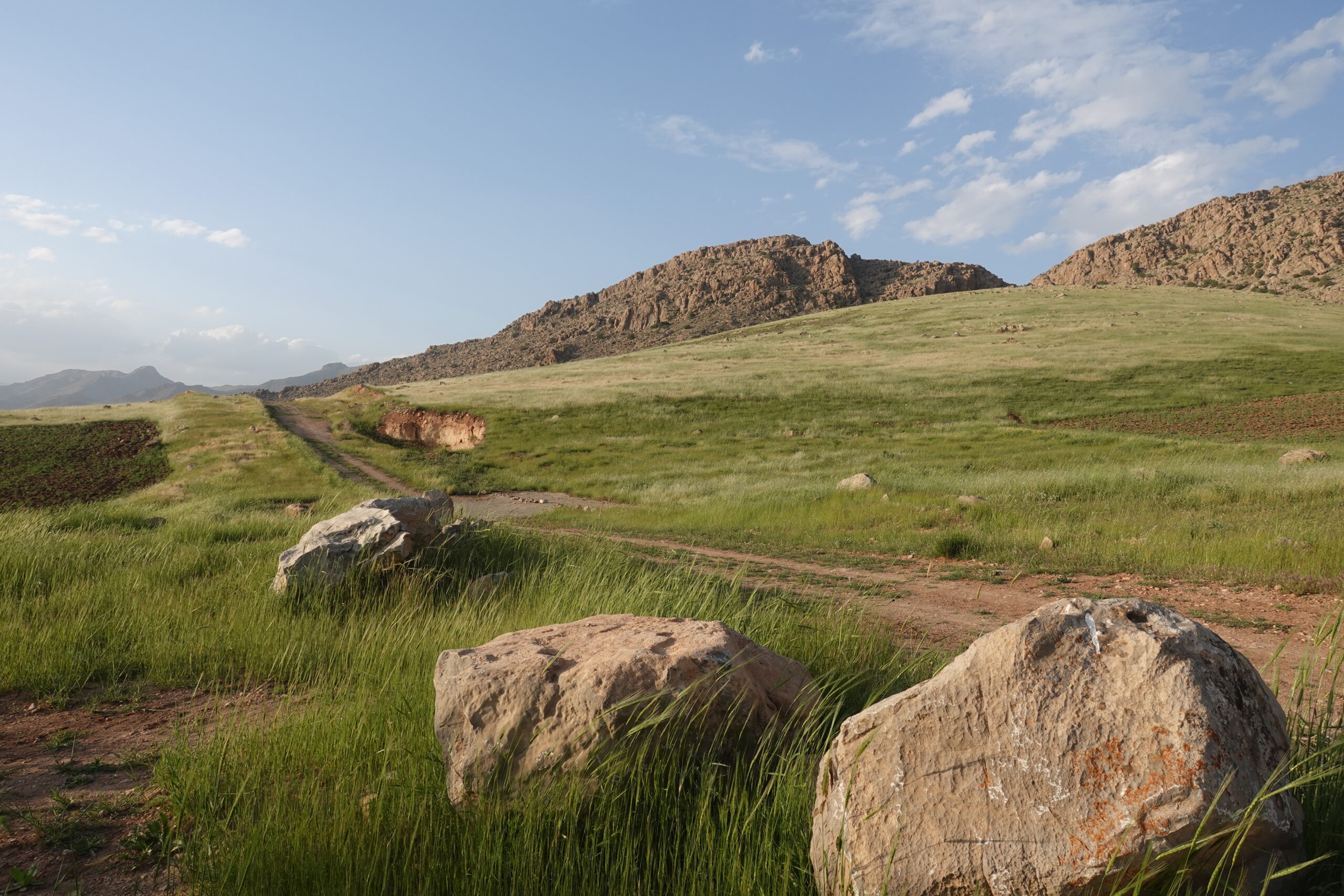
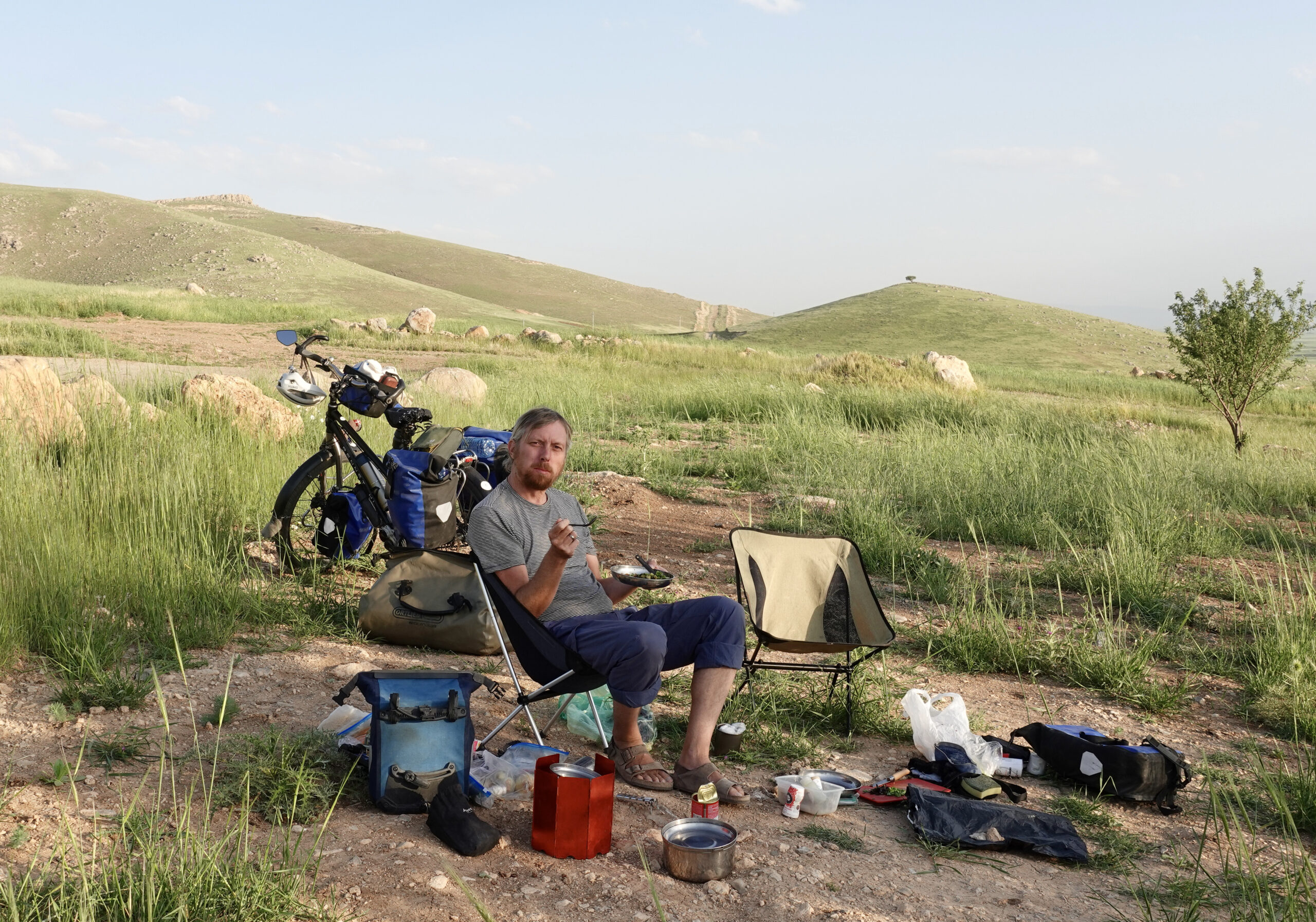
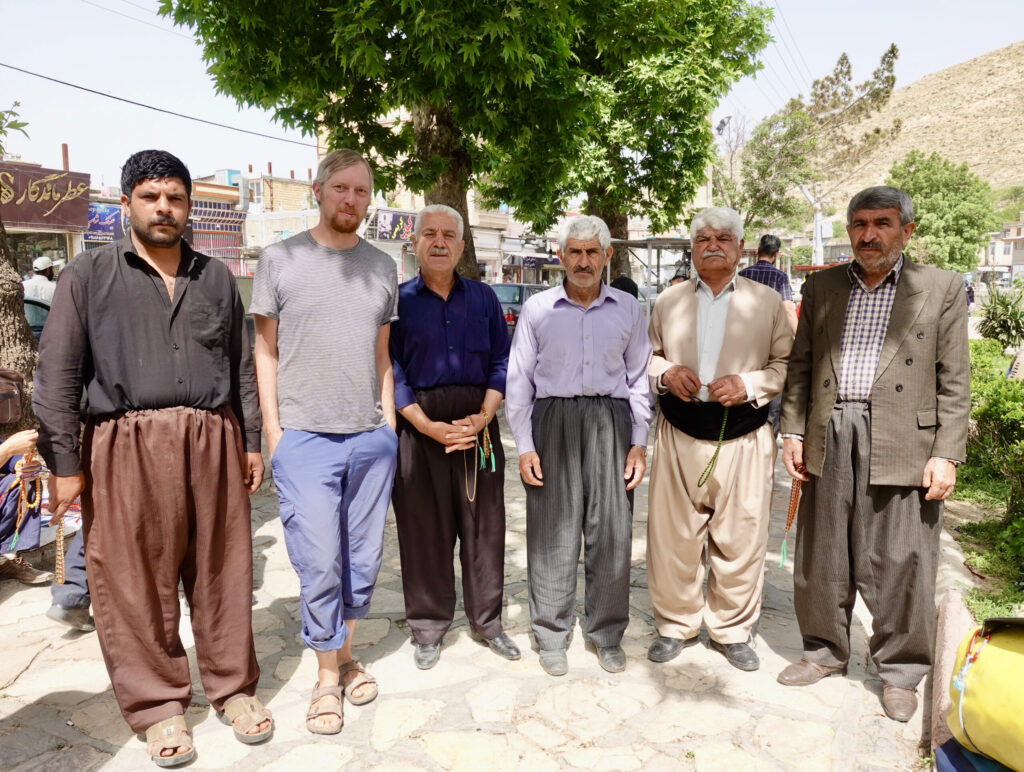
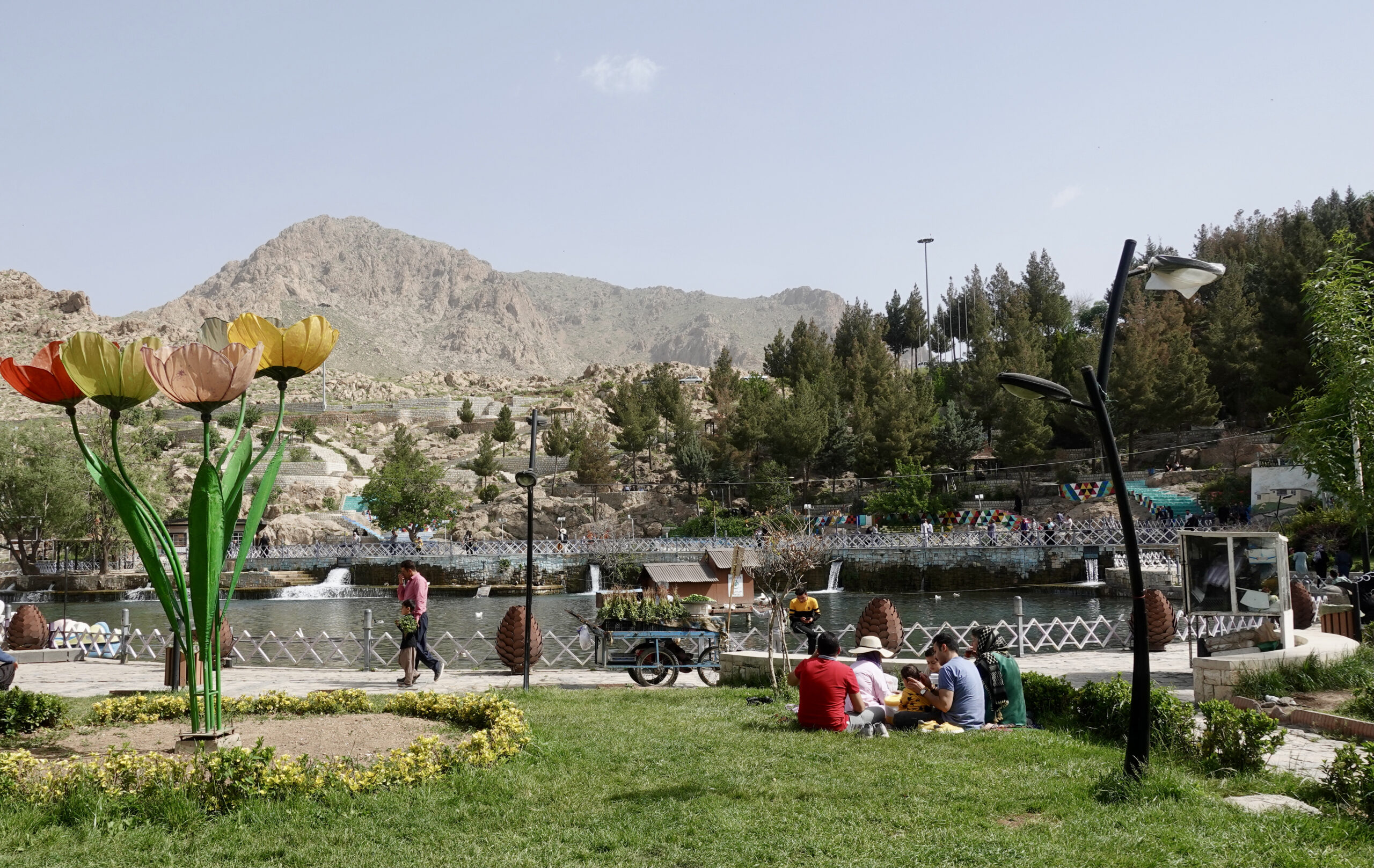
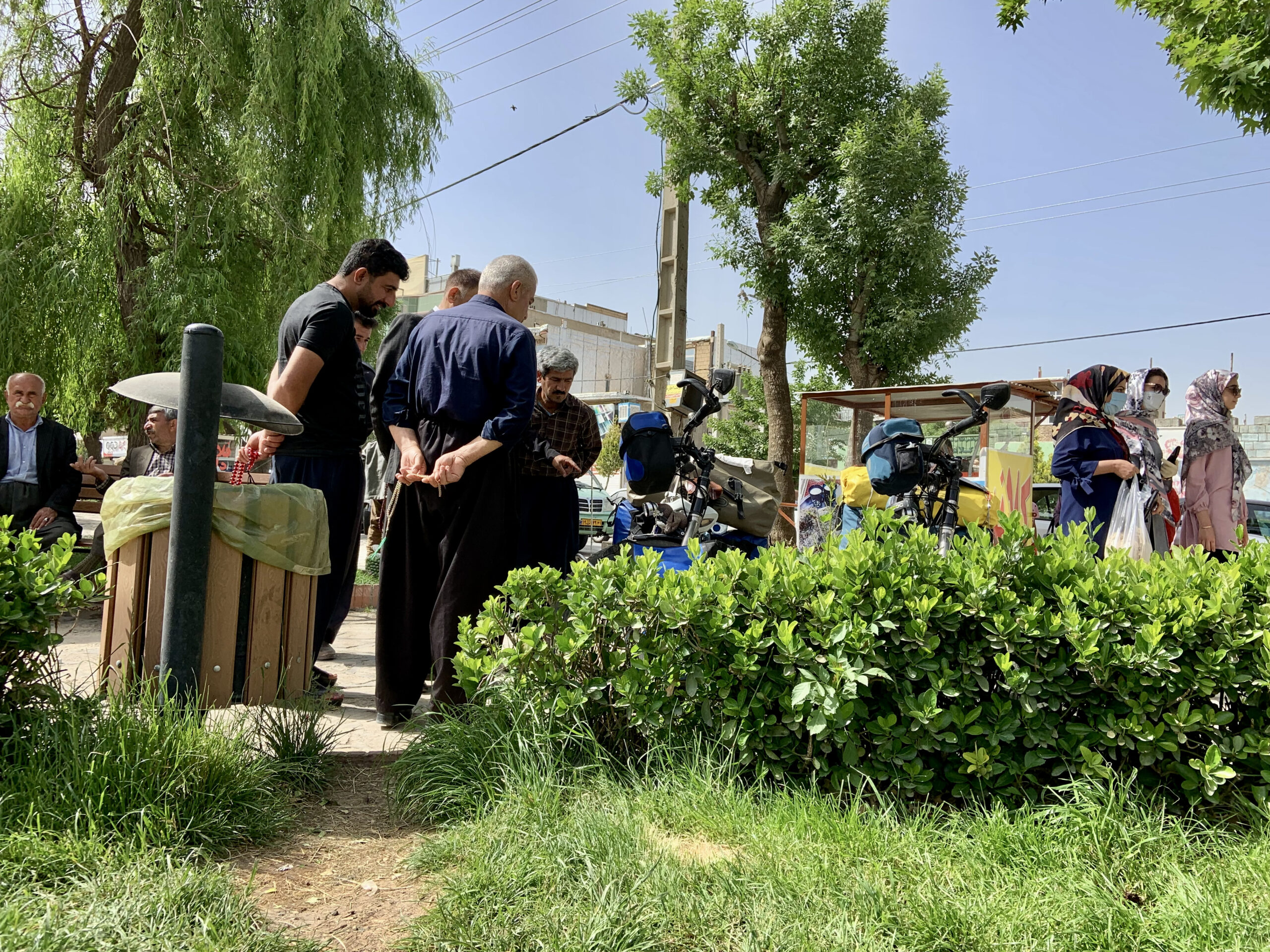
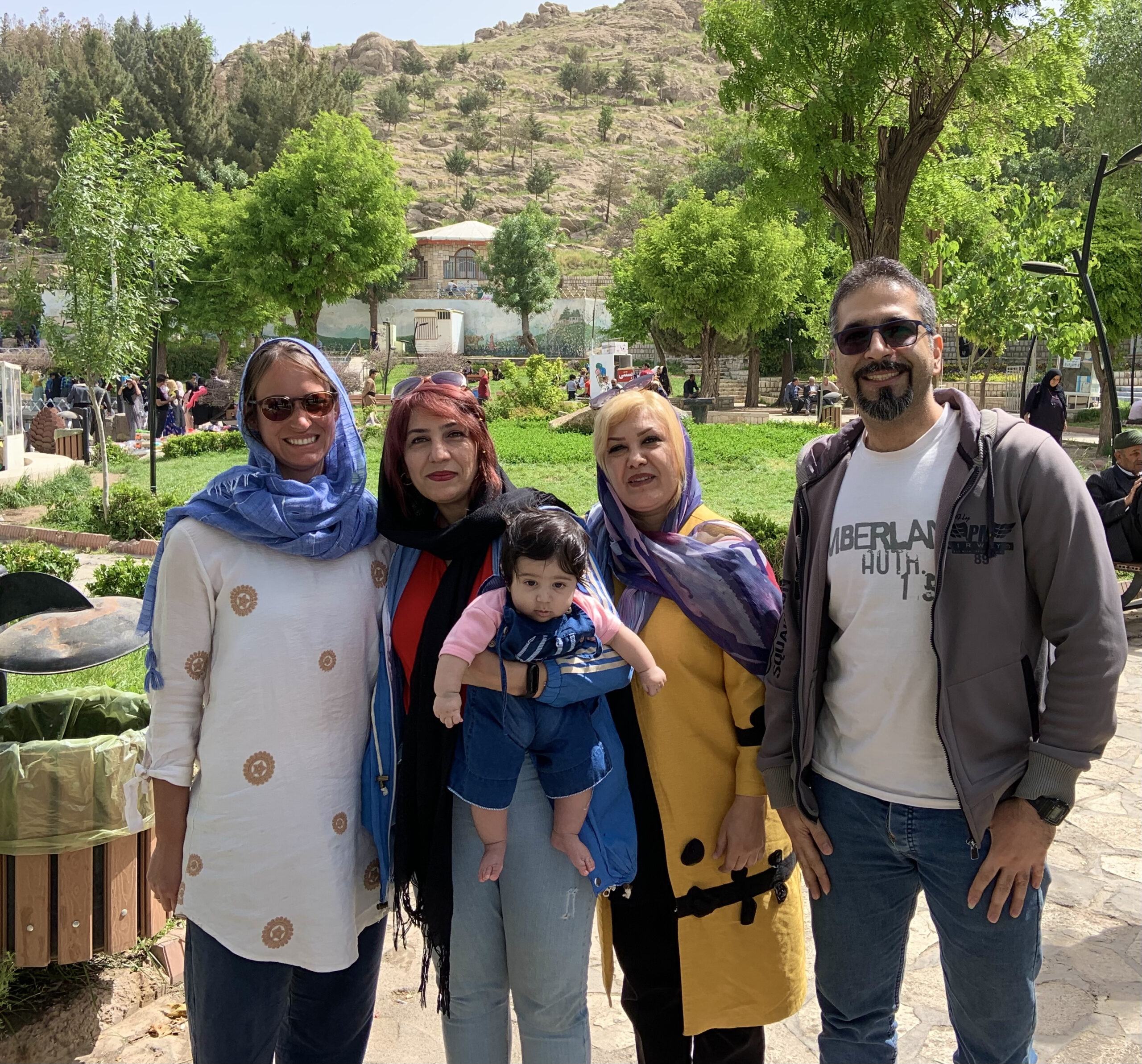
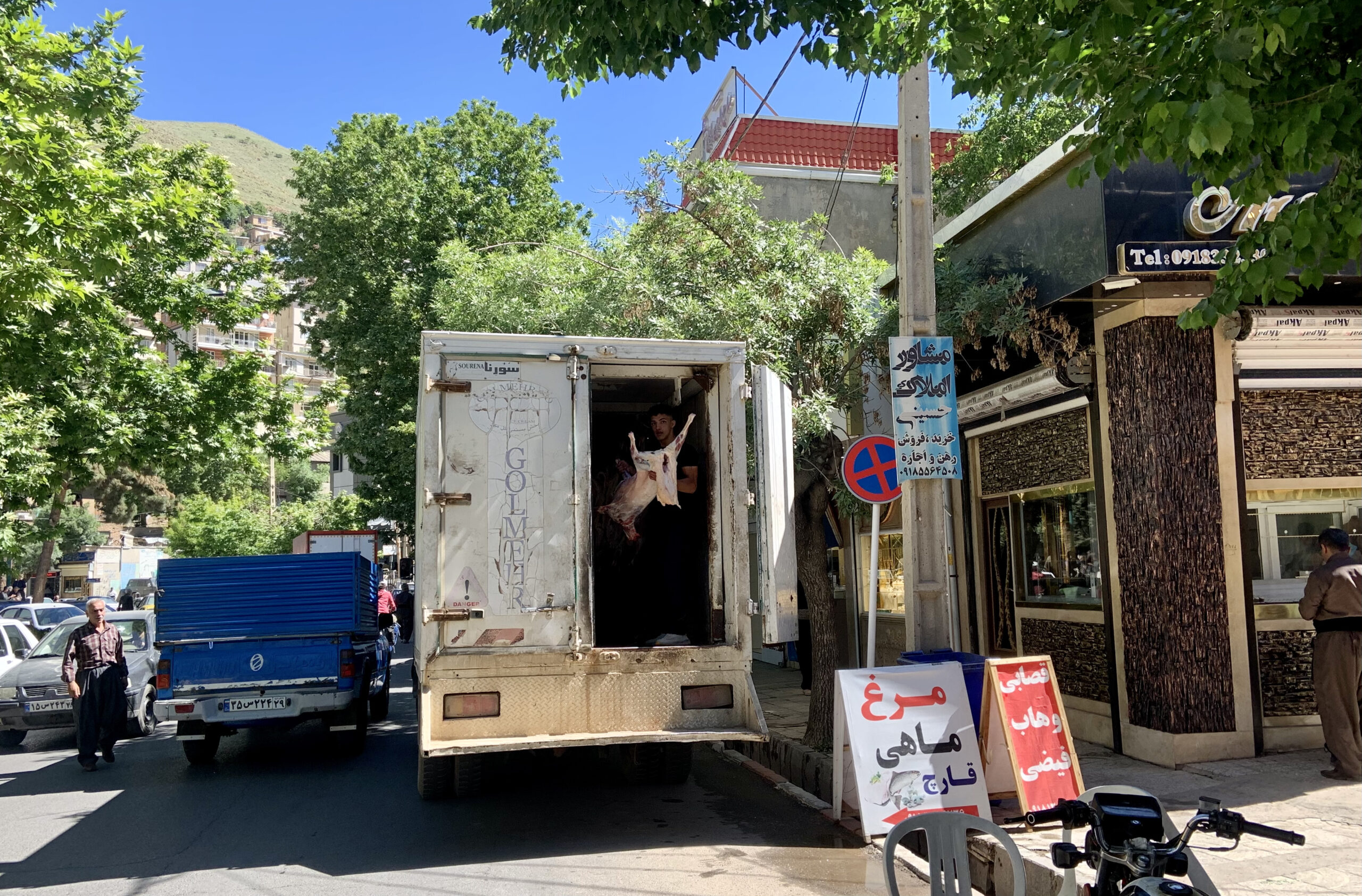
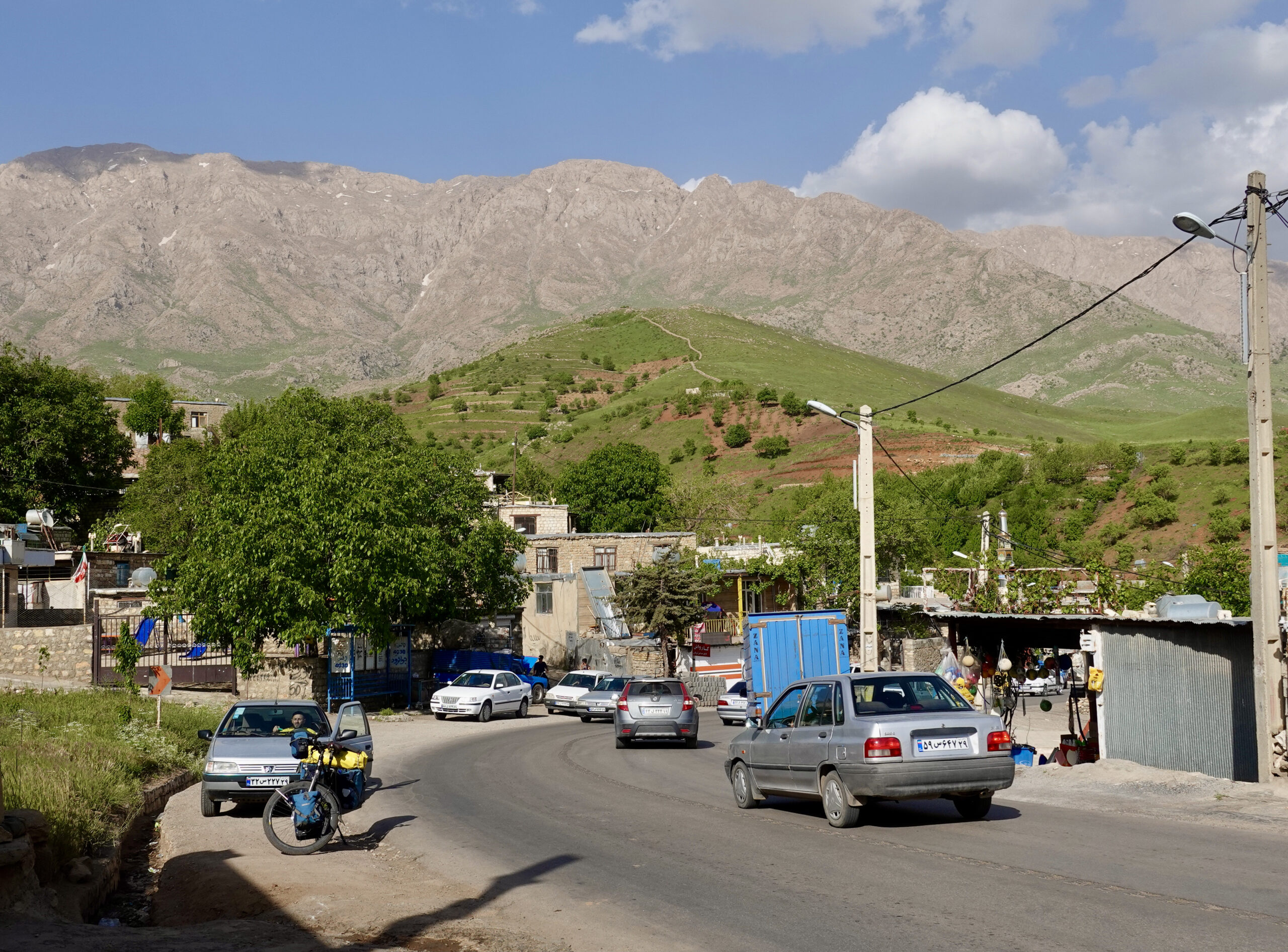
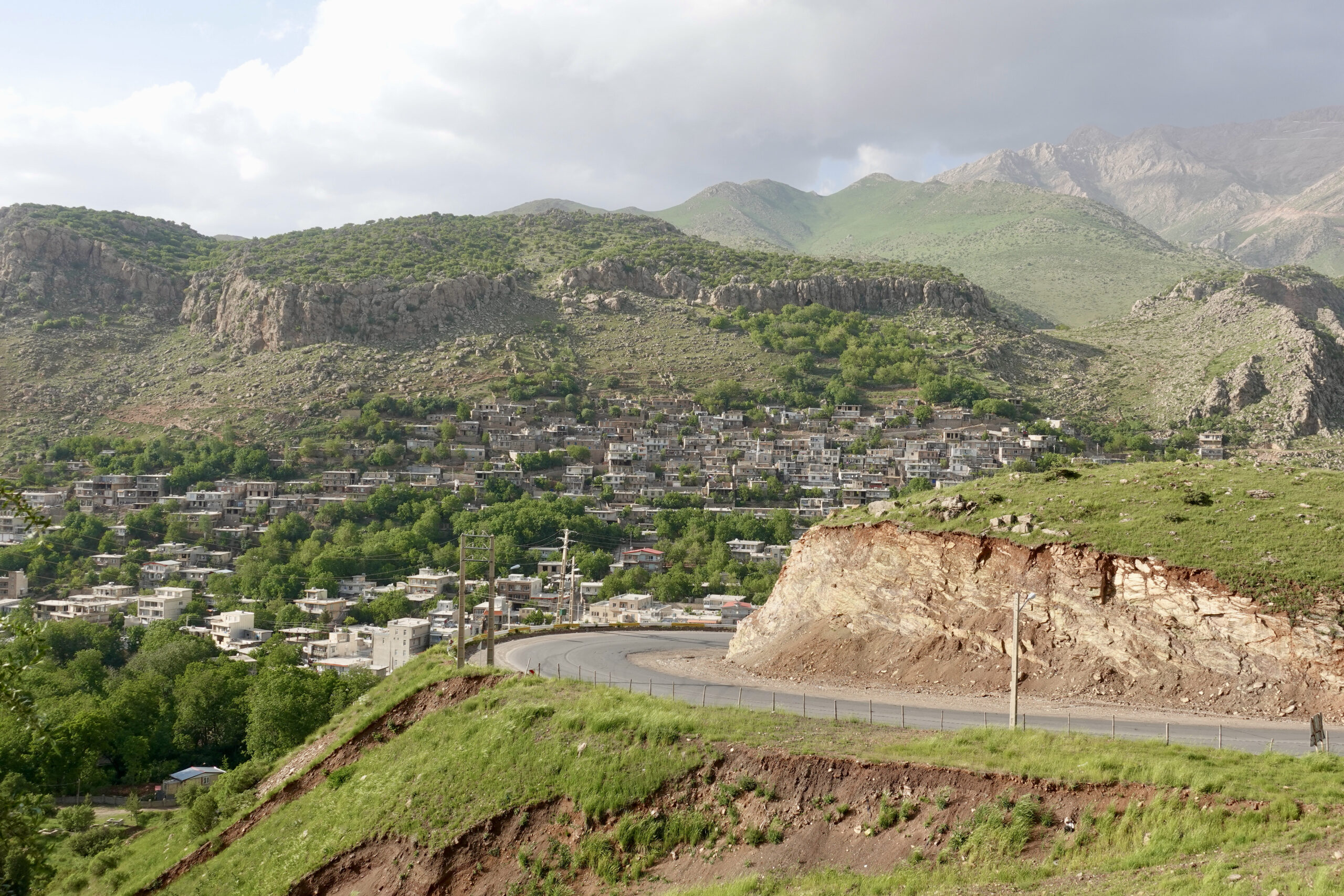
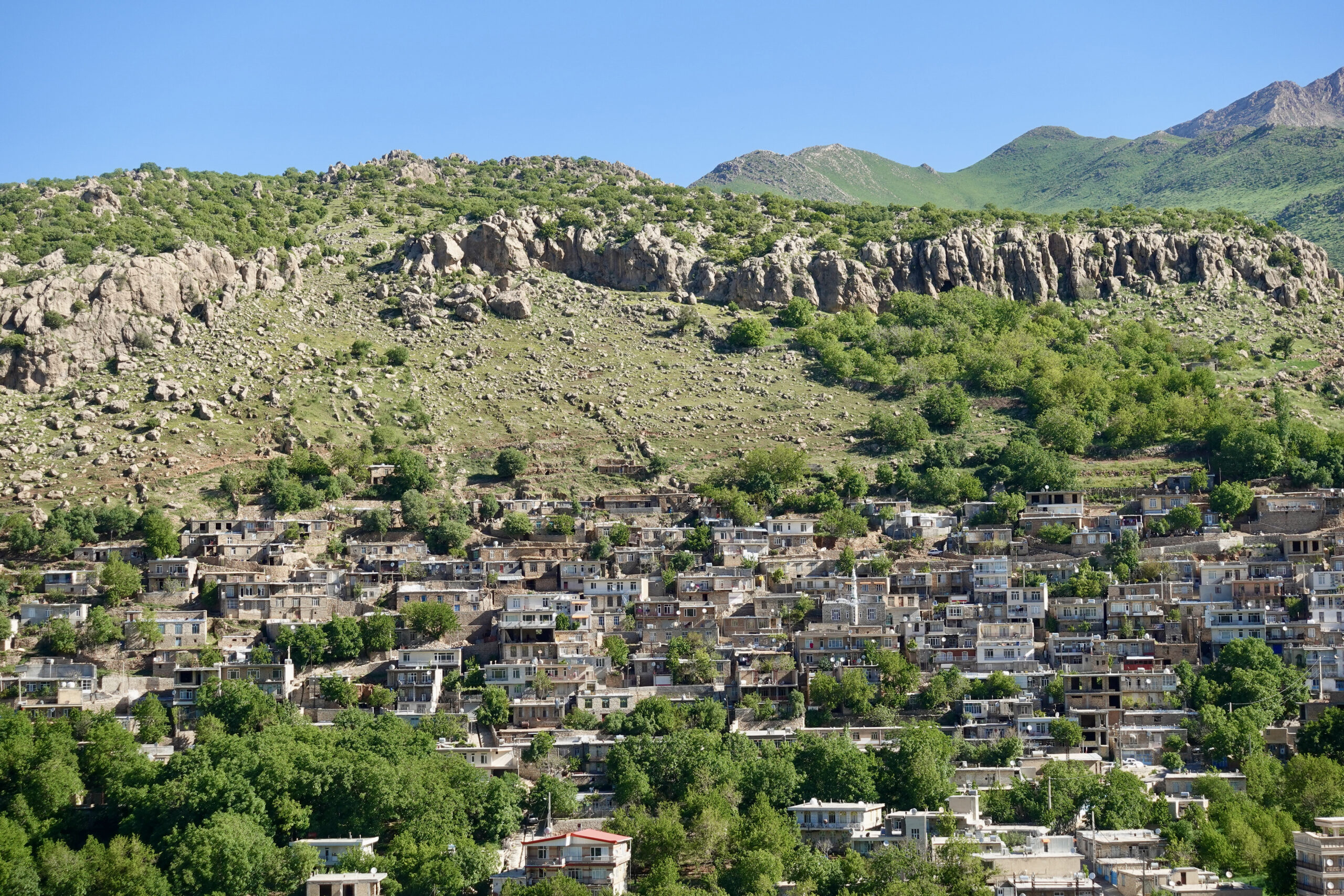
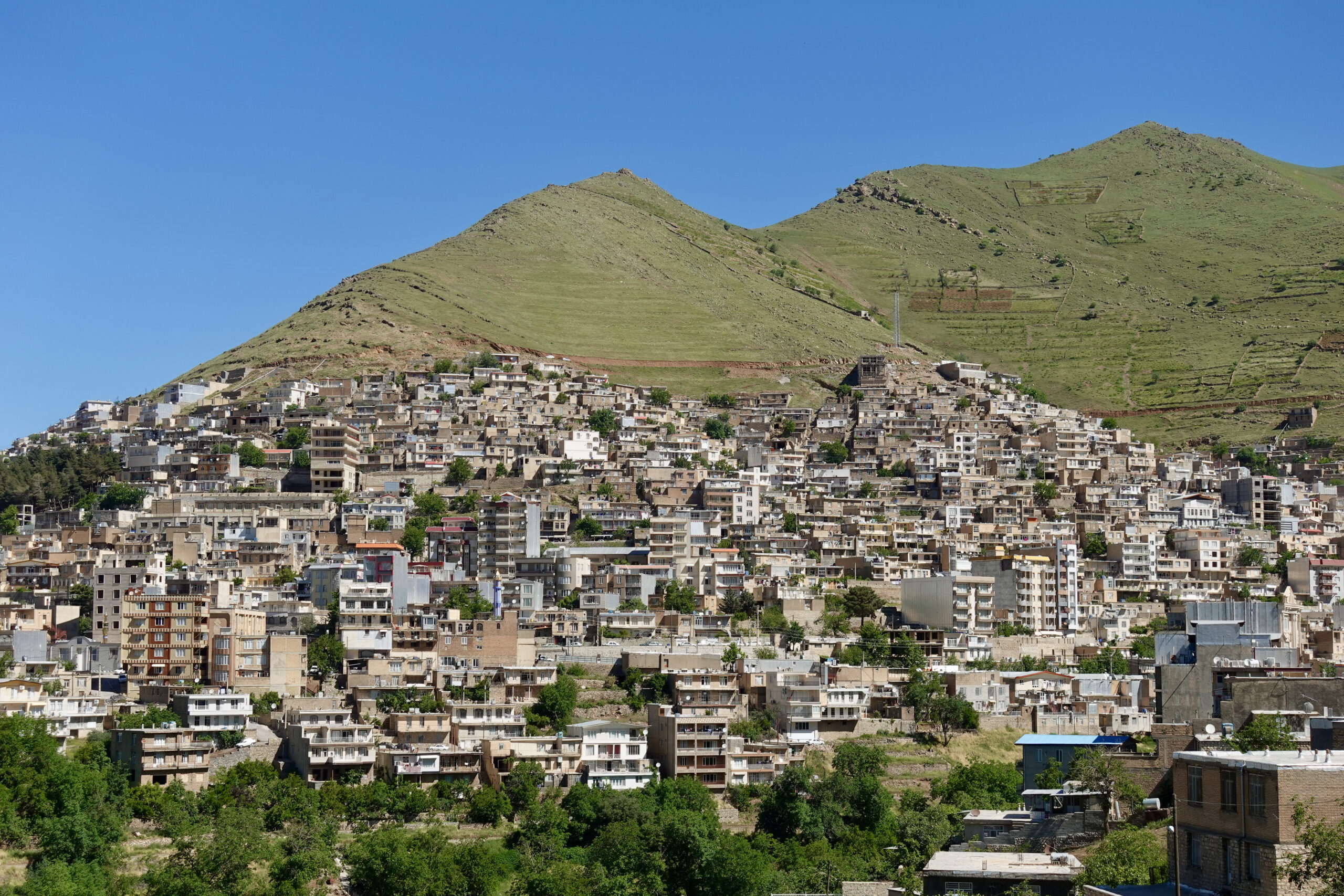
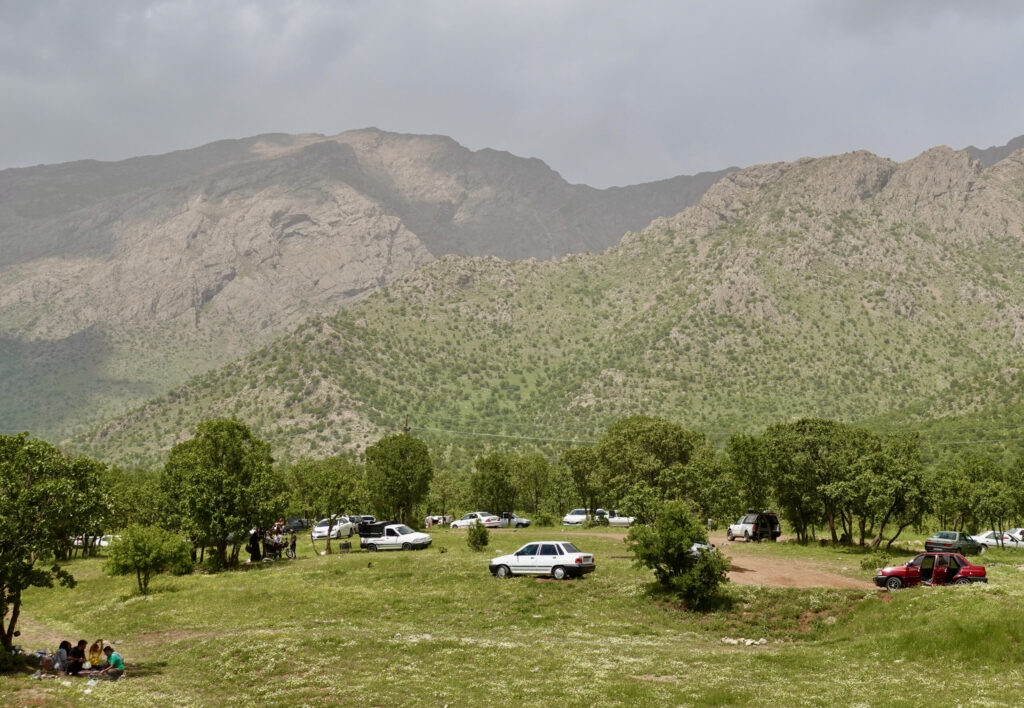
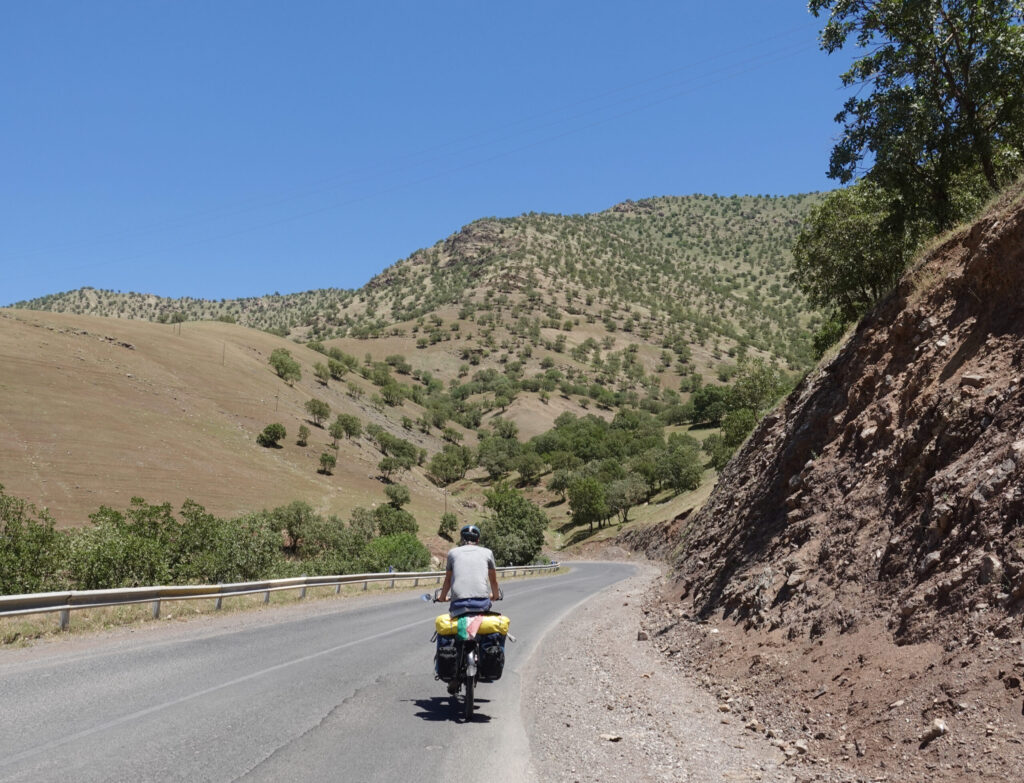
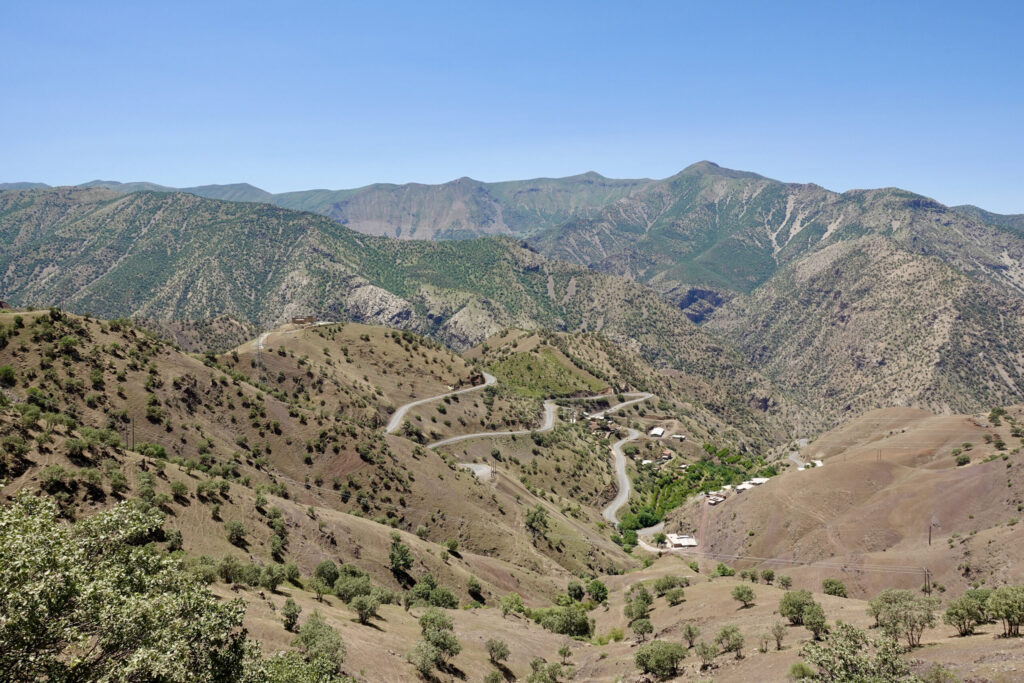
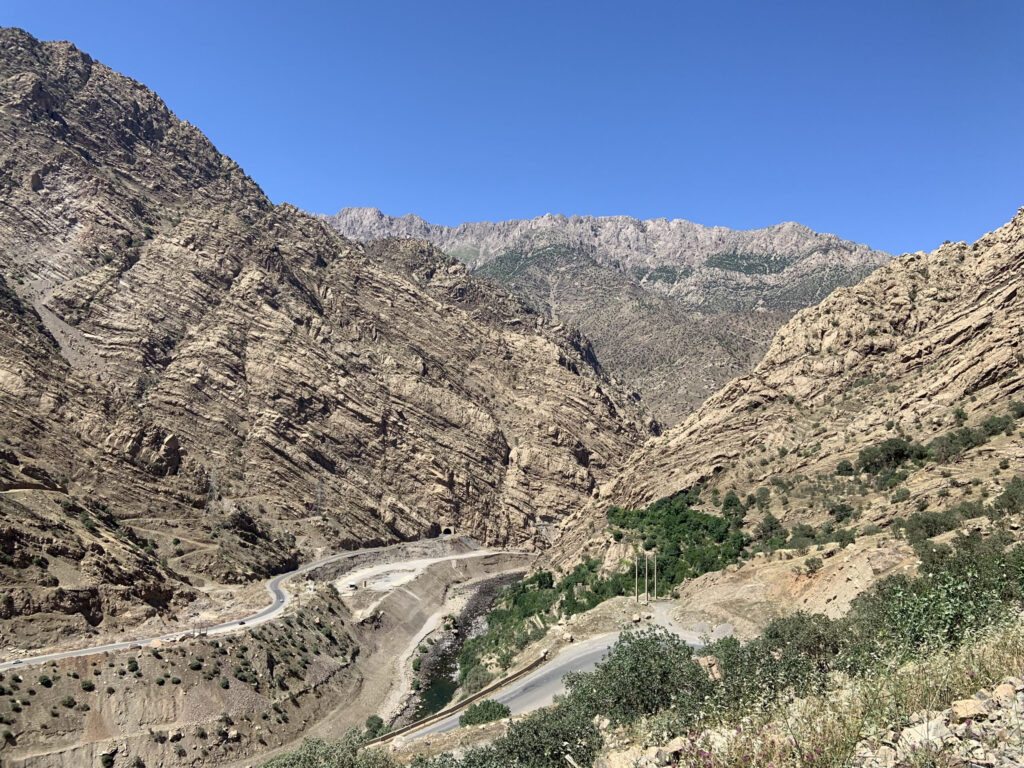
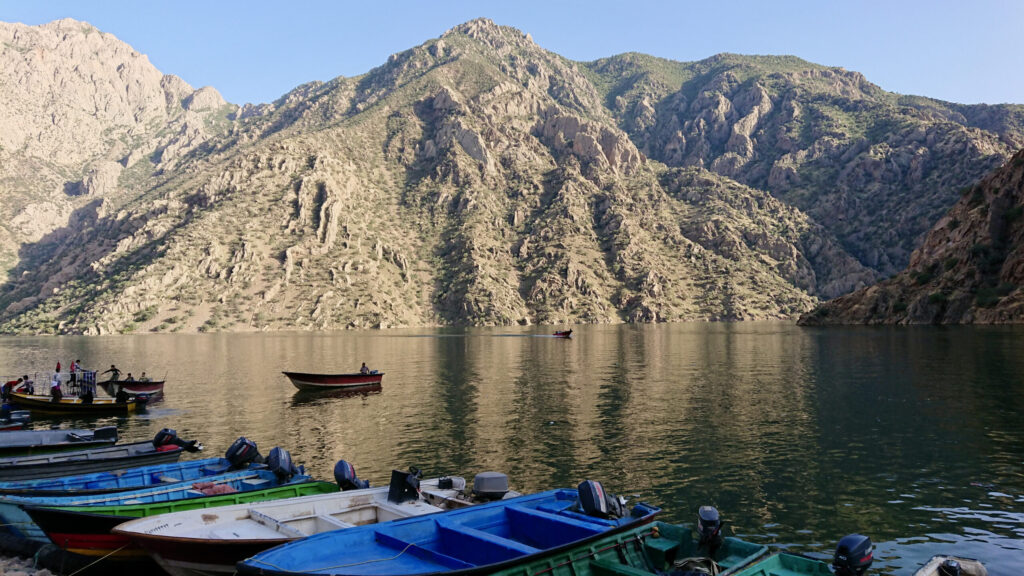
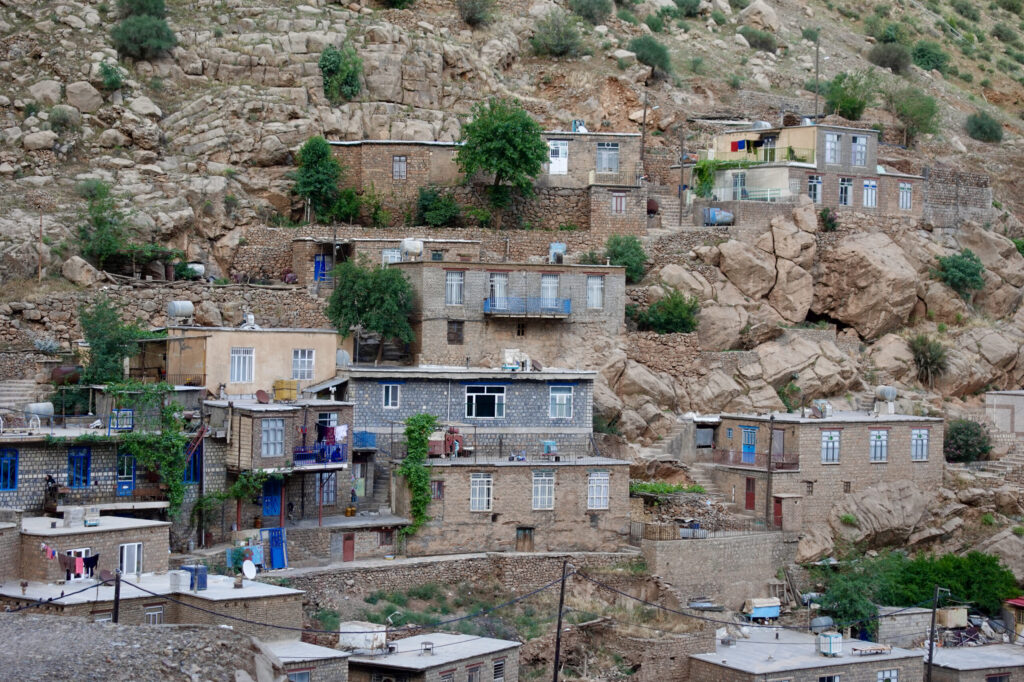

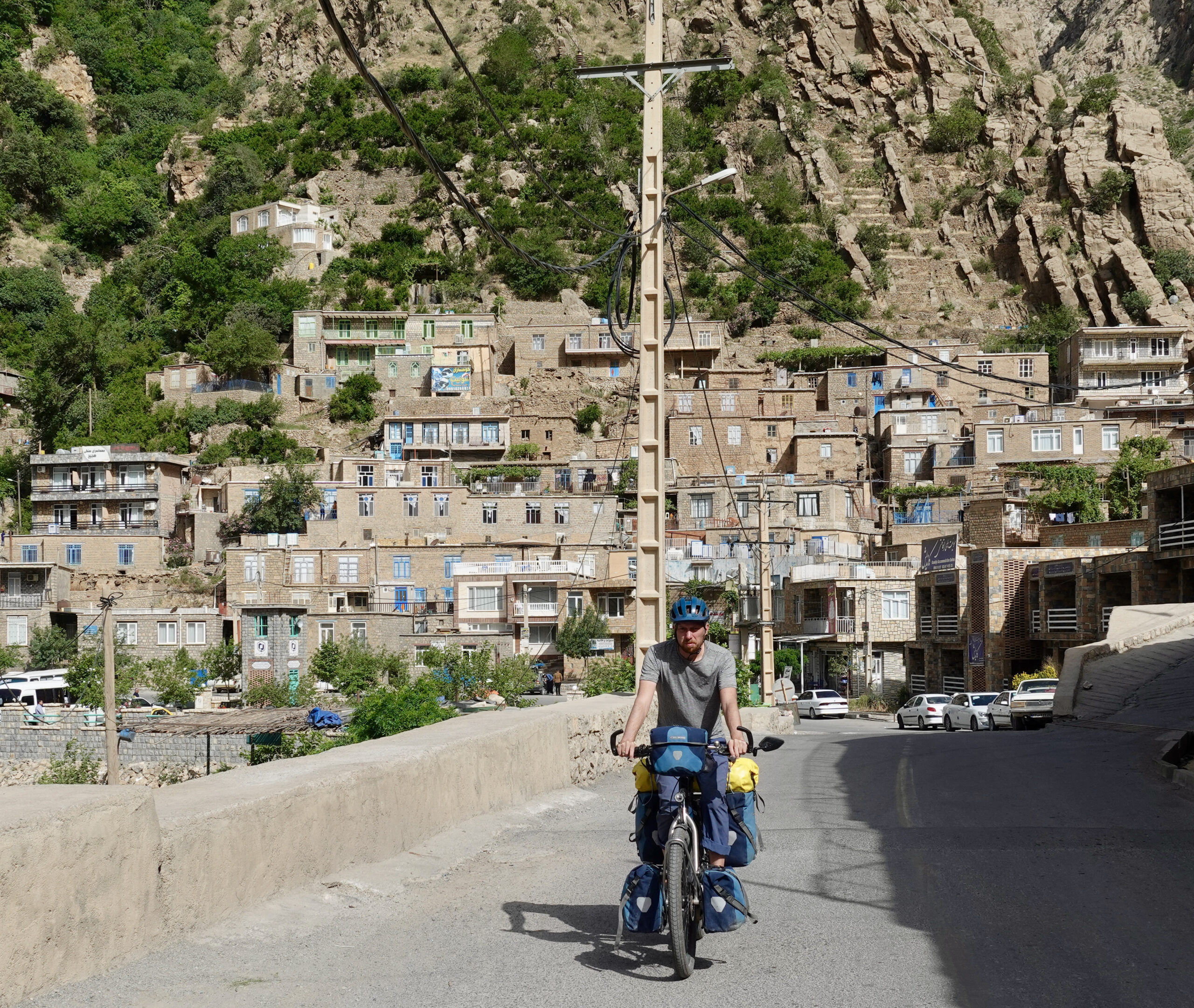
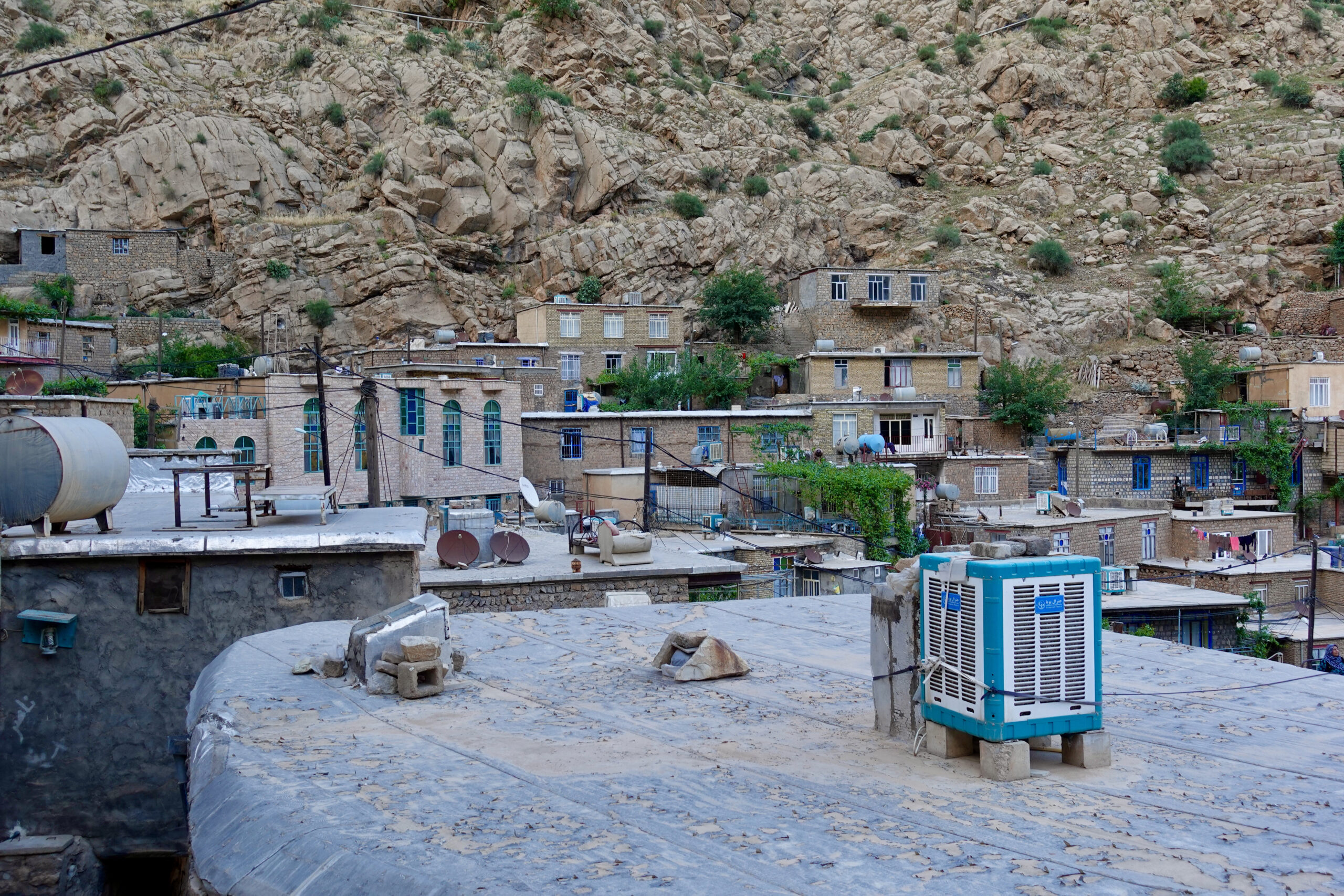
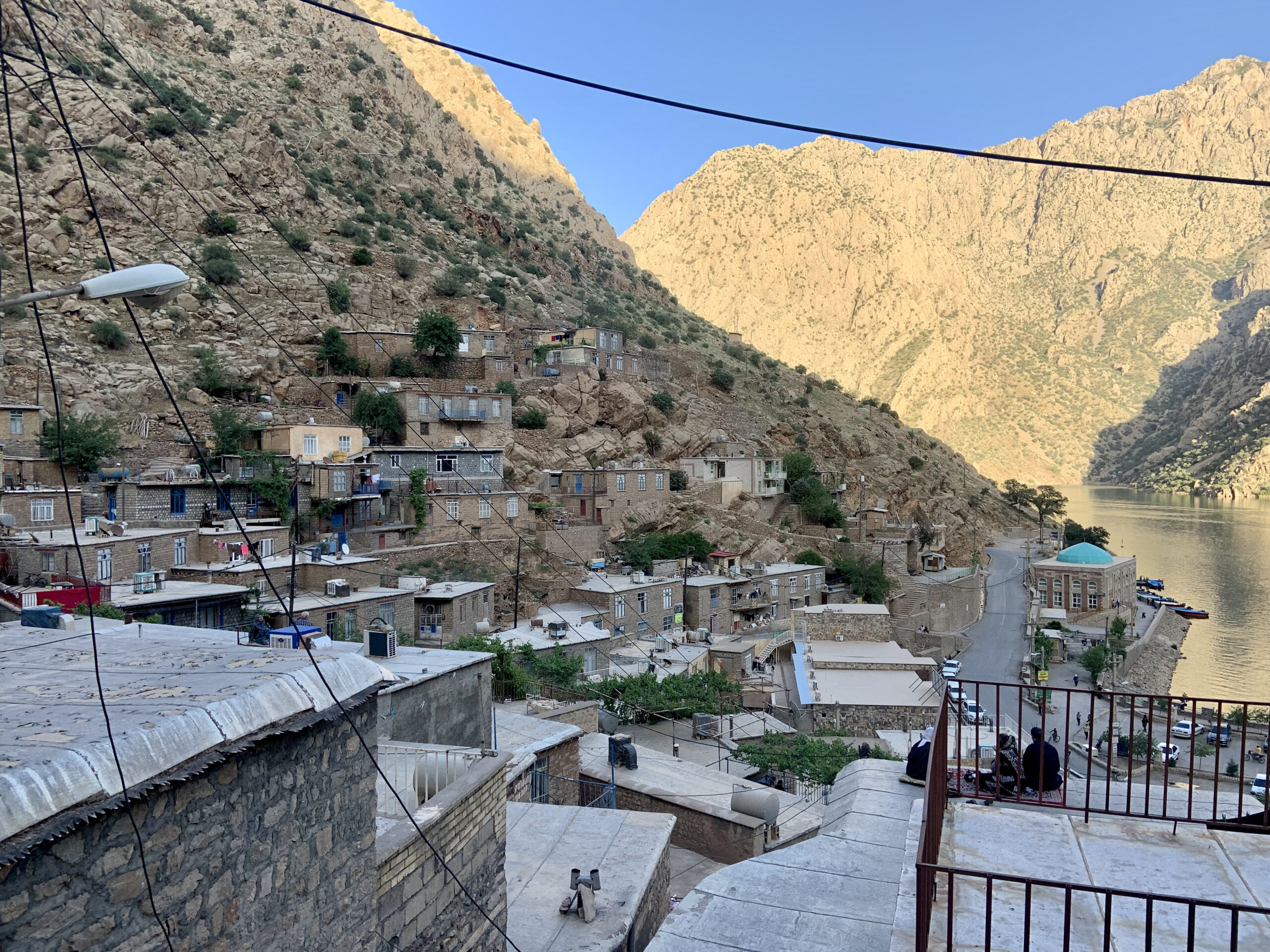
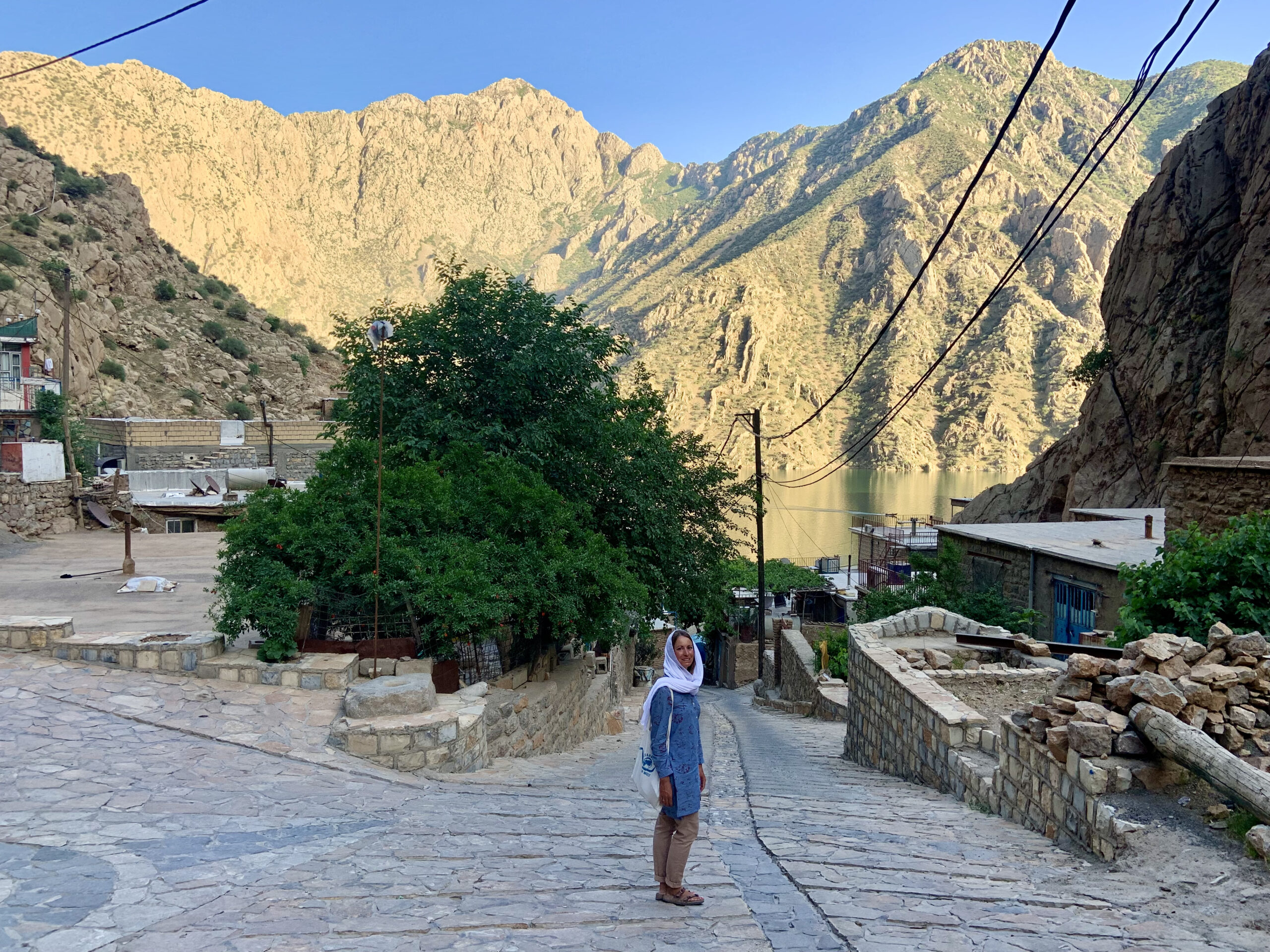
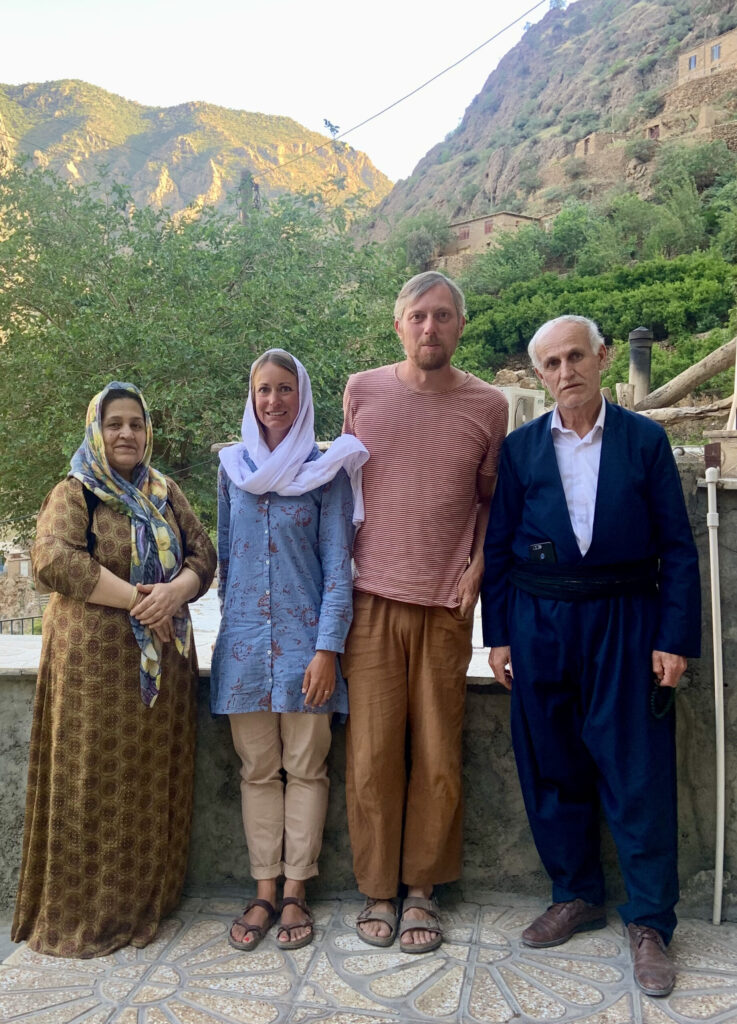
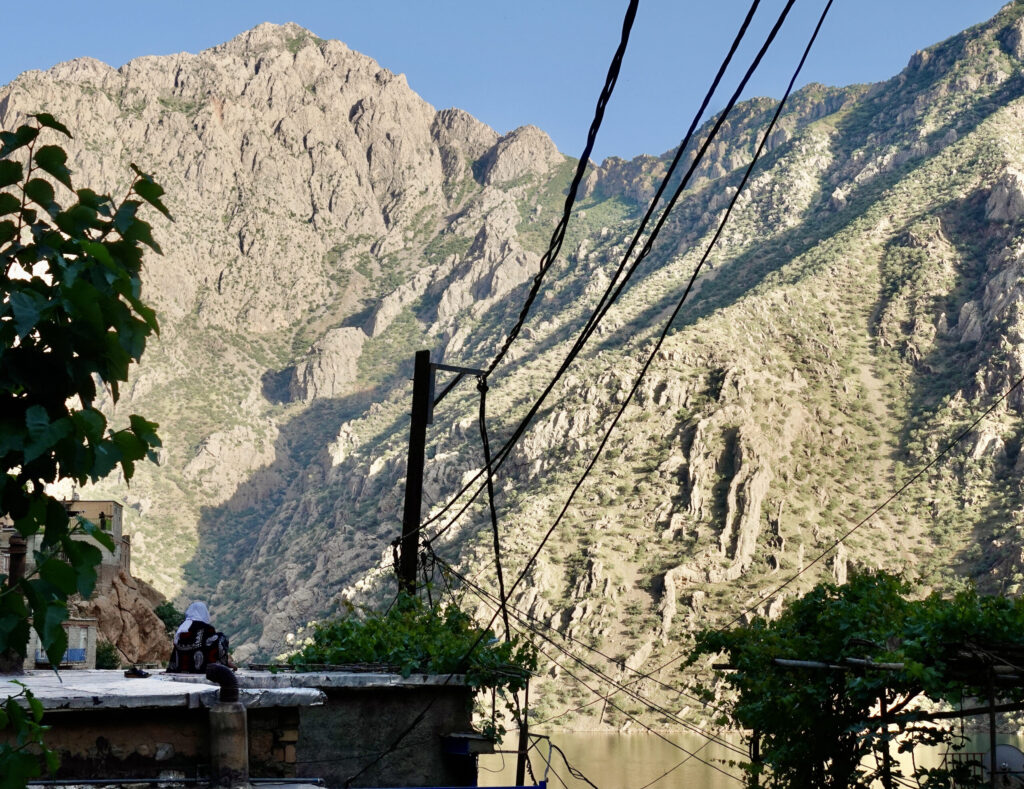
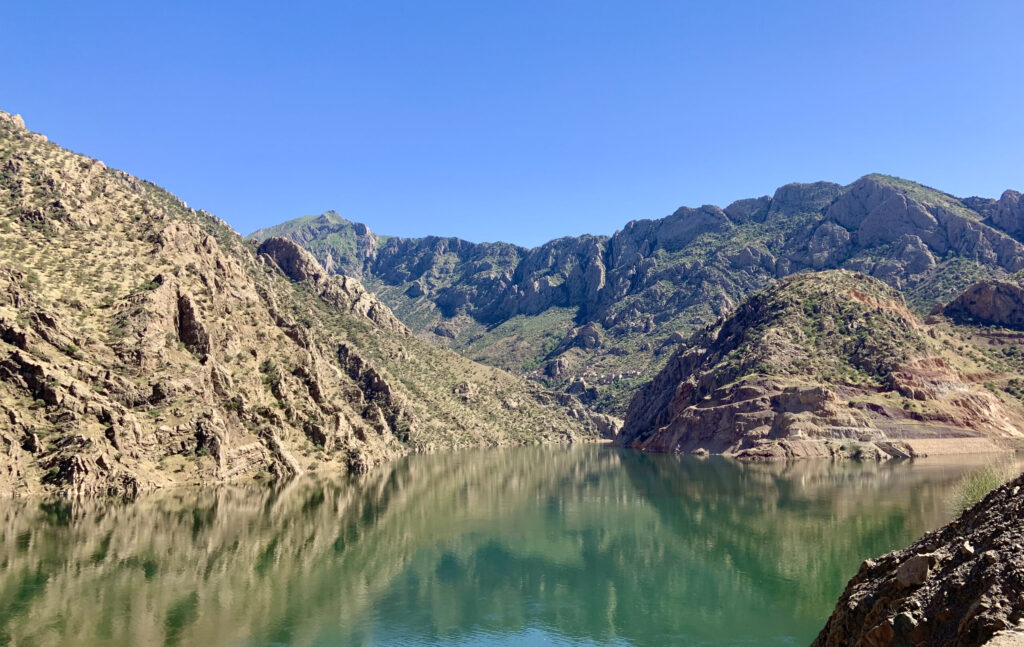
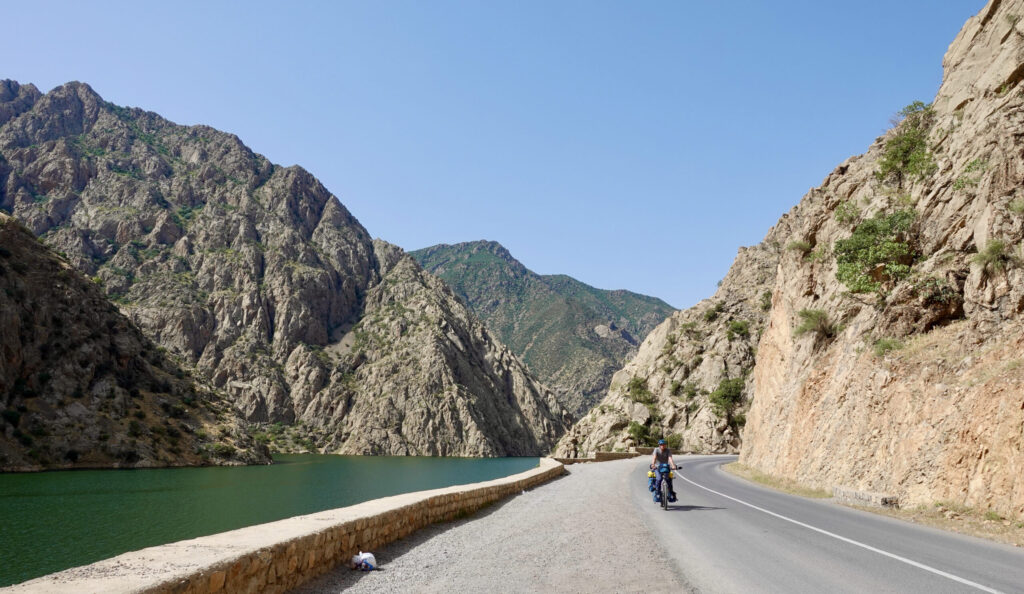
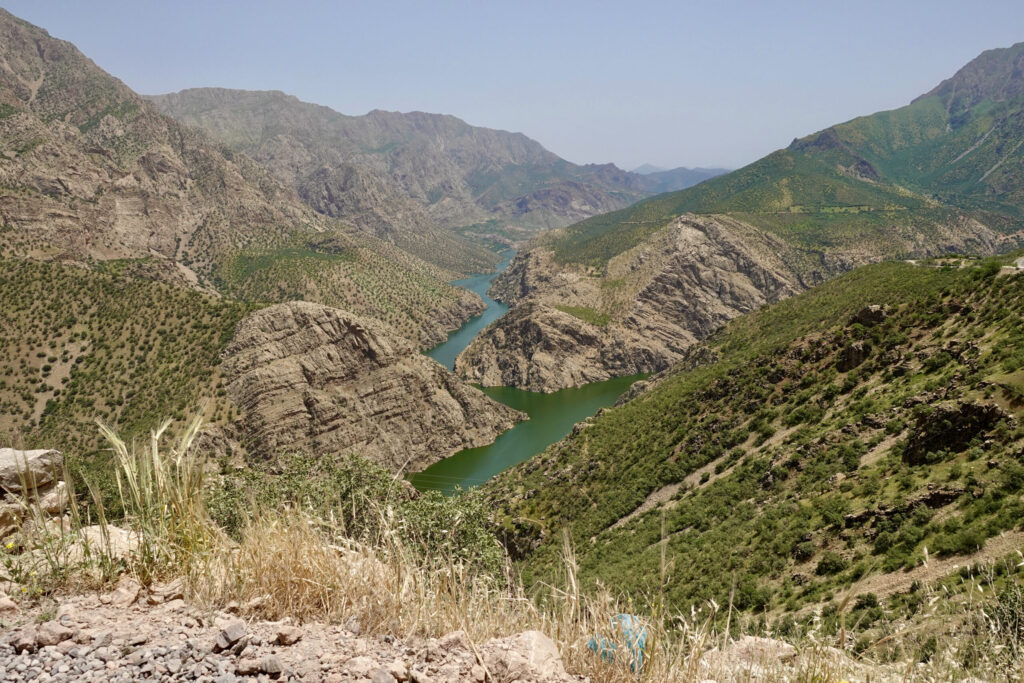
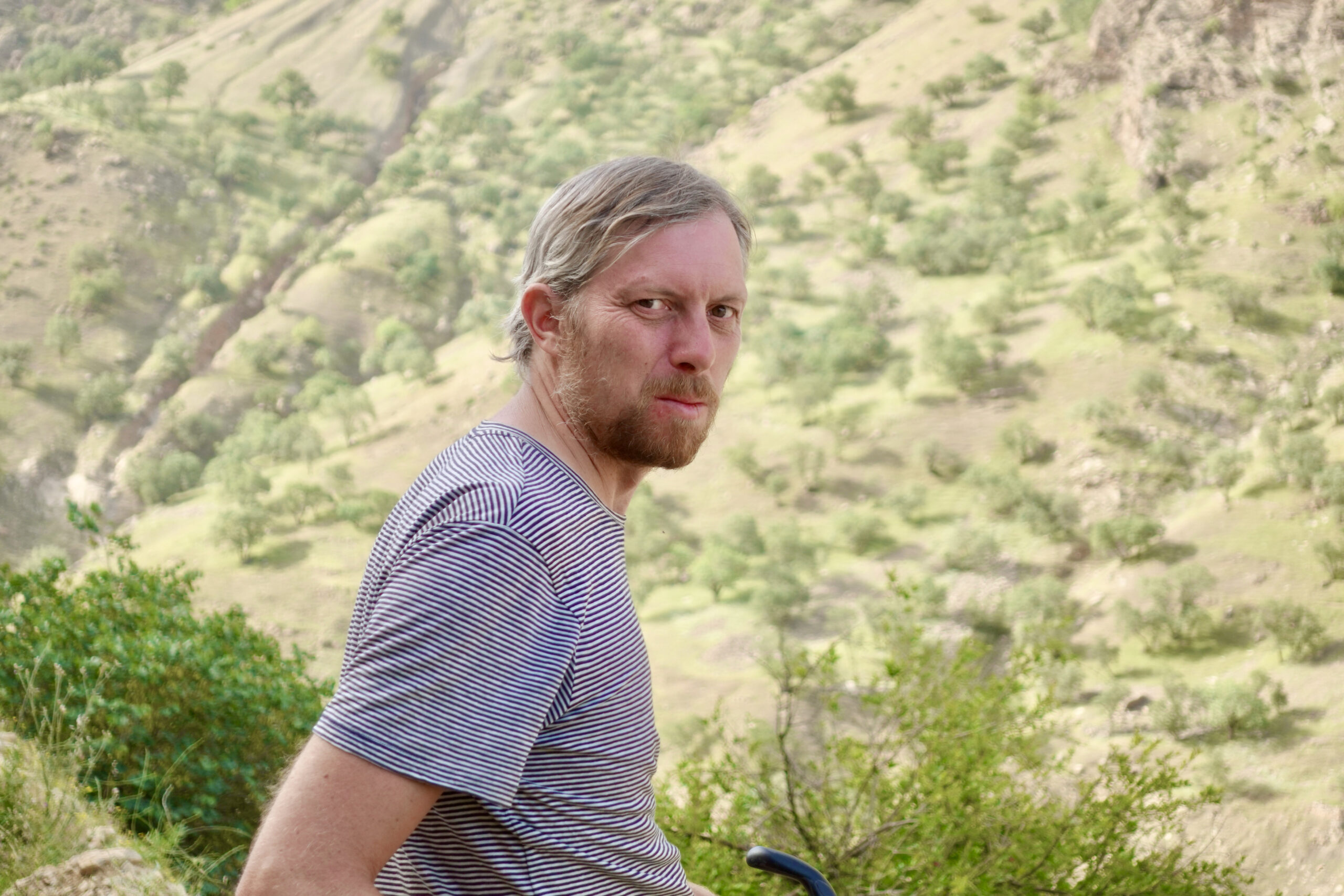
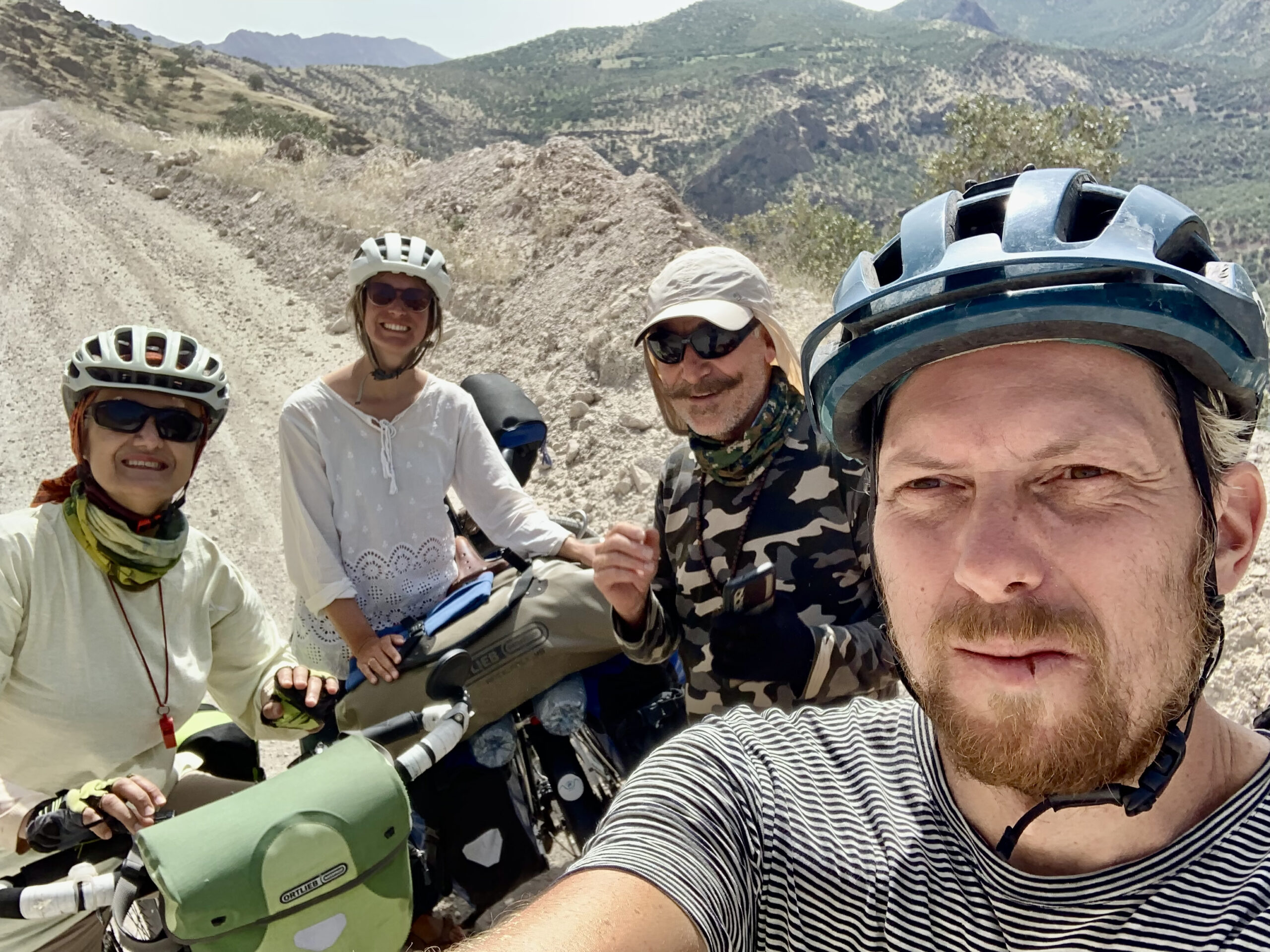
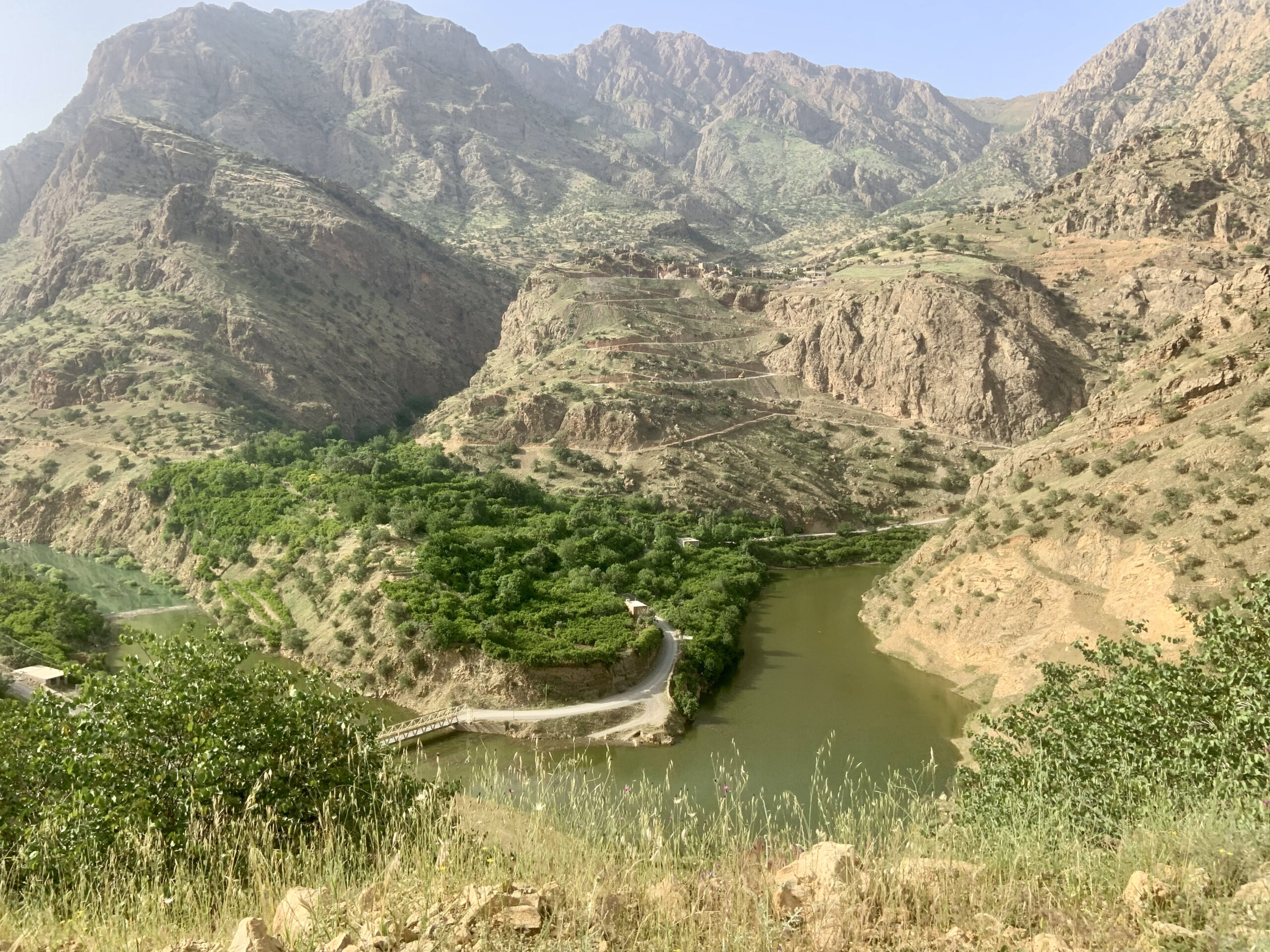
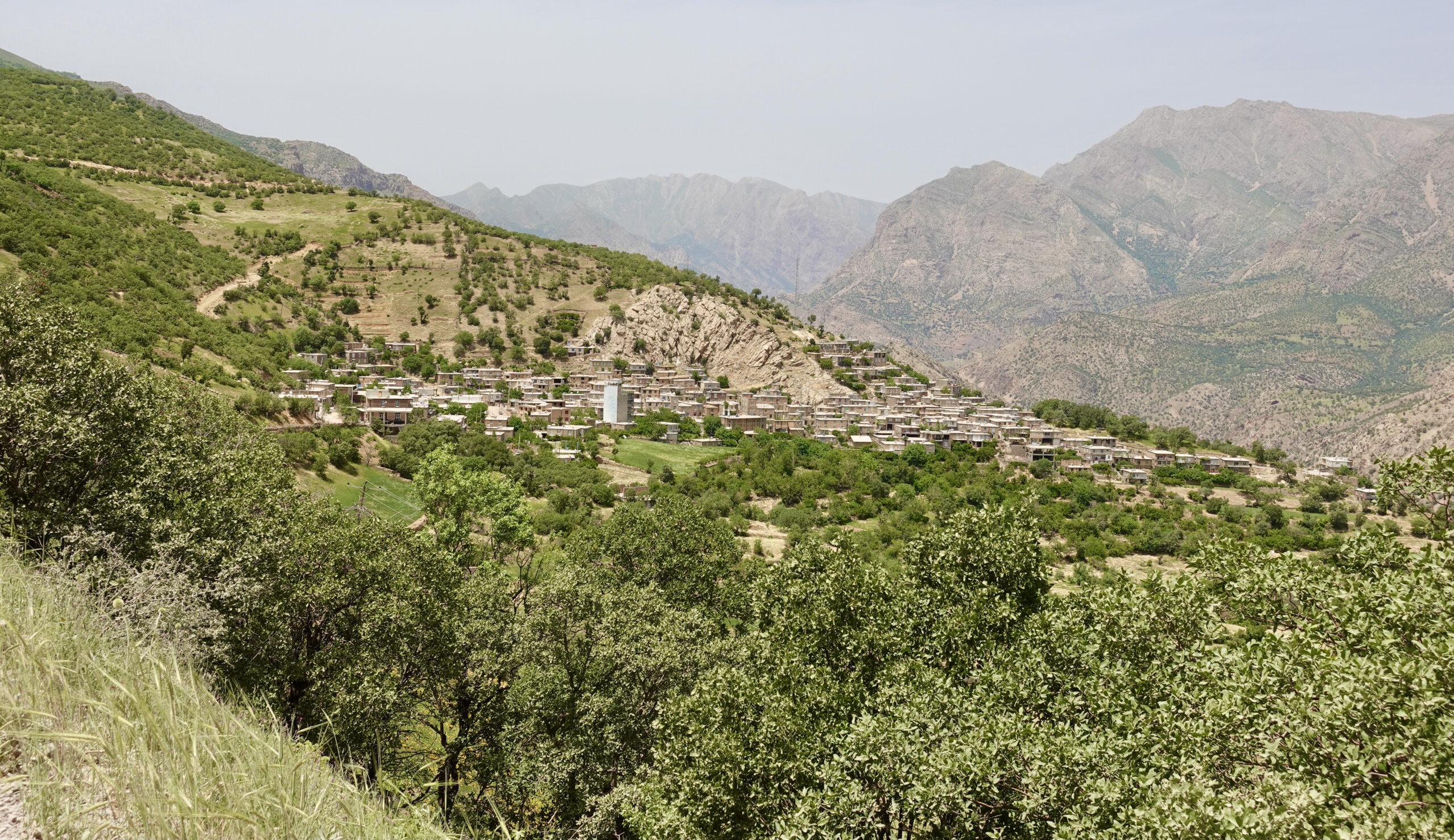
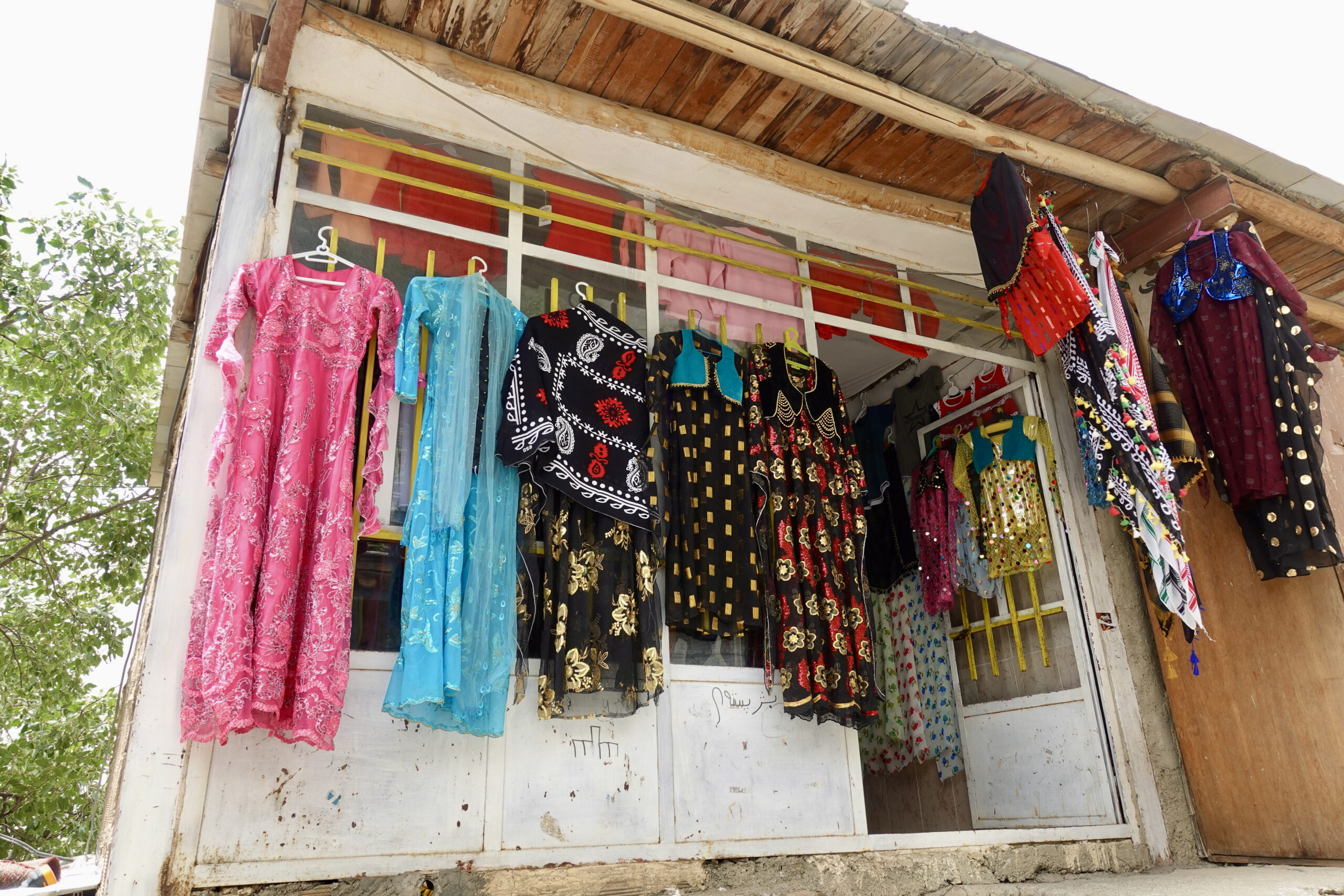
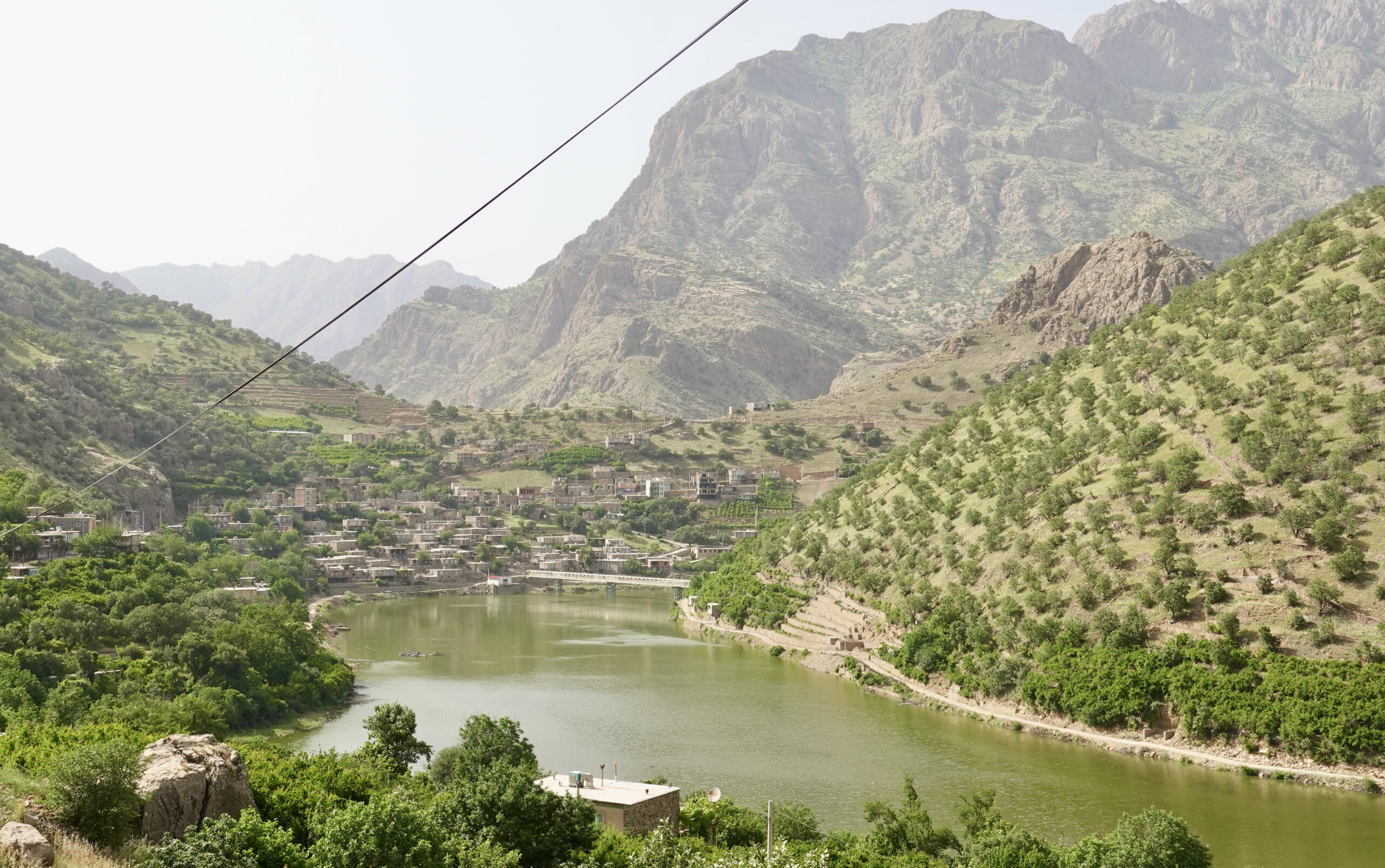
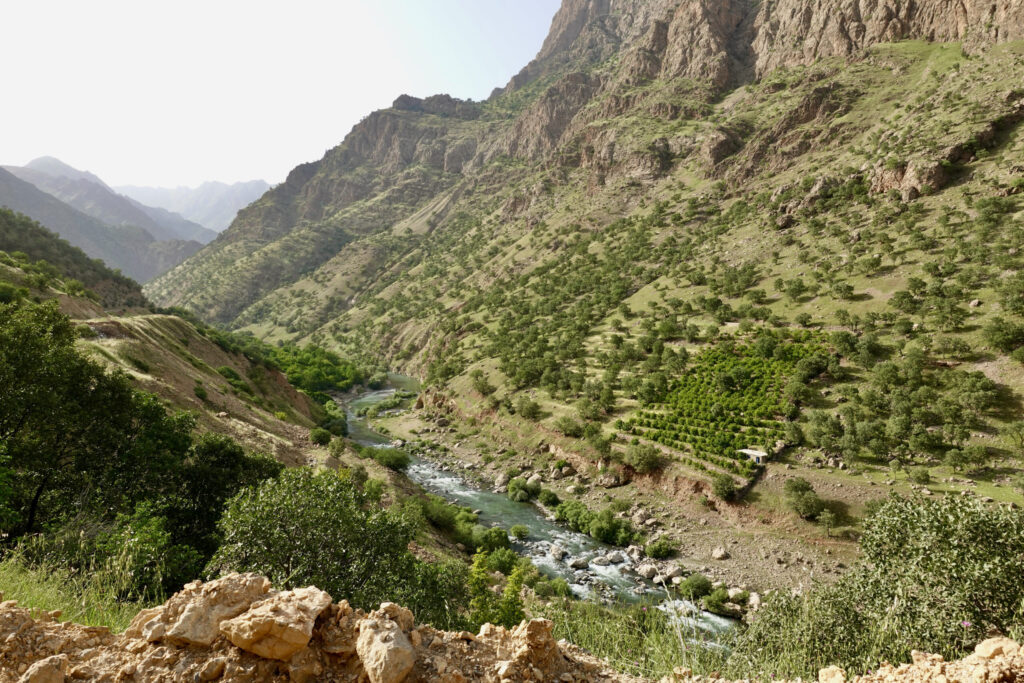
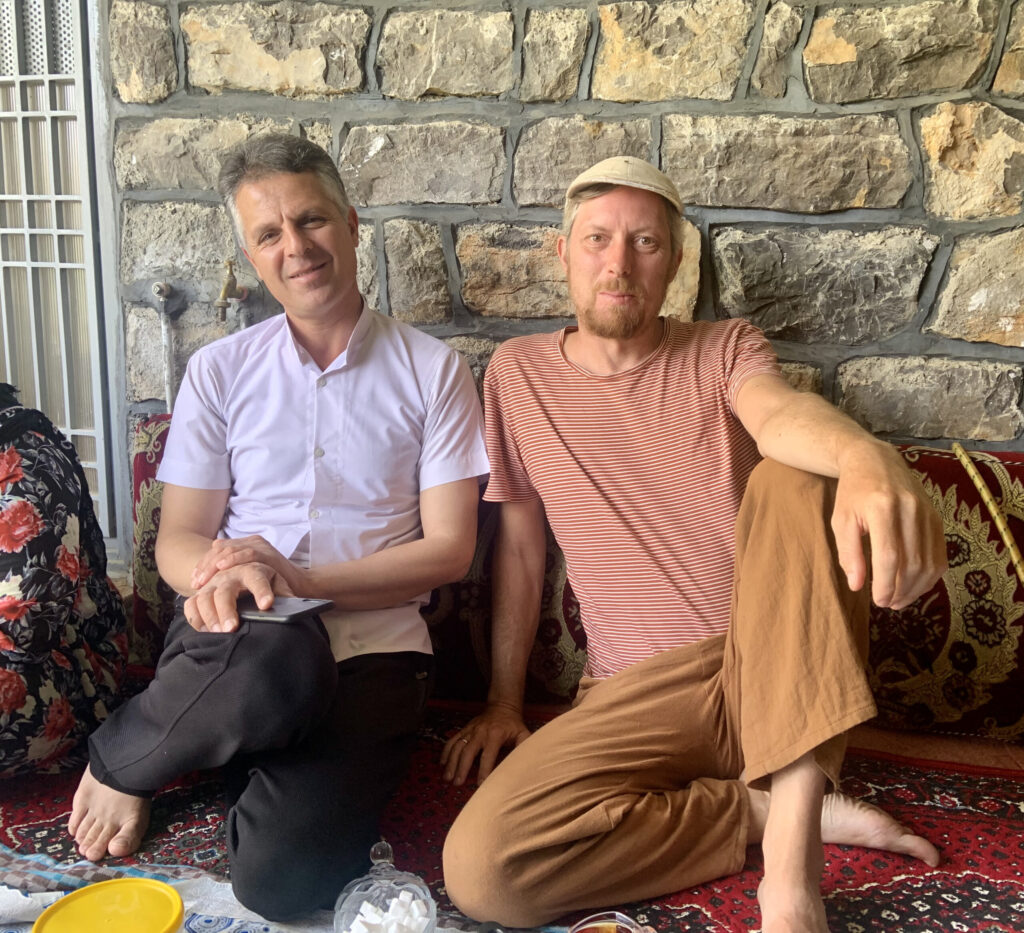
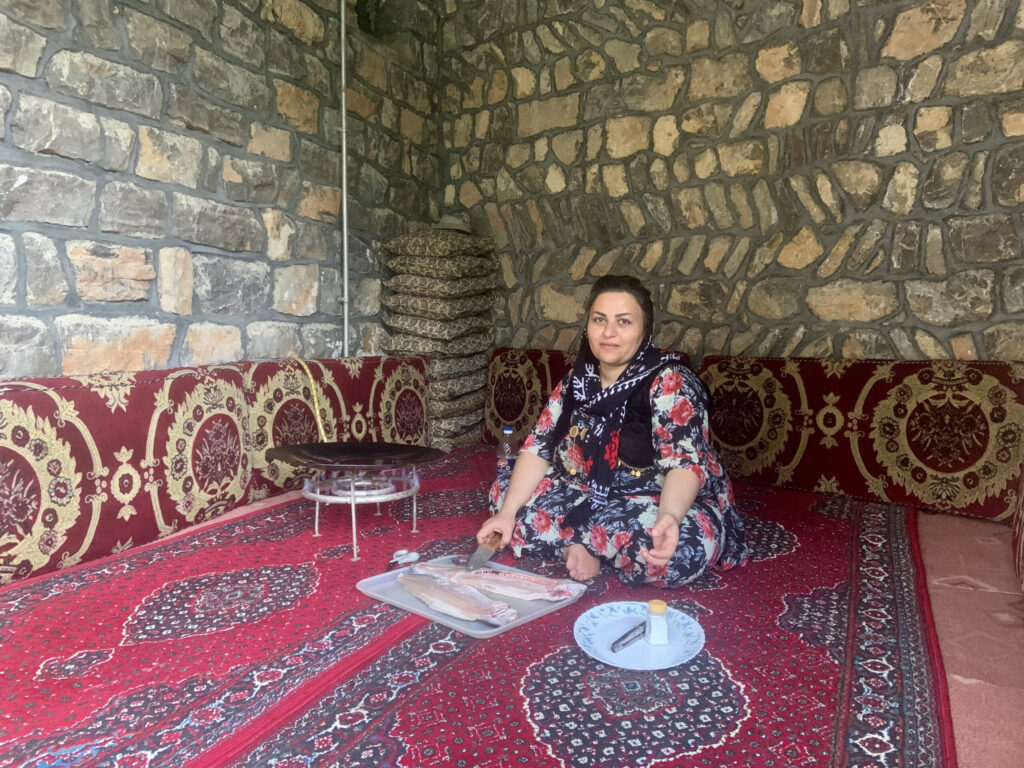
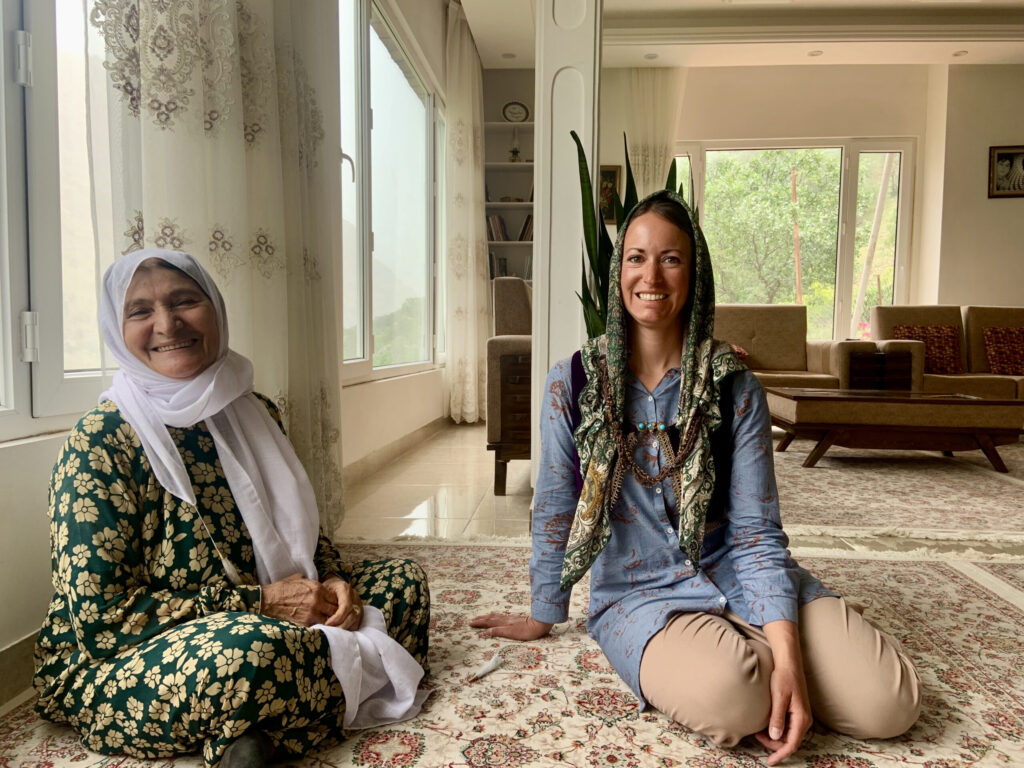
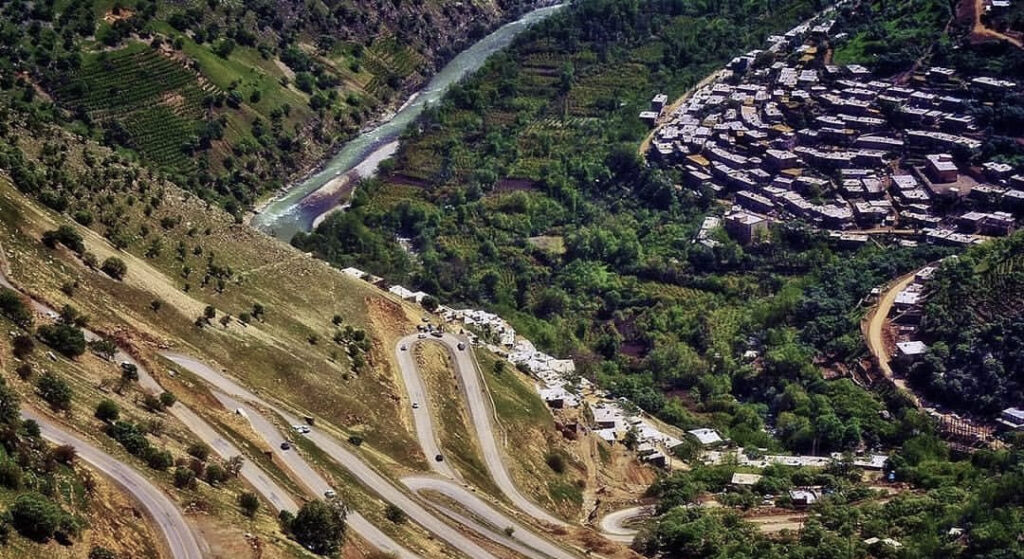
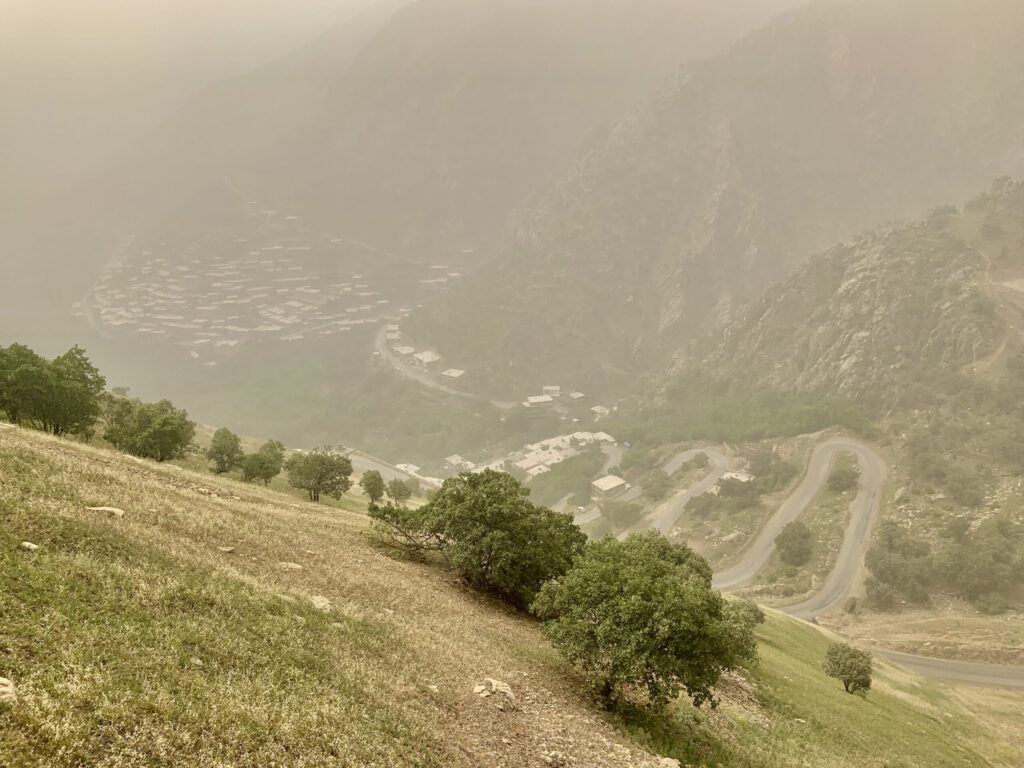
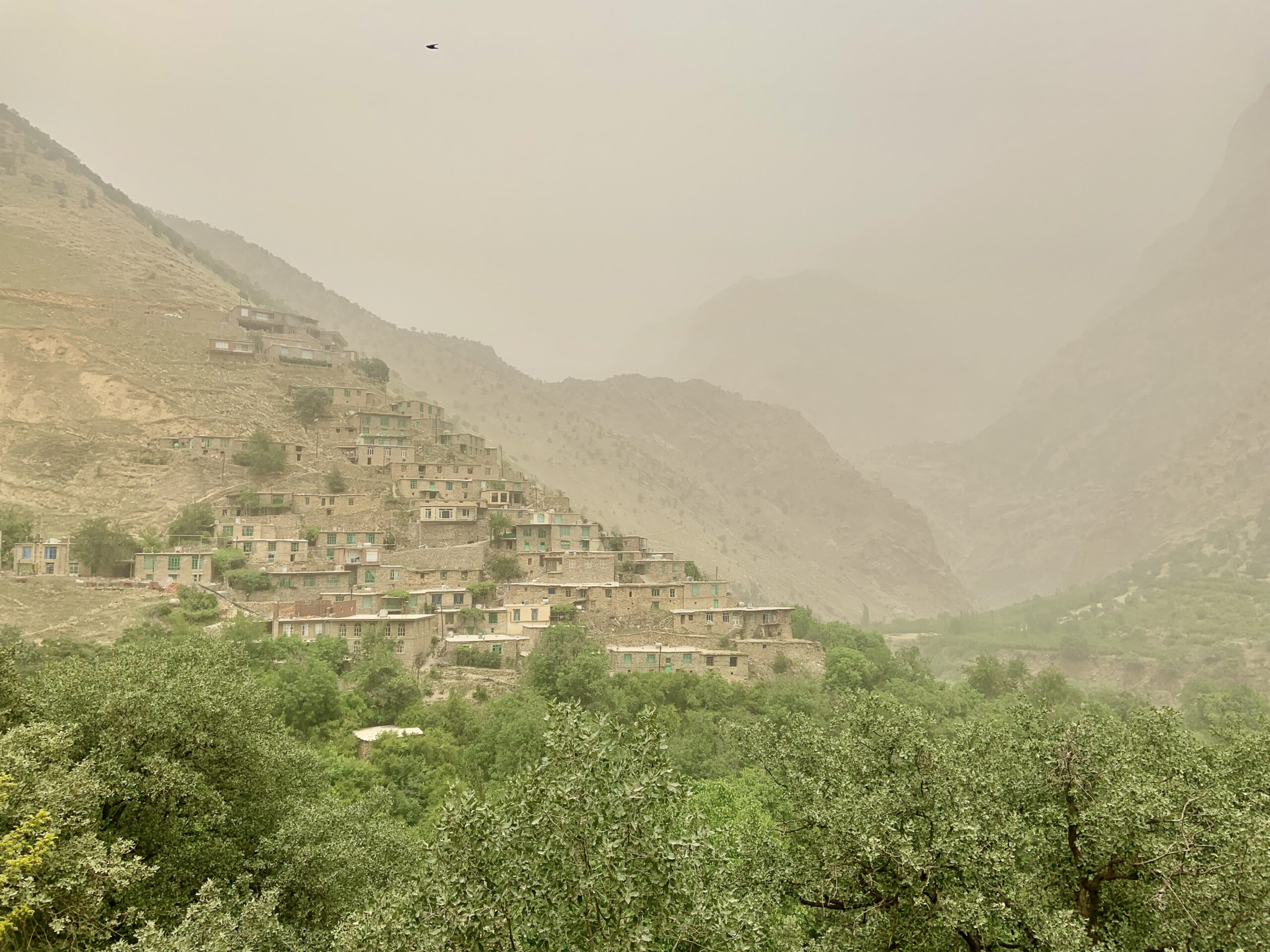
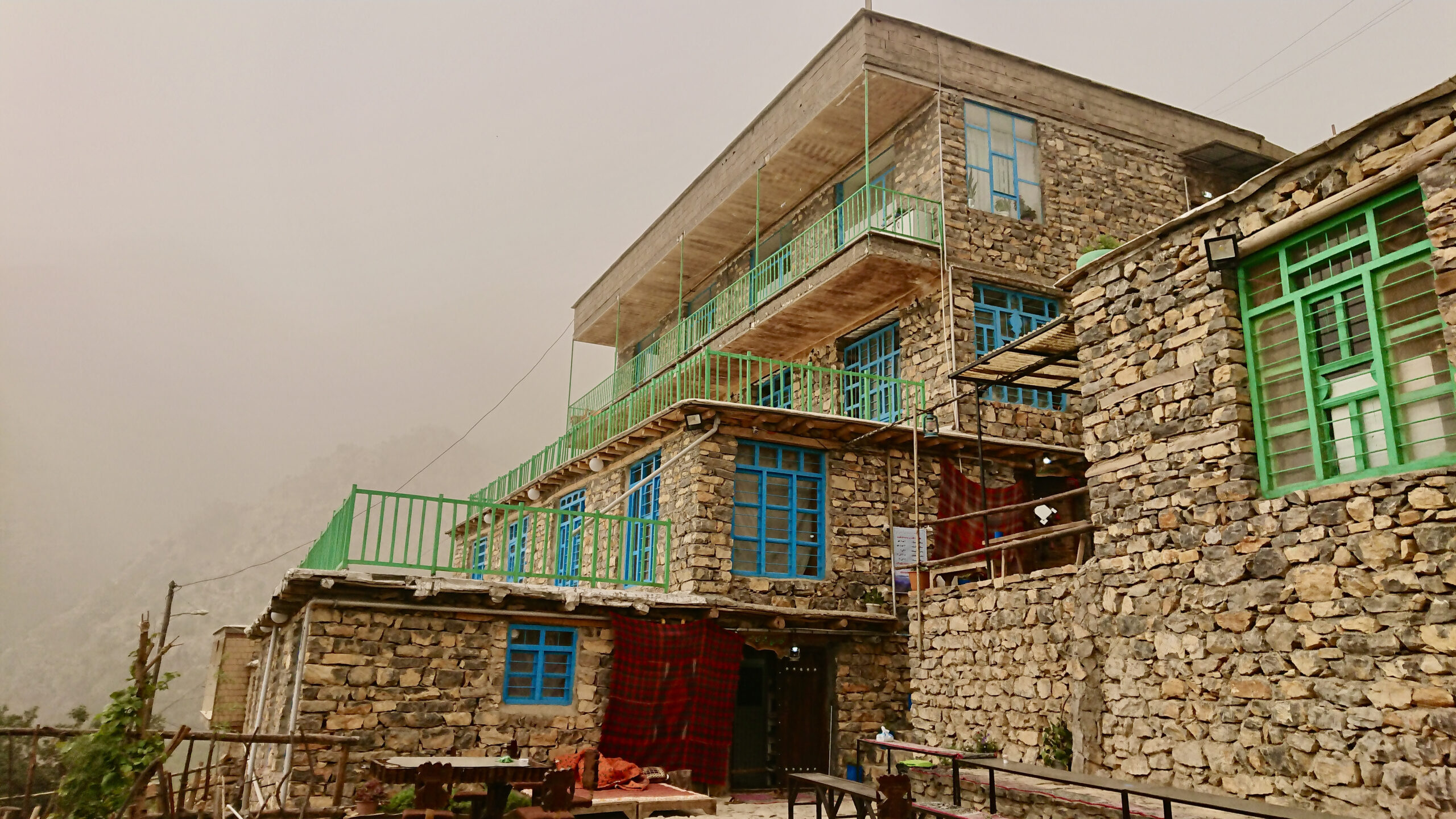
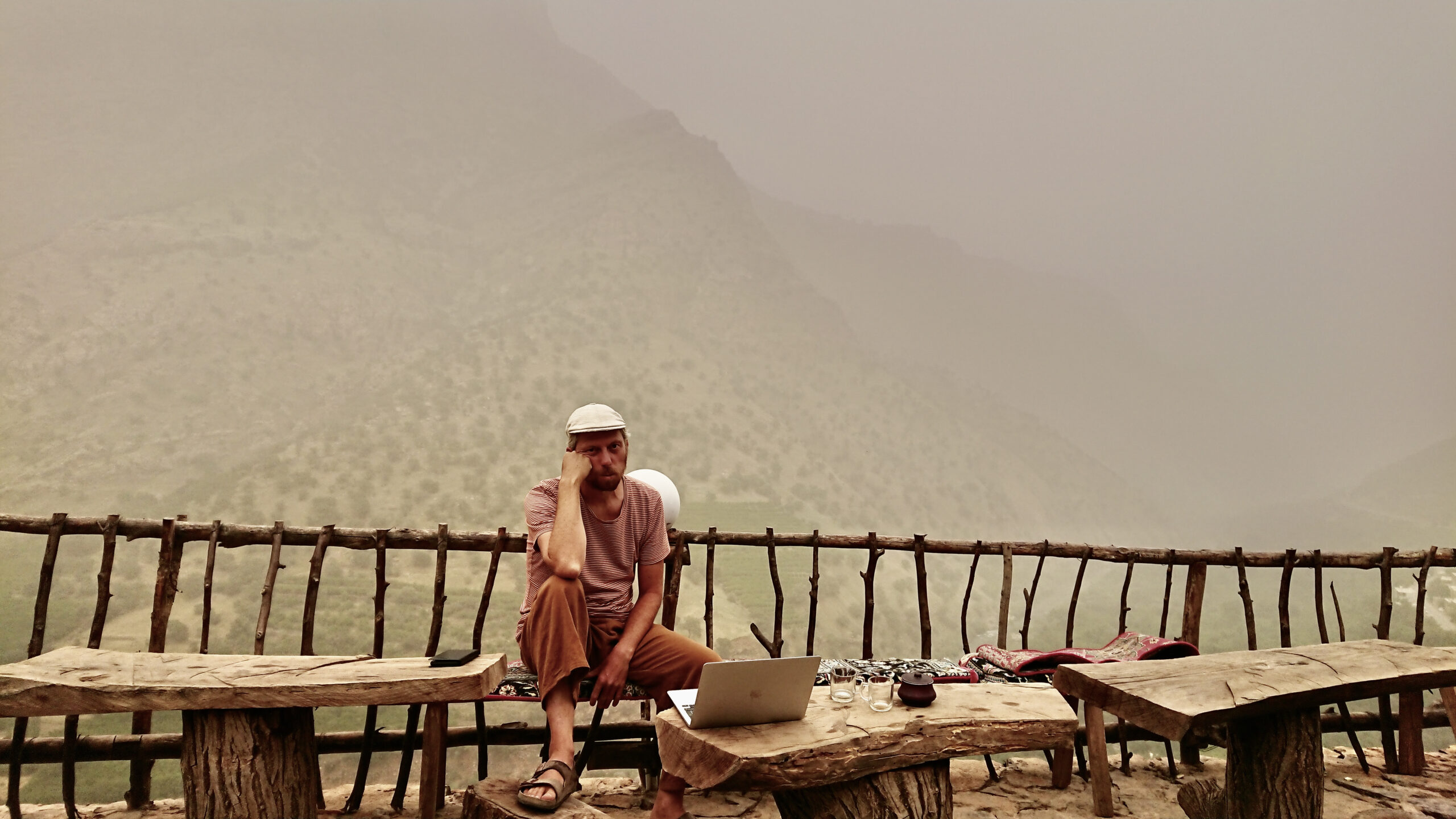
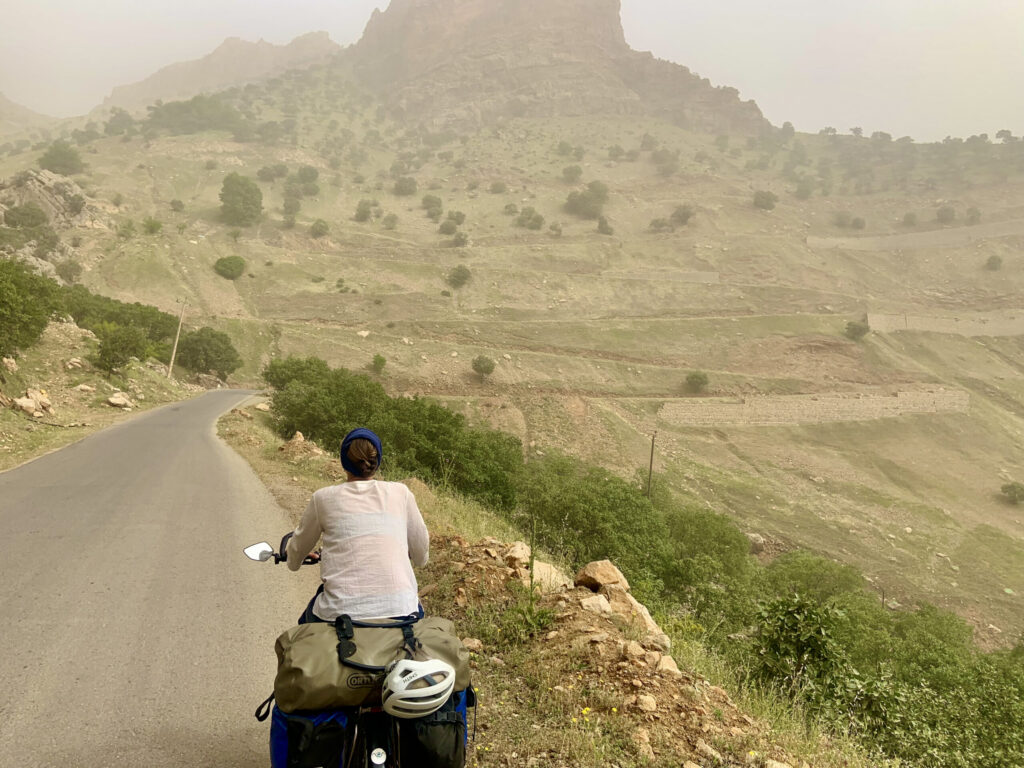
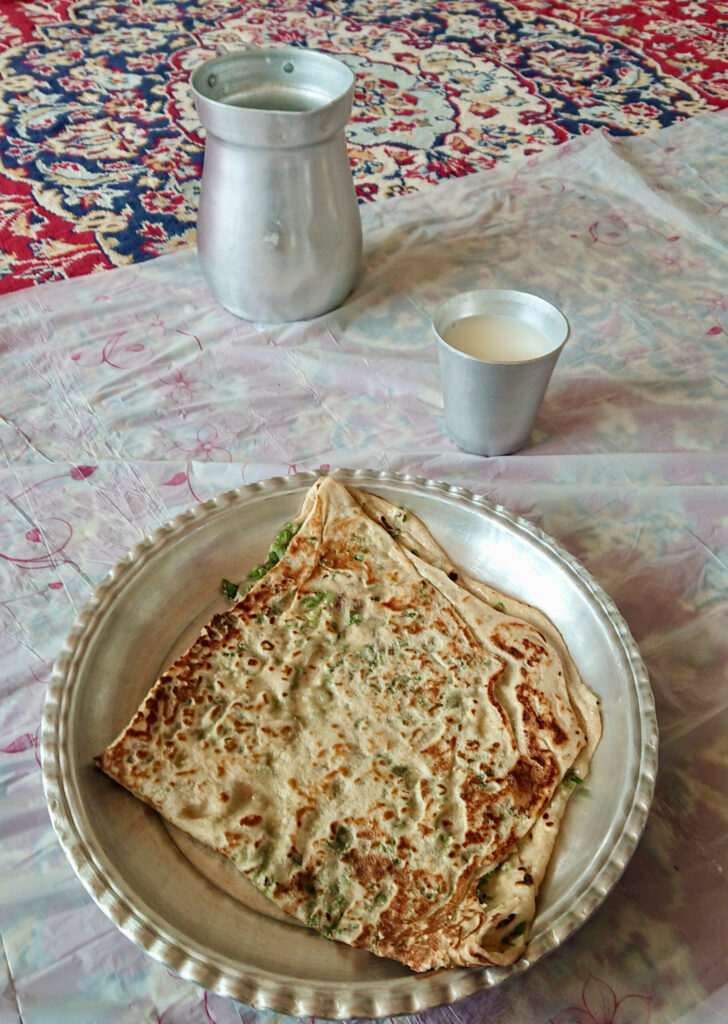
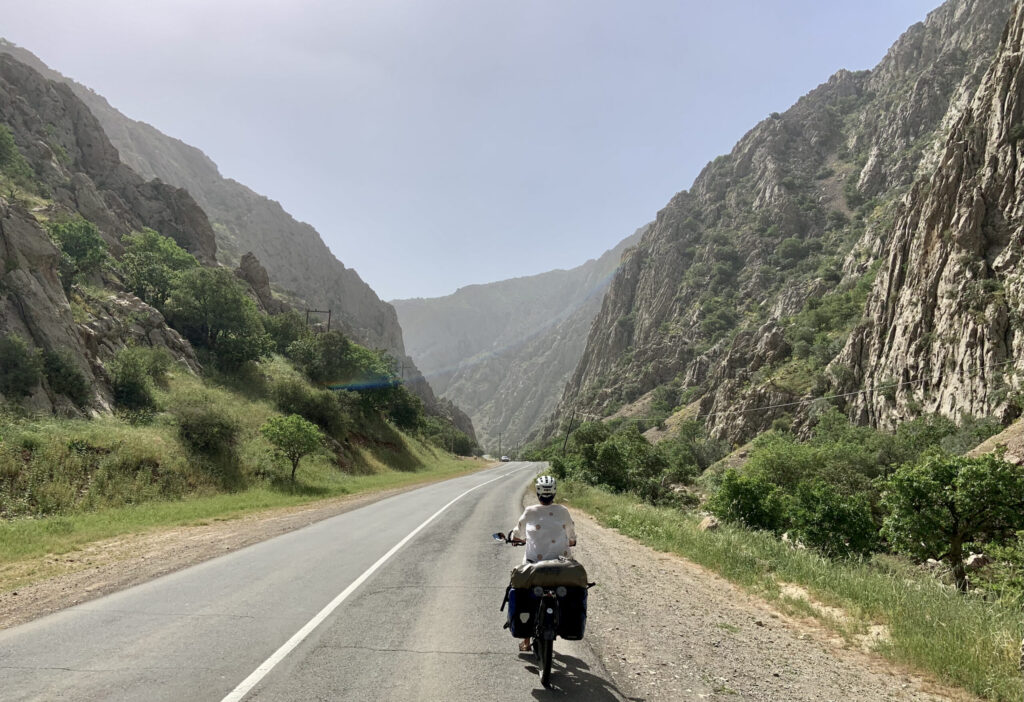
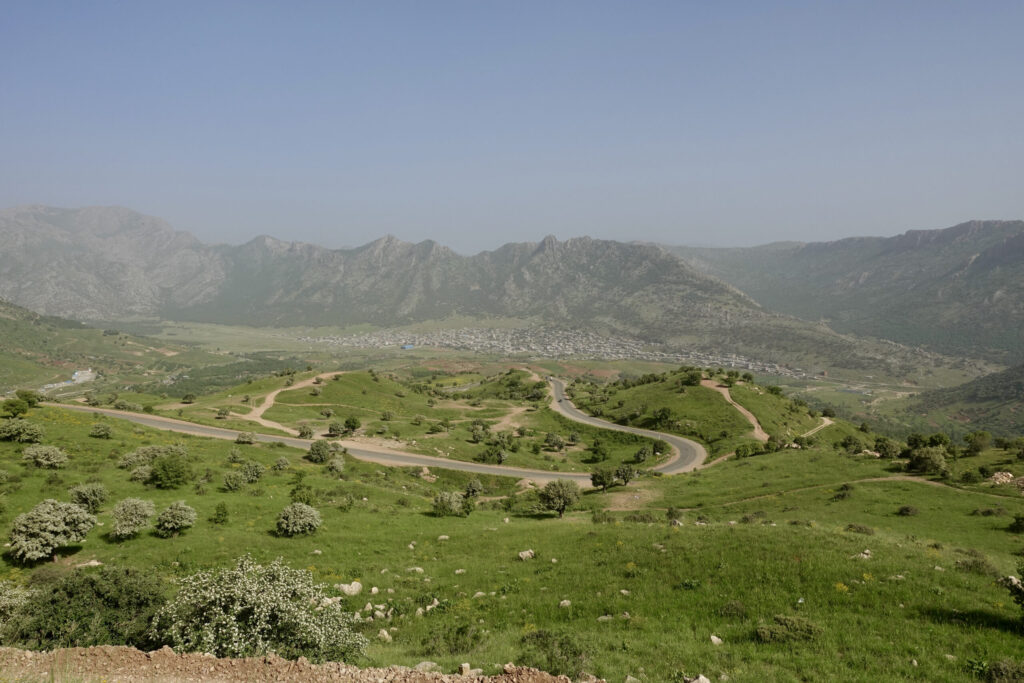
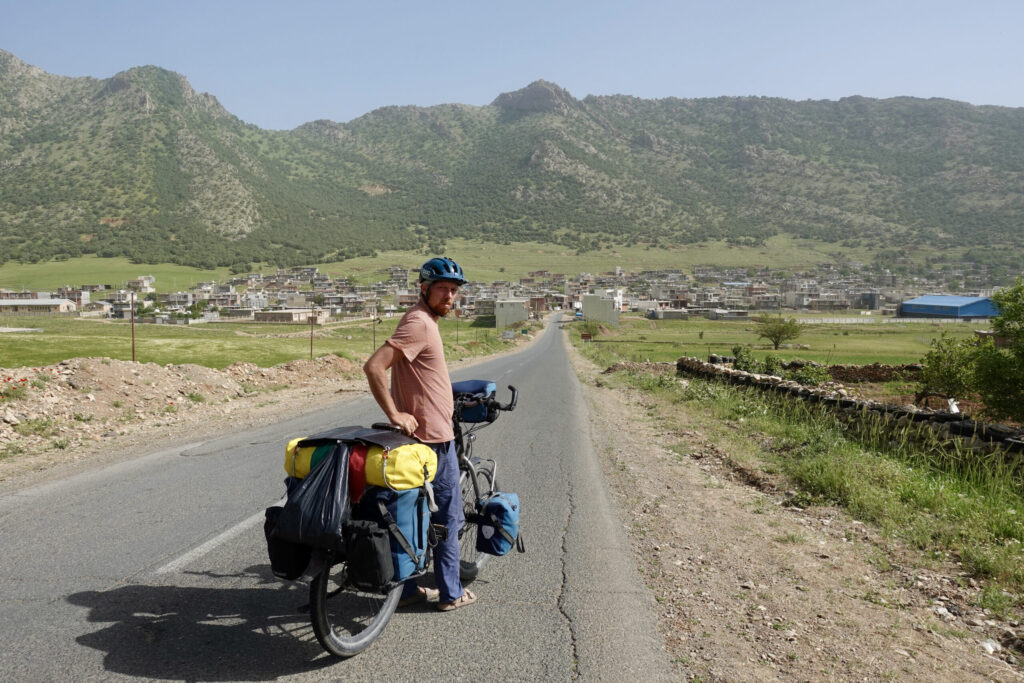
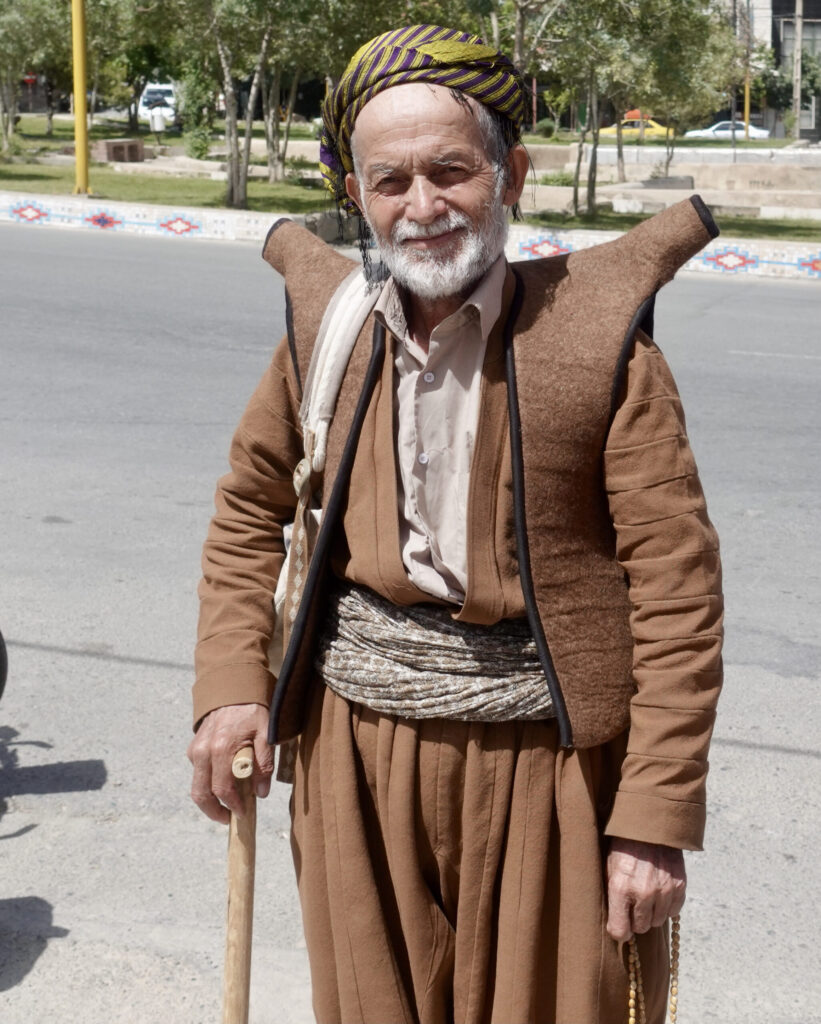
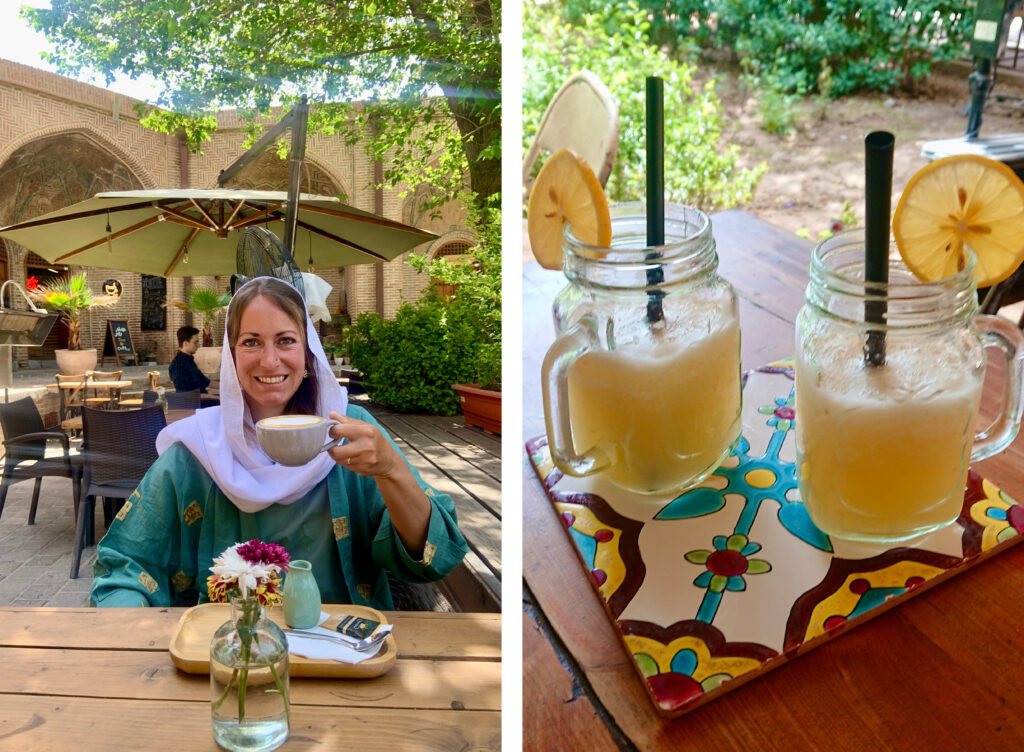
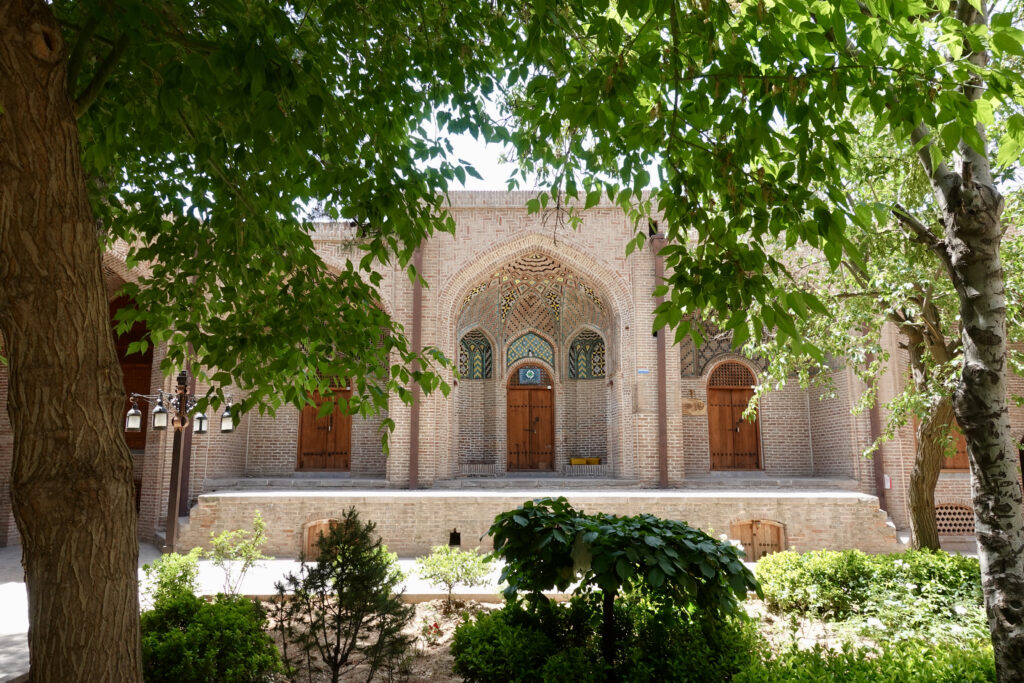
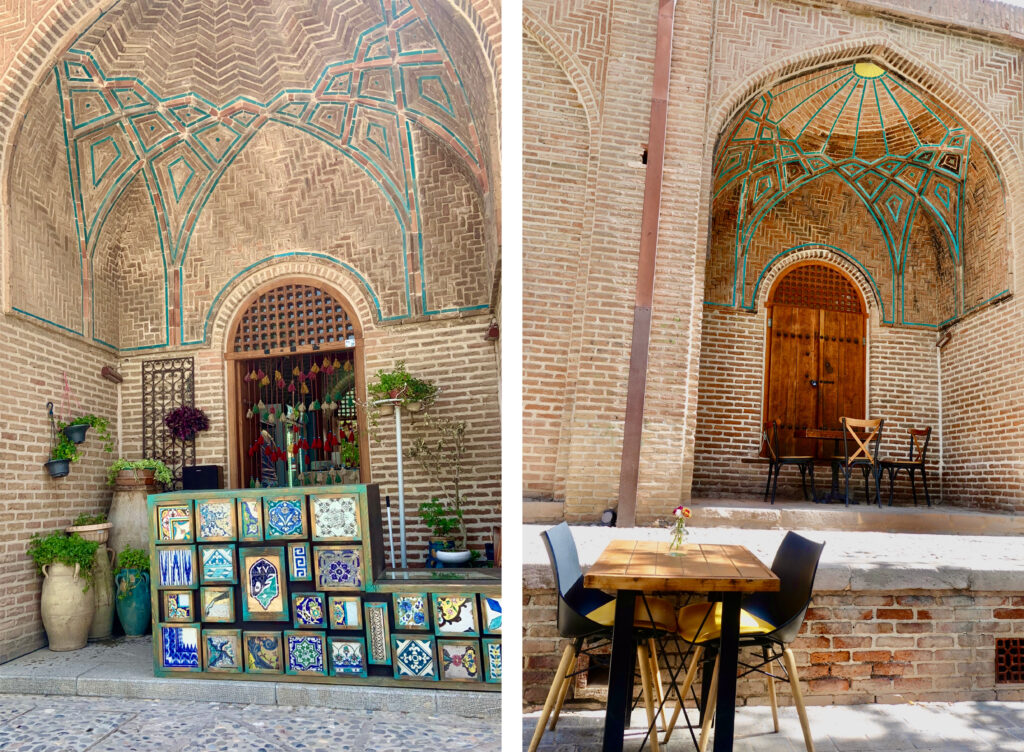
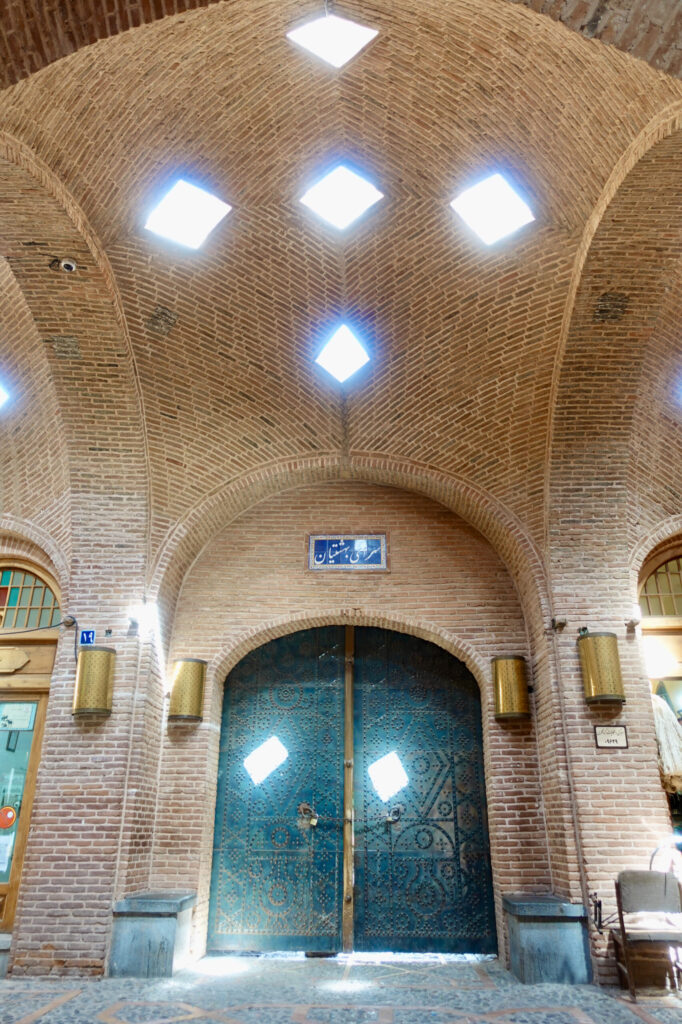
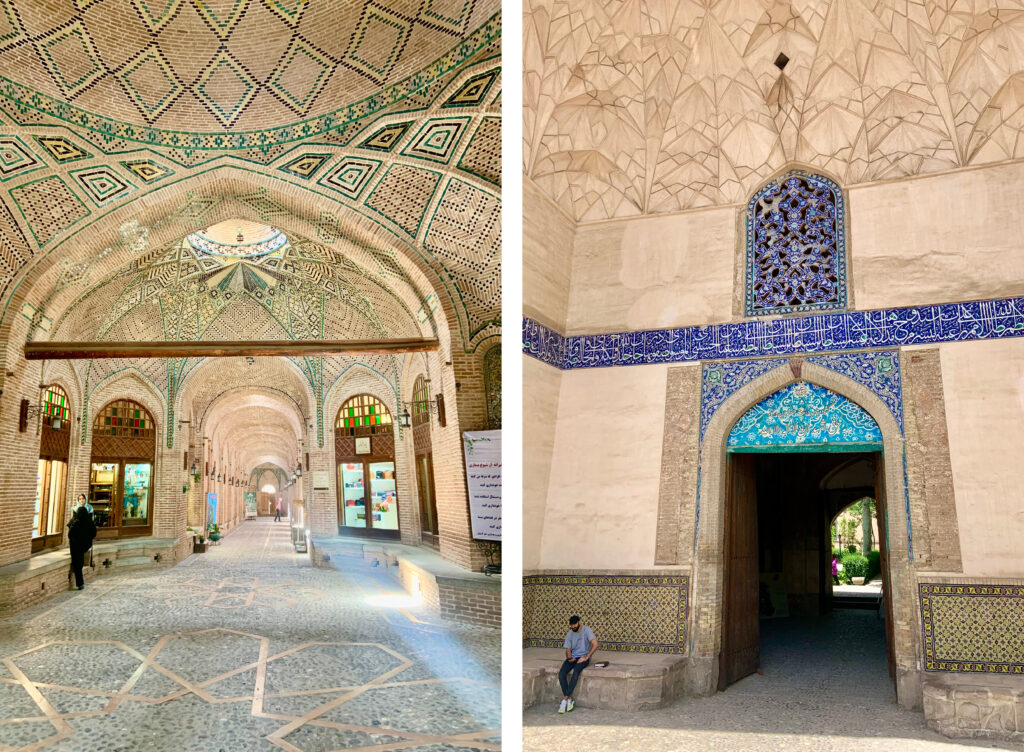
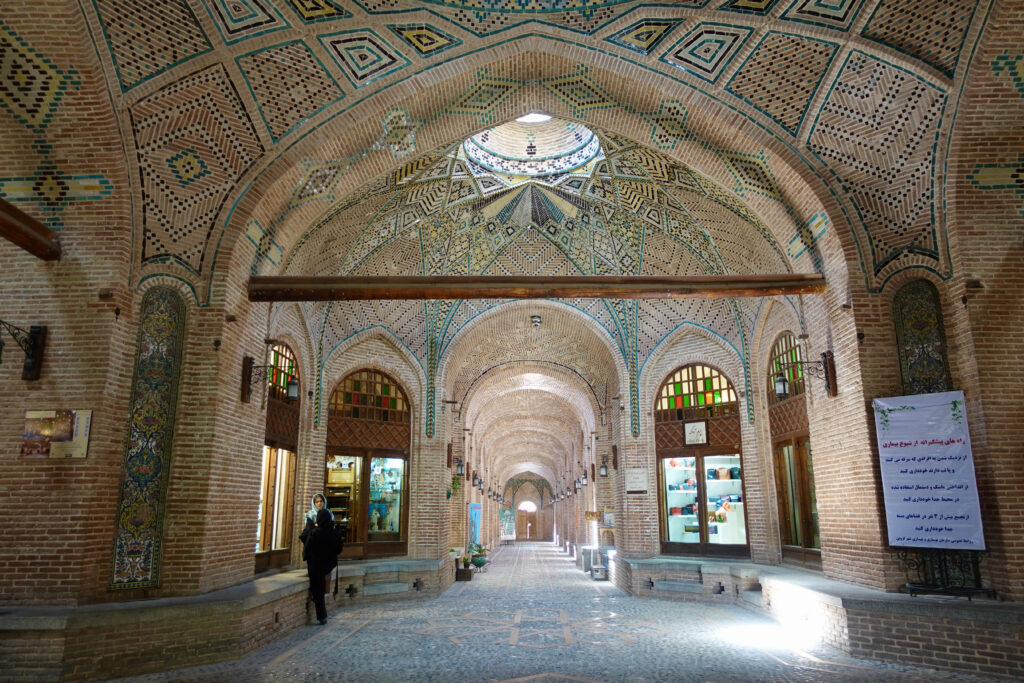
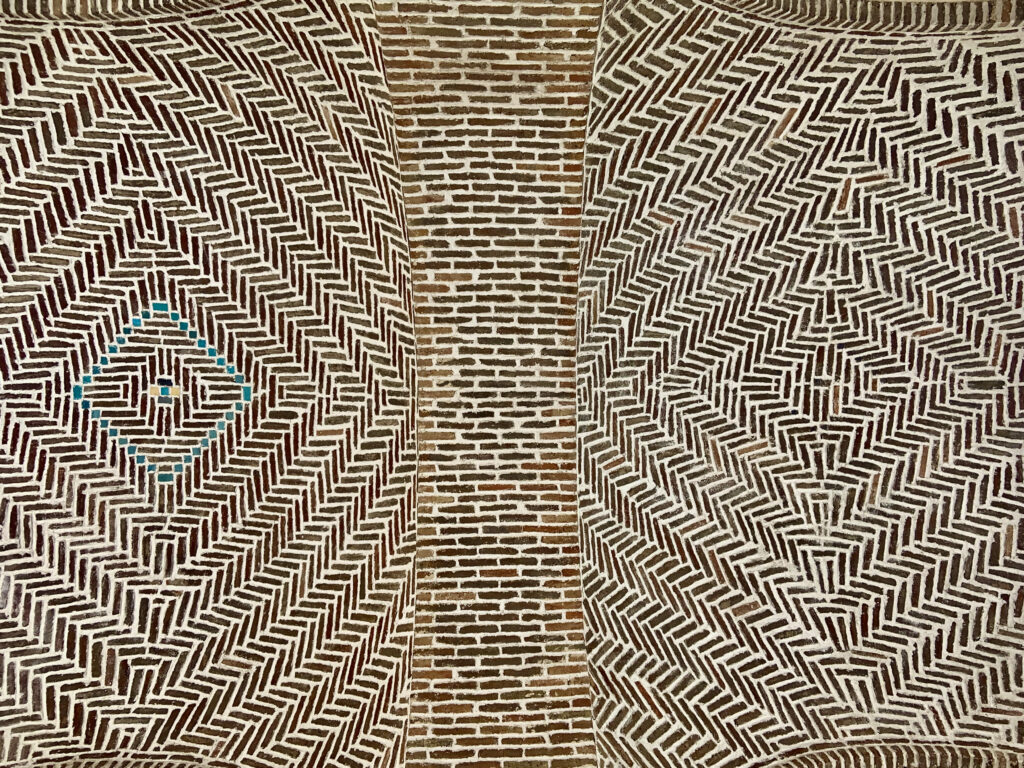
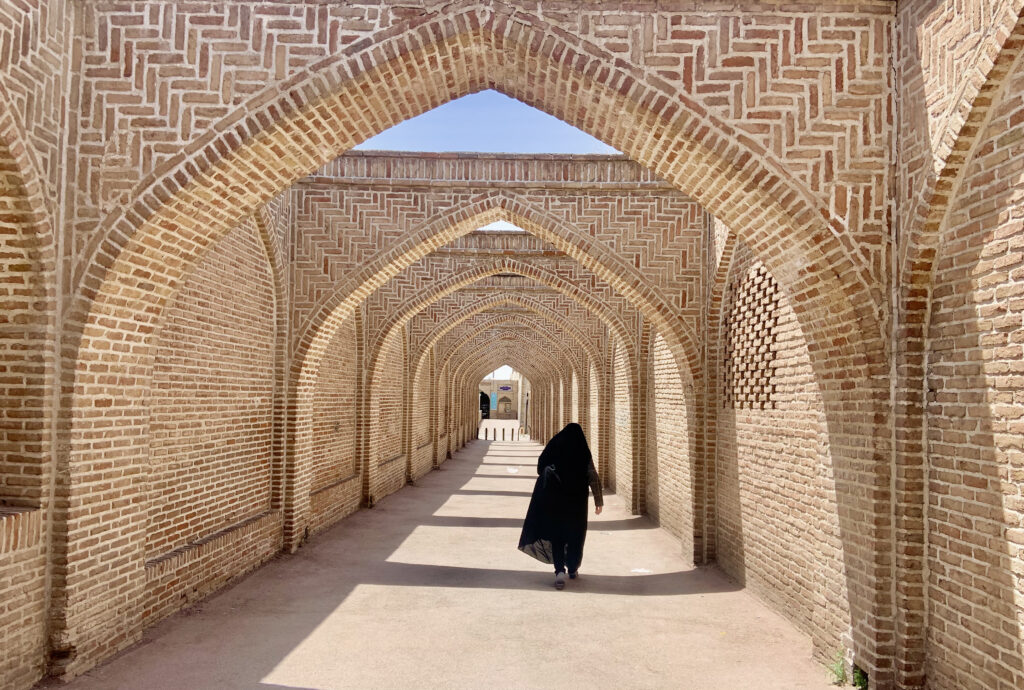
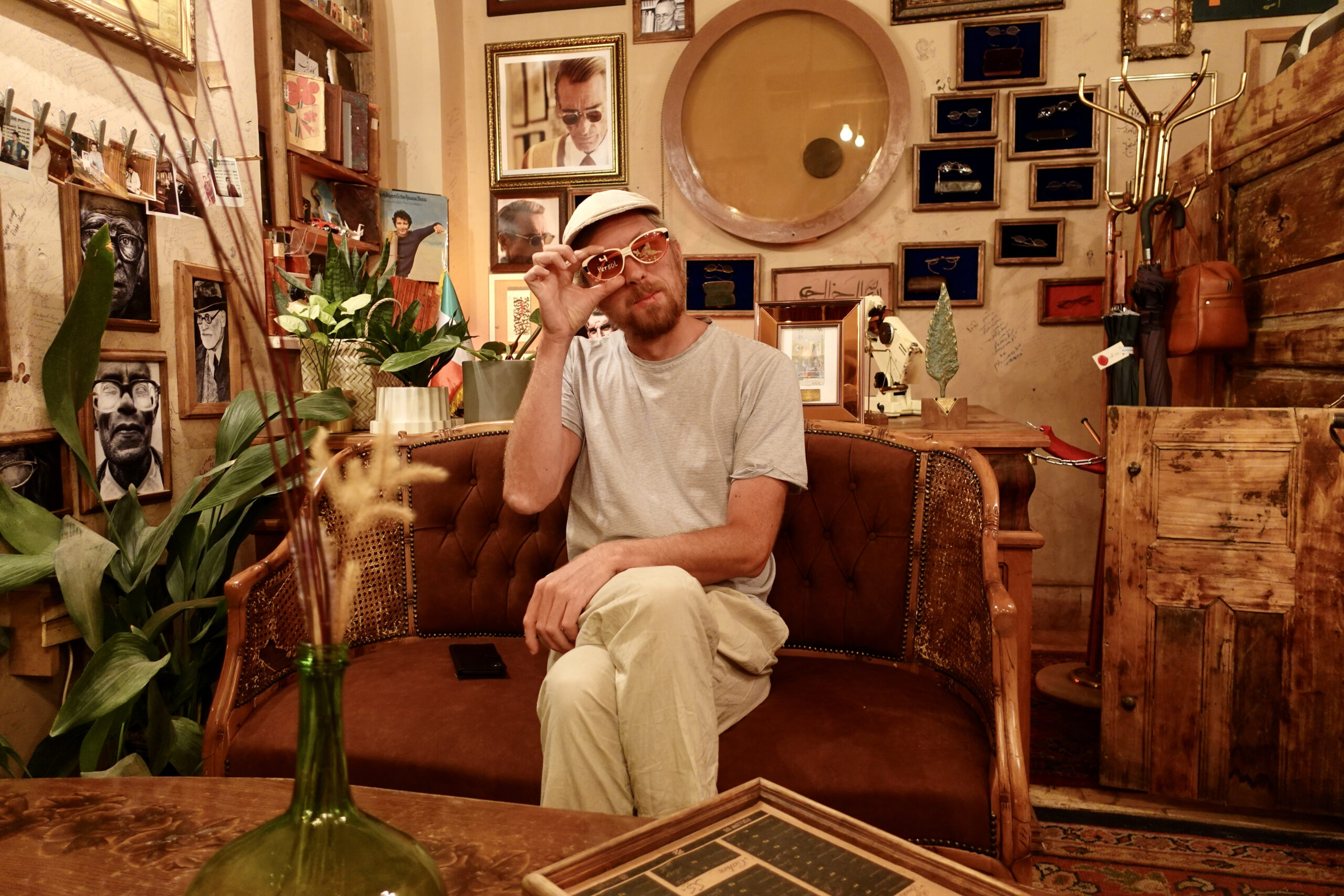
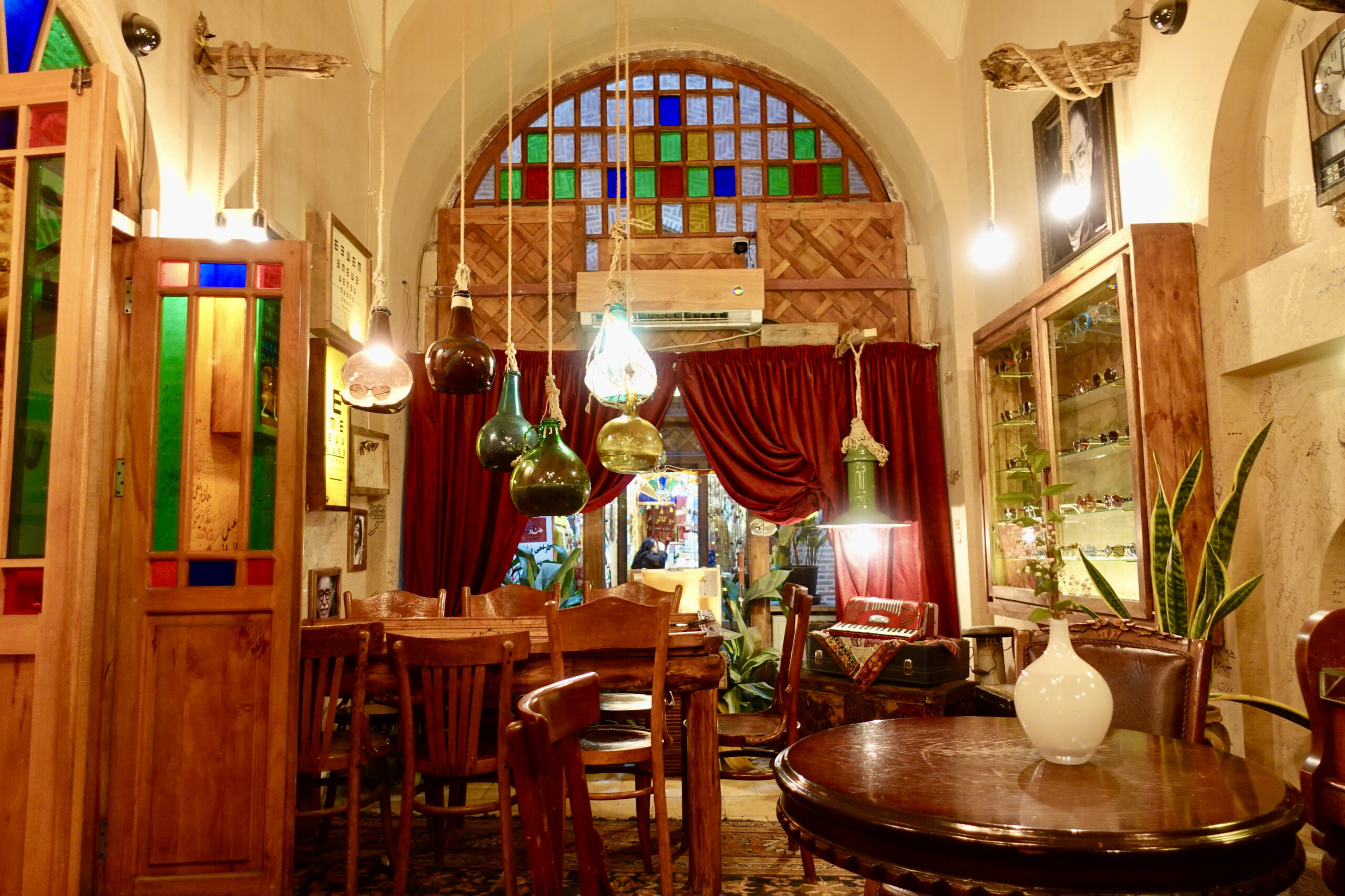
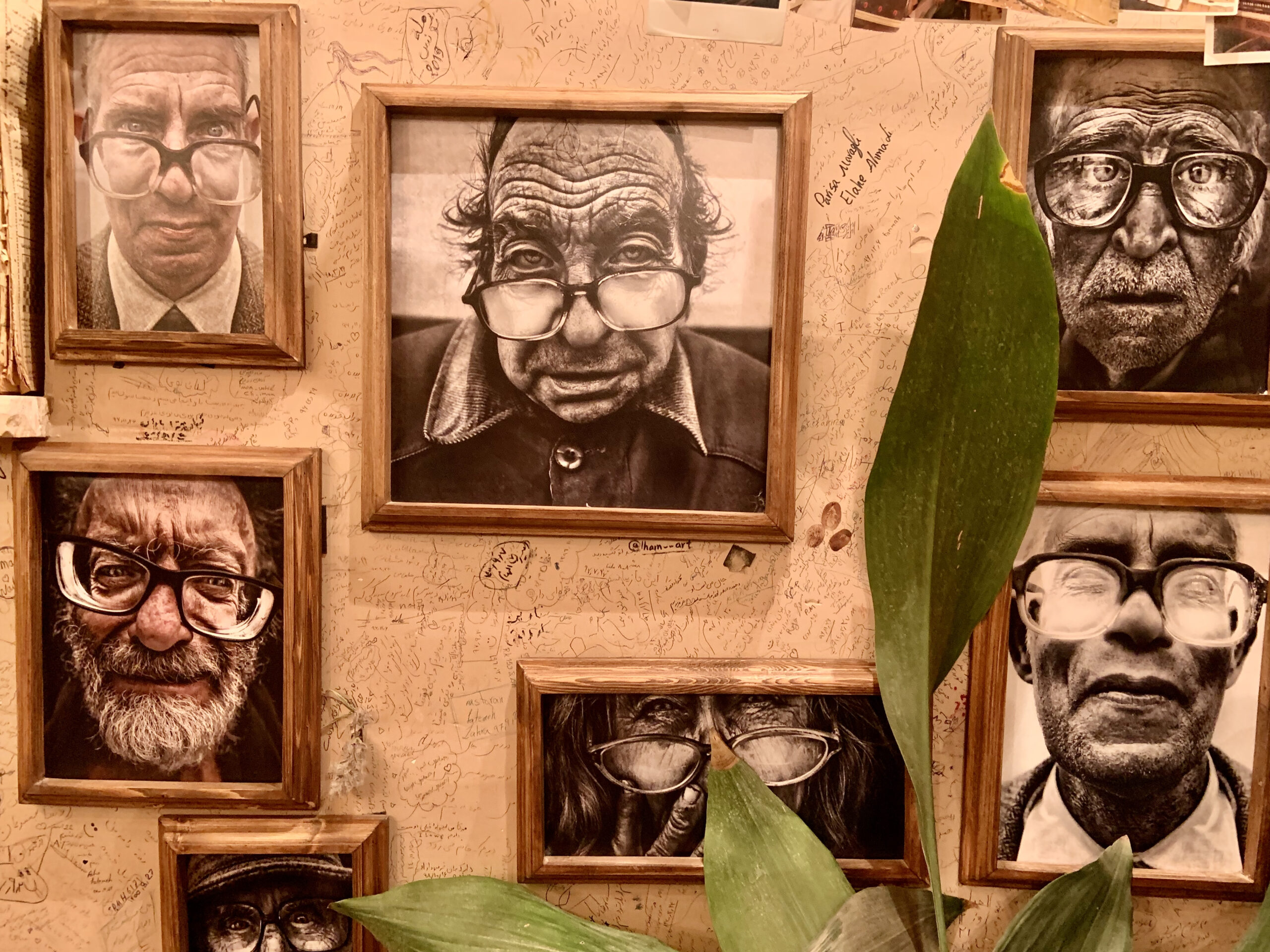
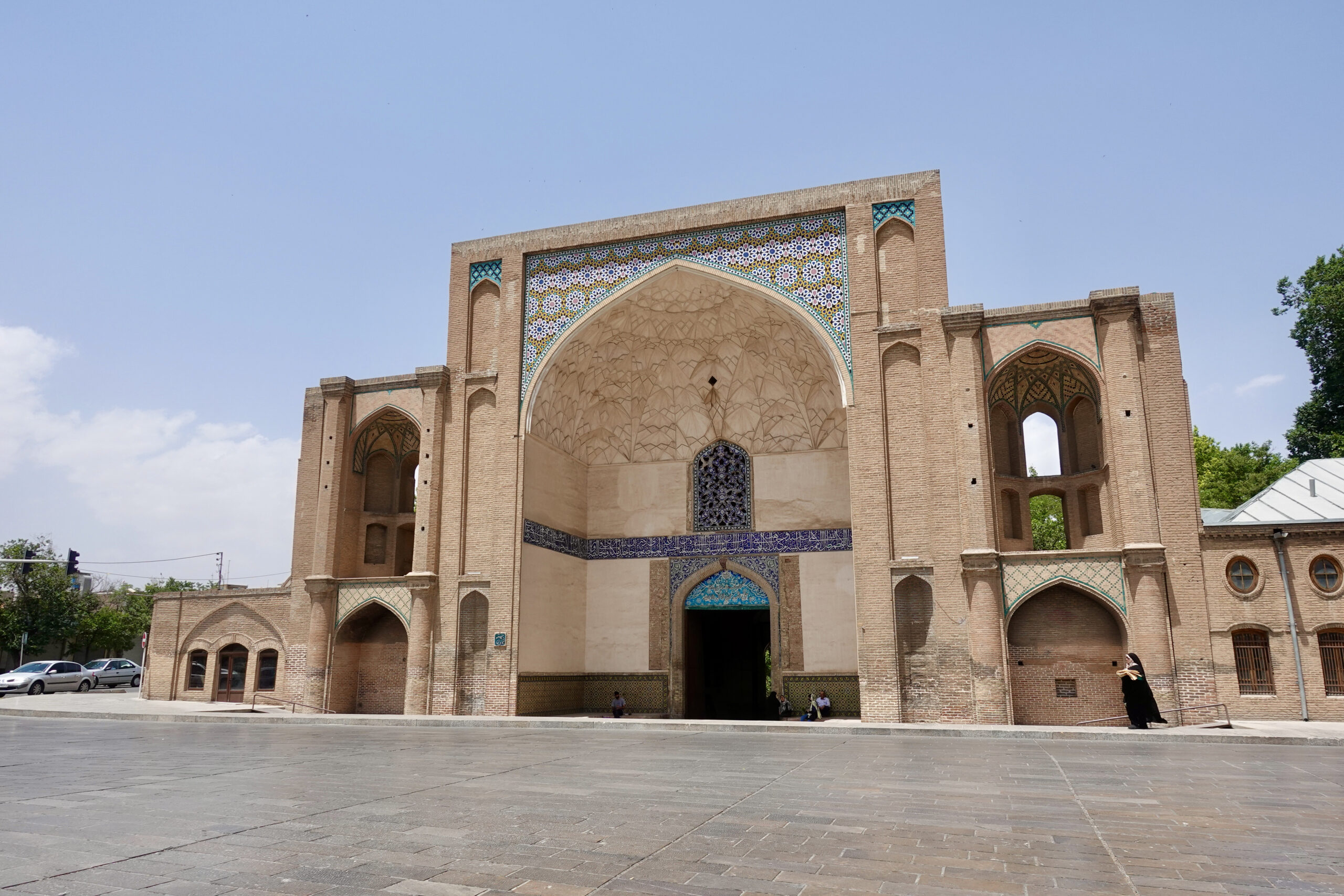
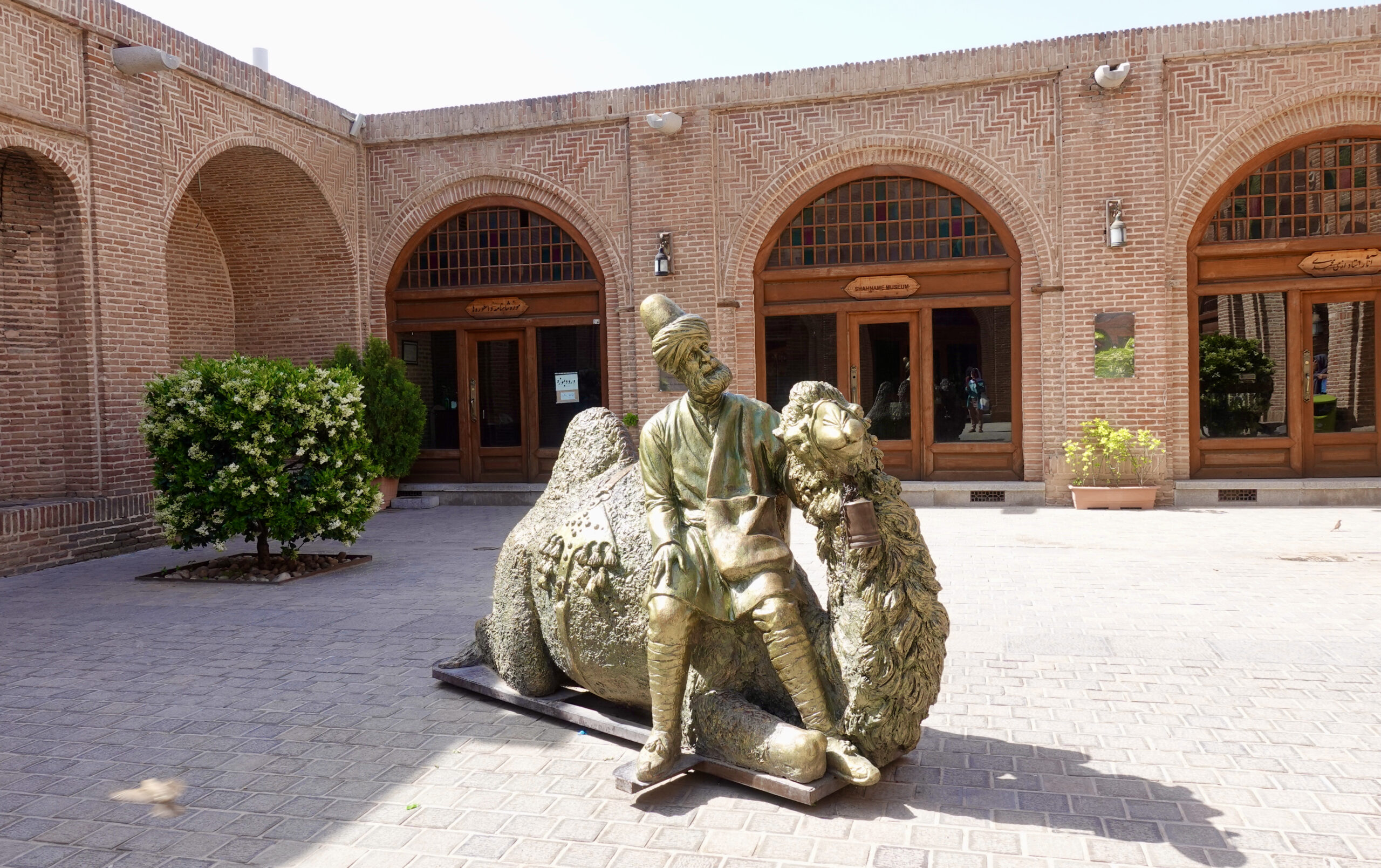
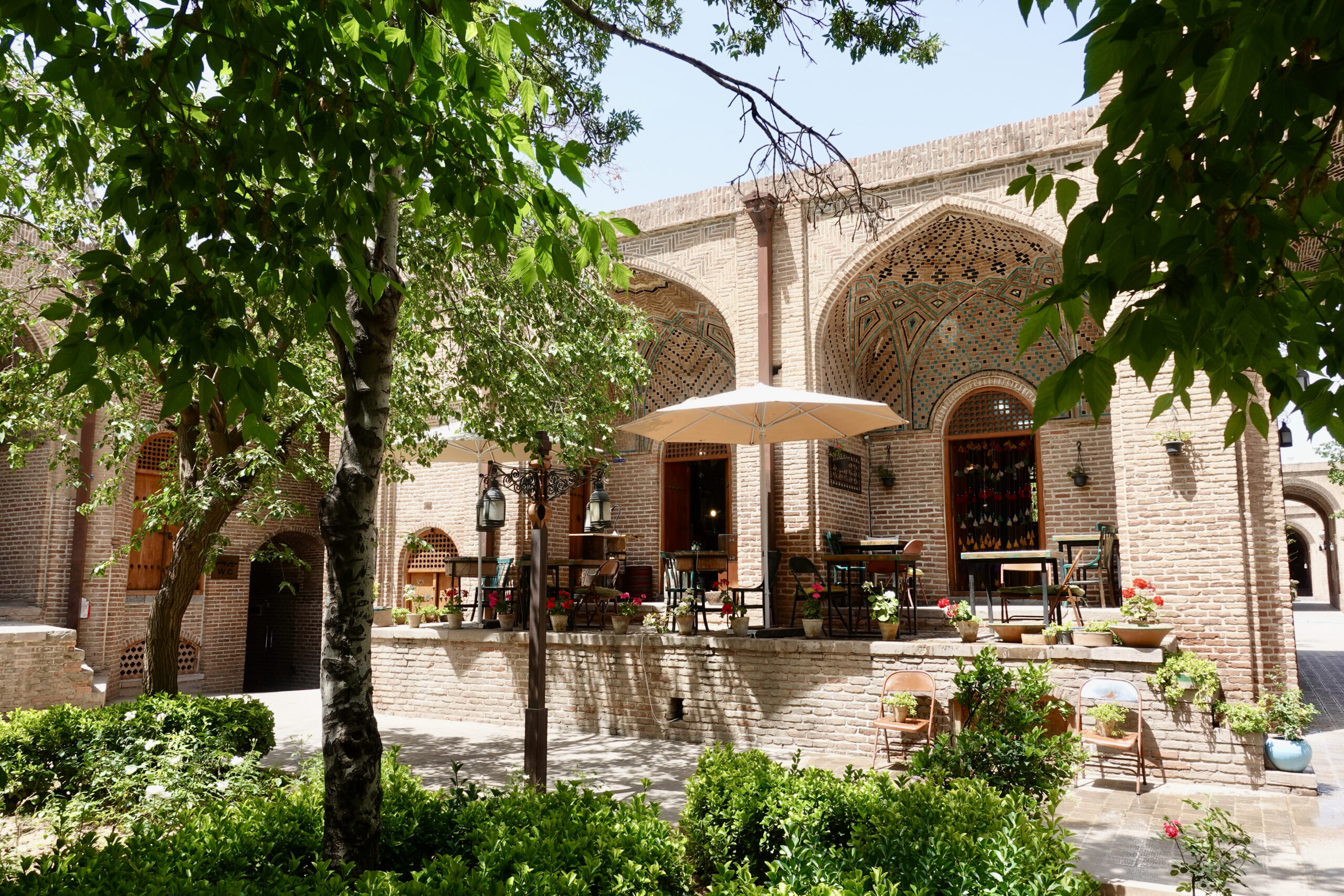
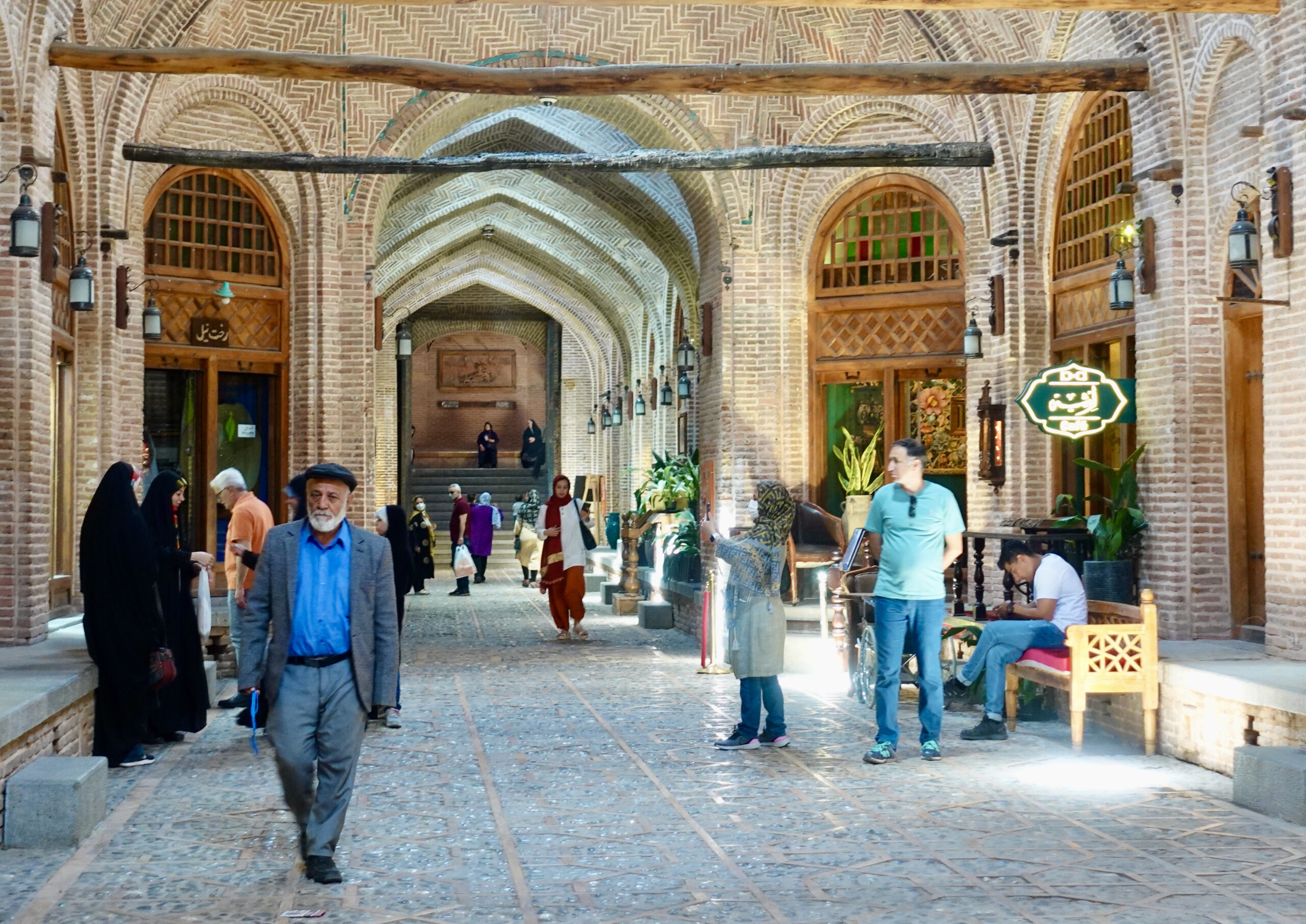
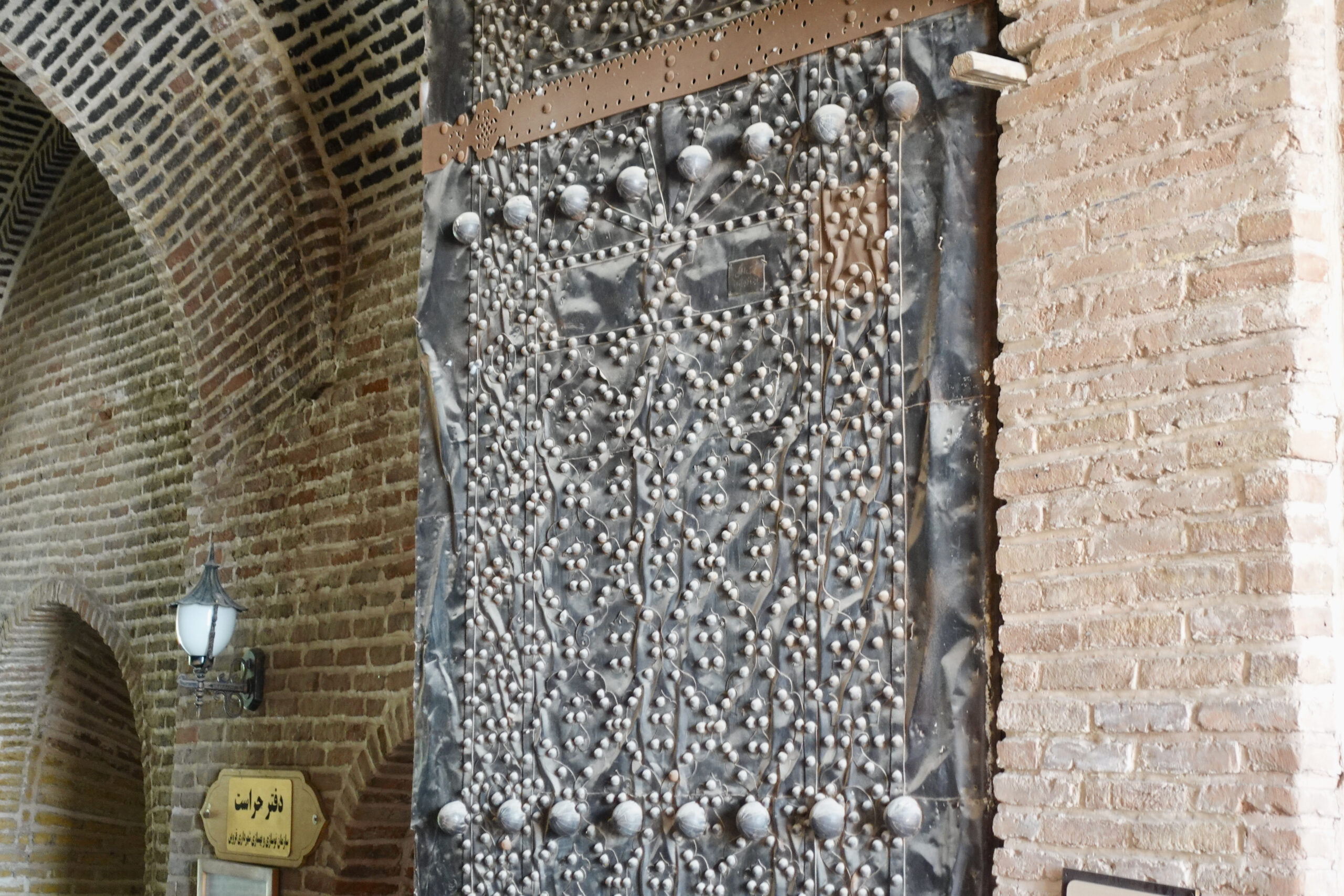

Leave a Reply